A bit of a falsehood for my first posting on this thread :) --(however i promise that my next posting will be of a trip to view alpines at sea level --then into the mountains proper).
I thought members might be interested in seeing what most of New Zealand would have looked like, before land clearance and timber harvesting reduced the size of the native podocarp forests.
These forests can still be found in some parts of the North Island------ and here at the bottom of NZ in my home province of Southland. The largest podocarp forests are on the West Coast of the South Island.
Podocarp forests are a mixture of tall podocarps and smaller trees with an understorey of shrubs, plants and ferns and soil and climate conditions play a major role in determining which species are the most dominant .
In Southland, Totara ,(up to 30 mtrs in height),grows closest to the coast, on almost pure sand. As the soil nutrient levels increase, Mataï and Rimu appear. With Kahikatea ,(up to 60mtrs in height),on the wetter sites.
Although they belong to the conifer family which reproduces using cones, podocarps spread their seeds through berries which are transported by being passed through birds. Because of the abundant range of fruits, podocarp forests also support larger communities of insects and birds such as bellbird and tui .
Our residence is situated in one of these forest ,(bush), remnants which backs onto a larger public native reserve and although we are only a couple of ks from the coast our bush has most of the large forest trees mentioned above.
The first pic is of our house surrounded by bush on all sides to give you an idea of scale.
The following pics are of the various genera of dominant trees ,various ferns –Asplenium and Blechnum sps ---–the long strap like leaves of the bush flax ,Astelia ---the stringy bark of a tree Fuchsia and finally the impressive Dicksonia,(tree ferns),all within a few metres of our back door.
Cheers Dave.
Comments
Re: New Zealand Alpine Flora
An alien (but glorious) world for many of us, Dave ... super images of a promised land. I personally can't wait until you reach the peaks (and those glorious buttercups)! :D
Re: New Zealand Alpine Flora
I like forests and I have a small wood on my property as well (some small podocarps too) but your forest is strange to me. Looks more like upper forests in Amazonas that I visited once. How easy walkable is such a forest?
Re: New Zealand Alpine Flora
Thanks Cliff
I hope to visit some of the real early Ranunculus later in November and hopefully time it right a month later to photograph in bloom ,a slope with hundreds and hundreds R. haastii ,that have appeared in the last couple of years or so....... :P :P :P .
Trond
Travel is reasonable in the fern patches --the difficulty is not being able to see where you are placing your foot as the ferns can reach waist height.
Many times i have fallen flat on my face because of some hidden root :-[
In the heavy rainful areas of Fiordland (6 metres +p.a :o ),and the West Coast ,travel becomes very slow because of the thick vegetation and number of lianes (vines).
In those areas you need to have experience/serious skills in route finding when travelling off track ,especially since ,(introduced), deer numbers have been reduced and with it the ability to use their worn trails around natural obstacles such as gorges ,waterfalls and bluffs !!.
Cheers Dave.
Re: New Zealand Alpine Flora
Dave, that kind of travel appeal to me! Seems I have to be stone old to achieve all my travel plans.
Re: New Zealand Alpine Flora
Wow, what a different and magical world - can't wait to see more! How wonderful it must be to back onto a reserve, and to have what I imagine would be easy access to such a place.
Re: New Zealand Alpine Flora
How lush! Looks like a fern-lovers paradise!
Re: New Zealand Alpine Flora
Images from a recent trip further along the coast onto open shrubland and bogs.
Because of the harsh coastal conditions here the common tree daisy ,(Olearia arborescens),only reaches about 1 meter in height. 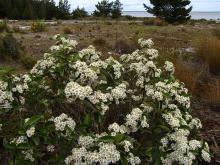
In more sheltered spots Dracophyllum longifolium reaches higher.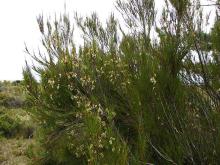
I love the look of the new seasons growth of tangle fern,(Gleichenia dicarpa).
The sun orchids ,(Thelymitra pulchella), prefer sun ,however will also open their flowers on a heavily overcast warm day.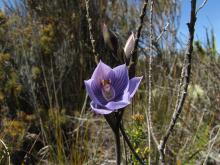
Donatia novae zelandiae forms hard dark green cushions with small flowers that sit directly on the leaves and has wide distribution from coastal to subalpine areas.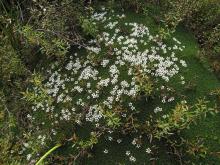
One of the earliest flowering Gentianella ,(G. lineata).While it isn't common ,in this area it blooms by the hundreds.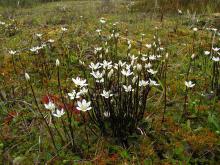
Growing on beach gravel just above the storm level Acaena pallida .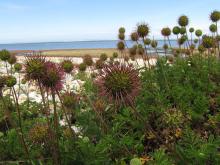
Finally --a little heath like plant growing amongst sedges lichen and leaf litter, Leucopogon fraseri.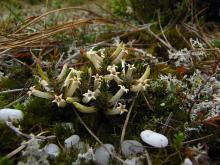
Cheers Dave.
Re: New Zealand Alpine Flora
Very interesting, Dave. I have never been to New Zealand but the flora is more like South America than anything else I have seen.
I try to establish different ferns in my garden and the tangle fern looks special. Do you think it is hardy?
Re: New Zealand Alpine Flora
A myriad of interesting study subjects, right down to the white jelly bean like stones in the Leucopogon fraseri pic.
Thanks!
Re: New Zealand Alpine Flora
Dave
What a great tour you have put together! I find it hard to wait for the next installment.
New Zealand has always been at the top of my MUST VISIT list, forever.
Re: New Zealand Alpine Flora
I try to establish different ferns in my garden and the tangle fern looks special. Do you think it is hardy?
Not sure Trond.Although it grows in a harsh environment in terms of wind and exposure the winters here on the coast are very mild with nil snow cover.I can collect you some spores if you wish to experiment.
Thanks Rick and John
Having worked most of the weekend i'm away into a remote area of the Eyre Mtns tomorrow with another enthusiast for 3 days tramping/botanizing so hopefully i'll have something to report.
Cheers dave.
Re: New Zealand Alpine Flora
I try to establish different ferns in my garden and the tangle fern looks special. Do you think it is hardy?
Not sure Trond.Although it grows in a harsh environment in terms of wind and exposure the winters here on the coast are very mild with nil snow cover.I can collect you some spores if you wish to experiment.
Thanks Dave, if you do I appreciate that. Exciting to experiment with ferns!Thanks Rick and John
Having worked most of the weekend i'm away into a remote area of the Eyre Mtns tomorrow with another enthusiast for 3 days tramping/botanizing so hopefully i'll have something to report.
Sure you have! Look forward to see!Cheers dave.
Re: New Zealand Alpine Flora
Sounds like a great getaway! I look forward to your report! :)
Re: New Zealand Alpine Flora
3 day visit last week to the Eyre Mtns Northern Southland (part 1 of 5 :o ;D)
Our first day was very wet with low fog and heavy drizzle at times which affected the quality of any pics i took. :-[
After an hour or two of climbing up a side valley we came into 'fields' of the large dramatic Aciphylla aff. horrida 'Lomond'.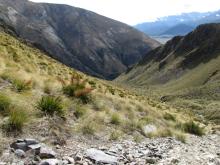
The males having performed their duties were beginning to droop.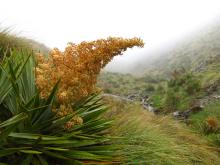
Leaving the females to raise any offspring. 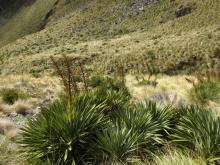
Celmisia densiflora flowering near the small stream.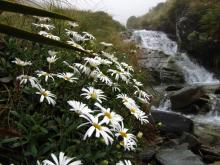
A bit higher up on scree Hebe buchananii.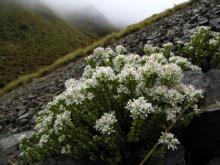
After a 3.5 hour uphill slog we reached our initial target of a small tarn ,and began searching around the steep screes for a number of specialized inhabitants--firstly, Stellaria roughii grows by the thousands here.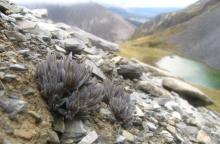
Myosotis glabrescens is a rare plant ,known only to live on a small number of ranges--it was great to see it for the first time in the wild.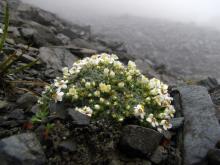
NZ is famous for it's many large bright and colourful Ranunculus sps.Ranunculus pilfera was another plant i had yearned to view --while we saw good numbers ,most were individual plants here and there in bloom.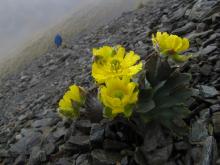
Will post images of the rest of the trip in the next day or 3.
Cheers dave.
Re: New Zealand Alpine Flora
I know, if you are out looking for plants to picture or just walk in the mountains, foggy weather isn't the cosiest! But the pictures get a very special atmosphere if you have enough light to take them.
I very much like the scenery; familiar and unfamiliar at the same time and so are the plants. Very nice, Dave.
Re: New Zealand Alpine Flora
Thanks Trond
Continuing our search around the tarn we found the weird Ranunculus scrithalis --it always has a preference for clayish screes of thinnish depth.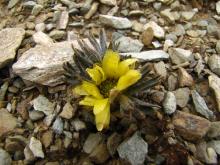
We then moved onto the shaded cliffs .Home of Anisotome capillifolia and Cheesemania wallii.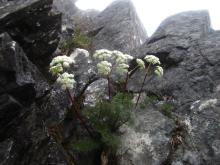
Climbing higher to reach the ridgeline between the headwaters of creeks 1 and 2 ,Aciphylla spedenii, Celmisia hectorii , Abrotanella inconspicua and Ourisia sessilifolia.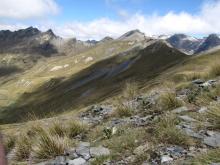
Cheers dave
Re: New Zealand Alpine Flora
I like all the plants but the Ranunculus gets my vote!
Is the climate in these mountains high alpine with snow cover all winter? And what is the summer temperature? Do the plants get moisture from fog or from rain in summer? I remember from the High Atlas Mtns in Northern Africa that fog is an important source of water.
Re: New Zealand Alpine Flora
Absolutely wonderful as usual, Dave ... so many thanks for posting.
Re: New Zealand Alpine Flora
Thanks Cliff.
Trond
Yes normally under snow all winter with falls early June and melt starting in November .
NZ is a very narrow country surrounded by water ,so very much a maritime climate and although there are dryish areas inland, most ranges receive moisture from summer rains , topped up by fog ,meaning there is soil moisture available .
On a still day in the mountains temperatures can be high --i have a number of times been sunburnt ,(or even windburnt on an overcast day), however in my experience because there is a predominance of wind,temps most days are cool on the 'tops'.
Carrying on with the trip.....
Also on the ridgeline large mats of Kelleria dieffenbachii and Hectorella caespitosa and surprizingly in open positions Ourisa caespitosa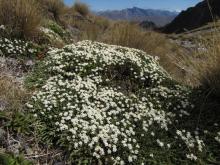
As we popped over into the next watershed a number of different Celmisias sps growing in snowgrass appeared.
Celmisia verbsacifolia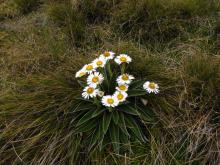
The lovely silver growth of Celmisia semicordata ssp stricta impressive even when not in flower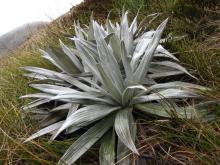
Final posting tomorrow night :D
Cheers dave.
Re: New Zealand Alpine Flora
Superb once again, Dave.
Re: New Zealand Alpine Flora
Dave, thank you for information. Sounds not unlike western part of Norway.... (picture, without fog!)
I have grown some Celmisia a few times and also some Ourisia but they have been shortlived. Your pictures give the reasons why I want to try more!
Re: New Zealand Alpine Flora
What fantastic plants, Dave! NZ really has it all; from beautiful Celmisia to wierd Aciphylla and wonderful Ranunculus.
Re: New Zealand Alpine Flora
Thank you Jenny .
I grow a number of South African plants so have been following your 'posted' journey with interest.
On our last day we travelled an hour by vehicle to visit a couple of lower mountain ranges -- Firstly on an isolated hill we saw sheets of flowering Celmisia traversii in numerous variations of upper leaf colour and brown tomentum beneath.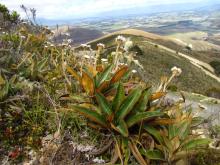
On the banks of the access road, a nice daisy Anaphaloides bellidioides and in more shaded spots Ranunculus ensyii.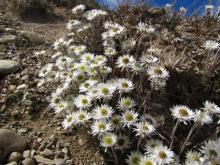
Then a quick visit to an area of ultrabasic rock where Celmisia spedenii grew --the normal type plant with white flowers and an exciting find ,*a rare form with yellow flowers--something i've never come across before and i believe the first time ever photographed.
*apologies for cross posting this particular pic,(which i've also shown on the SRGC Forum). 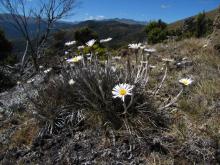
Finally ,Leptospermum scoparium can reach 4 or 5 meters in height elsewhere ,however possibly because of the nature of the type of rock it is growing on here ,plants can be very dwarf
The end........ :)
Cheers dave
Re: New Zealand Alpine Flora
On our last day we travelled an hour by vehicle to visit a couple of lower mountain ranges -- Firstly on an isolated hill we saw sheets of flowering Celmisia traversii in numerous variations of upper leaf colour and brown tomentum beneath.
On the banks of the access road, a nice daisy Anaphaloides bellidioides and in more shaded spots Ranunculus ensyii.Then a quick visit to an area of ultrabasic rock where Celmisia spedenii grew --the normal type plant with white flowers and an exciting find ,*a rare form with yellow flowers--something i've never come across before and i believe the first time ever photgraphed.
*apologies for cross posting this particular pic,(which i've also shown on the SRGC Forum).Finally ,Leptospermum scoparium can reach 4 or 5 metres in height elsewhere ,however possibly because of the nature of the type of rock it is growing on here ,plants can be very drawf
The end........ :)
Cheers dave
Dave, no need to excuse showing a yellow Celmisia twice! I could have looked at the pics three times as well!
It is a pity New Zealand is so far away or I had already been there. However, it's a must to visit and your pictures haven't lessened the urge to go.
Re: New Zealand Alpine Flora
Trond,
The humans in your landscape are much prettier than those we usually see displaying their lower limbs in N.Z. ;D ;D
Have Toolie's legs appeared on these pages yet ... they have certainly featured heavily (!) on the SRGC Forum for many moons? ;D ;D
Re: New Zealand Alpine Flora
Trond,
The humans in your landscape are much prettier than those we usually see displaying their lower limbs in N.Z. ;D ;D
Have Toolie's legs appeared on these pages yet ... they have certainly featured heavily (!) on the SRGC Forum for many moons? ;D ;D
you know Cliff, I couldn't compete the plants so I had to choose something else. The NZ legs were nothing!
Re: New Zealand Alpine Flora
Thanks a lot guys :o You two will keep!! ;D ;D
Cheers dave
Re: New Zealand Alpine Flora
Dave, I love seeing your NZ plants in either location, here on NARGS and on SRGC, thanks for bringing them here. I've been a long time fan of the weird and wondrous flora of both New Zealand and Australia, and I use the term "weird" in the most complimentary way, as the flora is so different and unique, that in many cases even the family the plants belong to are utterly unique. But I'm a huge fan.
A case in point, Stellaria roughii, where one must discard any notion about what a Stellaria looks like, why... because this one from New Zealand is doing a fair impression of Rosularia or an Orostachys. Cool plant.
And there are so many awesome hard-domed cushions, like Donatia and Hectorella that you show. I want to visit New Zealand, just so that I can try walking on one of these cushions, where supposedly the cushion will hold firm and not depress under foot! And to be in a place where the Apiaceae have run amuk, that's a dream to be sure, with the likes of mystical hedgehog Aciphylla species, with separate sexes no less, the fluffy males being the best, and bold Anistome species show their form, not shy in the least.
Celmisia is a genus that has always attracted me, from tight hummock-forming species to the larger imposing species you show, the latter impress me the most, such as verbascifolia (yum), semicordata, and the dramatic traversii with that indumentum.
I've grown a few NZ Ranunculus in my day, and when I lived in the Seattle Washington area, the genus Hebe figured prominently among low evergreen shrubs for the area, I wish they were hardier here in New England.
Re: New Zealand Alpine Flora
Thanks Mark for your kind comments .
I know what you mean regarding different flora -- -- thinking Cacti are plants of true deserts i still have trouble getting my head around them growing in the wild in an alpine setting and recently RickR has shown Opuntia growing on the prairie land of Western Minnesota. I still have a lot to learn :D
Saw some nice gems while out and about yesterday --seems most Genera are either in or going to bloom this season.
I came across 3 variations of Celmisia linearis, the best being this little honey :P even my wife Hilda ,who is not a plants person at all ,raised her eyebrows upon viewing the shots ;D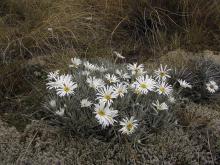
Celmisia semicordata ssp stricta taken in an 'interesting' position --my right hand was hanging onto a clump of snowgrass while i arched my body away from the slope and took ,(after many attempts),the pic with my left hand .....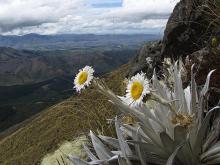
On the lower slopes on a tor ,Dolichoglottis lyallii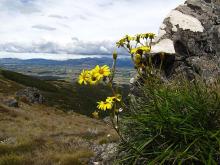
and surrounded by moss ,Celmisia densiflora
Cheers dave.
Re: New Zealand Alpine Flora
I am impressed, Dave, the plants look awesome! C. linearis is something to try in the garden!
But be careful not to fall when you take your pictures.
I was wondering about the whitish mossy or lichenlike vegetation surrounding the plants. Is the ground dryish and lacking nutrients?
Re: New Zealand Alpine Flora
Another superb set of images, Dave.
Re: New Zealand Alpine Flora
Thanks Cliff.
I was wondering about the whitish mossy or lichenlike vegetation surrounding the plants. Is the ground dryish and lacking nutrients?
Trond
While that particular area in Northern Southland is made up of ultrabasic rock ,(lacking in some nutrients),the Celmisia densiflora i 'posted' appeared to be growing well.
Not so the following pic ,which was taken in heavy fog ,early this year in Fiordland.You can see very poor stunted specimens of Celmisia verbascifolia surrounded by lichen like vegetation and yet only a short distance away Chionochloa sps ,(snow tussocks), are thriving.
Re: New Zealand Alpine Flora
Thanks Cliff.
I was wondering about the whitish mossy or lichenlike vegetation surrounding the plants. Is the ground dryish and lacking nutrients?
Trond
While that particular area in Northern Southland is made up of ultrabasic rock ,(lacking in some nutrients),the Celmisia densiflora i 'posted' appeared to be growing well.Not so the following pic ,which was taken in heavy fog ,early this year in Fiordland.You can see very poor stunted specimens of Celmisia verbascifolia surrounded by lichen like vegetation and yet only a short distance away Chionochloa sps ,(snow tussocks), are thriving.
Thanks! You say stunted specimens of Celmisia, I would have been happy to grow any Celmisia! So far all I have tried have succumbed to death in after a year or two.
Re: New Zealand Alpine Flora
Dave, a few years ago I was only aware of a couple of Aciphyllas and Celmisias. Now you have opened my eyes to a much richer world of plants! And also many other plants I didn't know exist.
I once grew a very nice Aciphylla for several years, I've forgotten the species' name - seed from Thompson & Morgan - but suddenly it succumbed to rot. I was very disappointed :'(
Is it possible to ask, if you come across some seeds on your wanderings in the mountains, to collect some for me?
Re: New Zealand Alpine Flora
Last lot from yesterday :)
On depleted vegetative ridges ..
A lovely small Aciphylla sps which i haven't yet identified.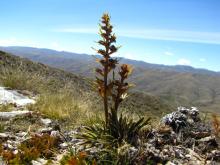
Brachyglottis bellidioides can be quite variable --this one is a dark green leafed form .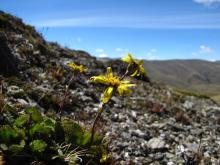
Craspedia lanata ,( it's common name is most appropriate --"woolly head" ;D), can either have yellow or white flowers.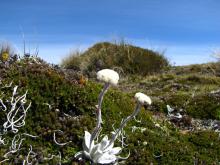
Another snow melt plant --Ranunculus pachyrrhizus -not the typical big colourful NZ Ranunculus sps ;) but a gem all the same.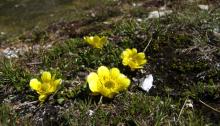
Dracophyllum prostratum and Euphrasia revoluta prefer damp spongy sphagnum bogs.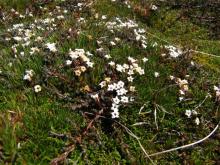
Bulbinella angustifolia grows in profusion close to the bogs.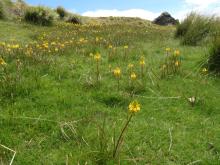
Astelia nivicola forms silvery bronze clumps some reaching over a metre in width .
Another 'good doer' in the garden here quickly bulking up , however in the wild i've never seen it in berry and my plants never set fruit .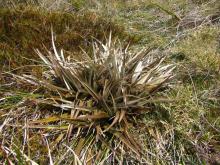
Fields of Celmisia verbascifolia.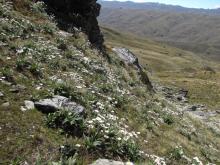
Finally Celmisa prorepens is very close to Celmisia densiflora,(which i've shown pictures of on previous postings ).The main differences being C.prorepens is green on both sides of it's leaves which are very sticky to the touch .Also C. prorepens tends to have quite wrinkly leaf margins.Where the two grow together all sorts of variations ? occur ,which leads to interesting discussions !! ; :D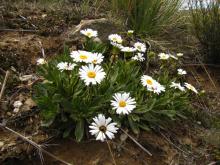
Trond pleased you are enjoying the 'view'.
I do plan to be out in the field seed collecting time late Jan /Feb so will see what i can do.
In the meantime i have delayed my return to work for another week as the weather looks good for a 3 day visit over into Fiordland .....
Cheers dave.
Re: New Zealand Alpine Flora
Reposted as inadvertantly deleted when amending the post above.
A few more from a trip yesterday on the first day of the new year.
Celmisia lyallii is also known as the false spaniard,(false aciphylla)--you can see the similarities in the dagger like foliage.It doesn't flower reliably each season ,(seeming to have a number of continuous 'off' years),however currently the hills are full of blooming plants .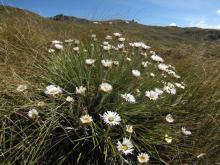
A small number of plants showed a yellow colouring to newly opened bud.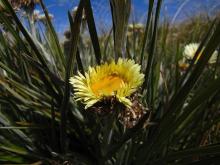
Scenery shot with a nice cloud formation.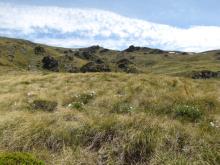
Psychrophila obtusa numbers by the hundreds around snow banks.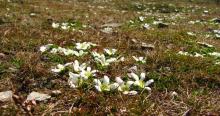
Aciphylla lecomteii and visitor.
(will grow easily from cuttings and is a good performer in the garden here wedged into a rock crevice. --luckily i have only seen the Aciphylla weevel in the wild.....Later in the season, plants attacked can look very tatty. 
Cheers dave.
Re: New Zealand Alpine Flora
I never tire looking at your pics, Dave!
But am I right when I believe new Zealand has few red and blue flowered plants? Think I once read something about that.
Trond pleased you are enjoying the 'view'.
I do plan to be out in the field seed collecting time late Jan /Feb so will see what i can do.
In the meantime i have delayed my return to work for another week as the weather looks good for a 3 day visit over into Fiordland .....
Cheers dave.
That is very kind of you, thanks Dave.
So you can delay starting to work! I have to start Monday! But I prefere longer holidays in summer. (I am living in the Fjordland you know!)
Re: New Zealand Alpine Flora
Dave
Great presentation!
You Have shown us many fine alpines, I will be seeking out.
I particularly like the Euphrasia revoluta.
The gaping yellow throats all nested together is a delight to see.
Is Euphrasia revoluta classed as a member of Scrophulariaceae or Orobanchaceae? If it is in the Orobanchaceae family dose it have a specific host plant?
Re: New Zealand Alpine Flora
Thanks for the terrific postings, Dave! Fabulous plants. It seems such a different looking alpine terrain, as well, than what I am used to. What sort of minimum temperature or zone rating would that area experience?
The most amazing to me of the plants you posted is Psychrophila obtusa... incredible ratio of flower size to plant size!
Re: New Zealand Alpine Flora
Dave
Great presentation!
You Have shown us many fine alpines, I will be seeking out.
I particularly like the Euphrasia revoluta.
The gaping yellow throats all nested together is a delight to see.Is Euphrasia revoluta classed as a member of Scrophulariaceae or Orobanchaceae? If it is in the Orobanchaceae family dose it have a specific host plant?
Thanks John --i believe Euphrasia is now in Orobanchaceae,(although my old reference material says Scrophulariaceae ). Damn !! :D -i have enough trouble trying to keep up with name changes at a lower level ...
There are some wonderful NZ sps with different coloured flowers and growth patterns ---i have not tried to grow them myself so can't offer you any personal experience in that regard however my observations in the wild are that most prefer wet spots --bogs ,banks of streams and tend to be in the company of small sedges,grasses and maybe are semi parasitic on those .
Interestingly i have somewhere in my photo library a pic of a plant in Fiordland growing on an exposed bank all by itself a metre or two away from any vegetation.
I suspect they could be grown/seed sown in a pot with any small grass .
Thanks for the terrific postings, Dave! Fabulous plants. It seems such a different looking alpine terrain, as well, than what I am used to. What sort of minimum temperature or zone rating would that area experience?
The most amazing to me of the plants you posted is Psychrophila obtusa... incredible ratio of flower size to plant size!
Thanks Lori
This particular trip i've just posted was to a lower grassland mountain range .
I have managed to locate some facts and figures in relation to the mountain climate of that area --snow generally falls in early June and melts in early November.
Soil freezing may occur down to 50cm on exposed ridges where there is no snow cover.Air temp has been recorded as -18c.
Over a recorded 5 year period in summer the longest period without frost varied from 8 to 13 days....
Fiordland will be a different matter, more akin to what i see in your postings ,with a lot of rock ,screes and lofty peaks.
Cheers dave.
Re: New Zealand Alpine Flora
Thanks for the climate info, Dave. How strange... an alpine area that is relatively warmer than ours (in terms of absolute lows), yet always so close to freezing, amazing!
After the wonderful plants and scenes in that area, we're all waiting eagerly to see Fiordland too!
Re: New Zealand Alpine Flora
Fiordland....yup!
I also thought it was interest about those climate temperatures.
Re: New Zealand Alpine Flora
Fiordland --part 1
It's been such a great year for flowering elsewhere down south here Fiordland didn't disappoint.
Although it's an early season with most snow gone ,a bit of rain the day before our arrival meant a wet start to the first valley we visited.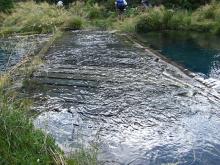
Parts of the valley floor had experienced recent avalanche damage--it was interesting to see how some plants had pushed up through the disturbed area.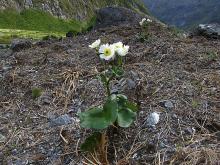
Further along growths of Dracophyllum menziesii appeared .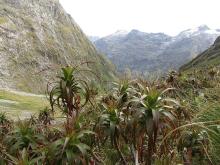
As we reached the valley end and started to climb a number of Dolichoglottis sps were sighted.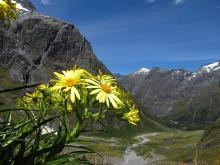
As well as Haastia sinclarii var fulvida and Celmisia hectorii.
Cheers dave
Re: New Zealand Alpine Flora
Also on the lower slopes were numerous patches of Celmisia bonplandii--a side view showing it's long dark coloured flowering stalks.
In shady spots a larger Ourisia .O macrocarpa.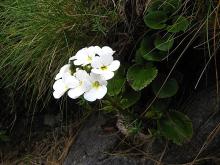
We climbed high to reach the bottom of the cliffs to locate Ranunculus hybrids between R buchananii and R. sericophyllus--unfortunately non were in bloom , however i sighted a nice grass ,(name forgotten for the moment :-\0.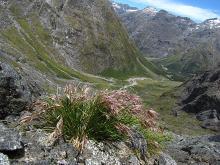
Realizing our route over to Black Lake was a bit difficult we decided to drop down before crossing.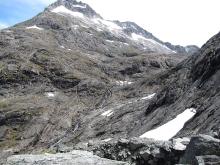
AT Black Lake were some gems .....
Re: New Zealand Alpine Flora
Above the lake and some distance away, Anisotome capillifolia.
Luckily i was able to capture a decent pic by using the camera's 20x zoom function. 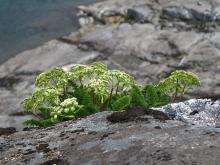
Further on up towards the saddle in wet seepages, Ranunculus sericophyllus.
View from the top, Raoulia buchananii.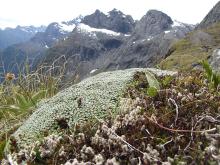
Finally --on the way down on small rock rubble and short turf--Myosotis lyallii.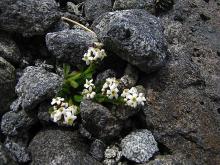
Re: New Zealand Alpine Flora
Although rain was forcast yesterday,we decided to visit the dryer east side of Fiordland .By the time moisture arrived at 5 pm my body was in automatic mode ;) so it was a blessing in some ways to cut short our trip.
A few highlights --
In grassland a nice small Celmisia hybrid and Anisotome haastii.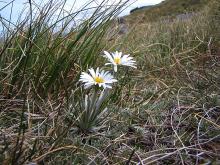
Depleted vegetative areas, largish mats of Celmisia sessiliflora, Phyllachne colensii and Geum uniflorum.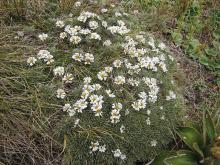
Bogs have a community of their own --including the hard cushions of Donatia novae zelandiae. Yummy :-* how the flowers sit on the plant.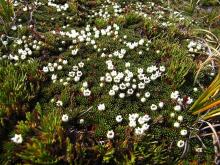
Re: New Zealand Alpine Flora
Final posting :D
Following the stream, Aciphylla pinnatifida --in water and on slightly dryer banks.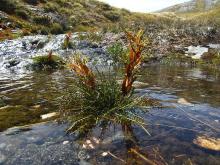
Nearby Gentianella montana.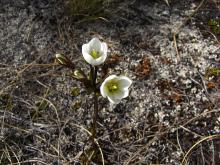
Around the tarns ,wonderful large clumps of Aciphylla crosby-smithii and a single plant of Ranunculus lyalli x R.buchananii.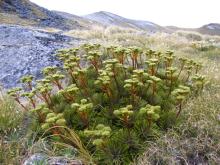
On exposed ridges were hundreds of Brachyglottis bellidioides. This was a particularly nice form.
Our target was the extensive area of fellfield below the cliffs --here were some beauties. Including Ourisia remotifolia and Ranunculus buchananii.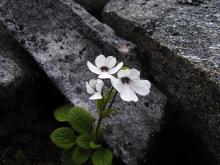
I leave you with Ranunculus heaven. :-* :-* :-*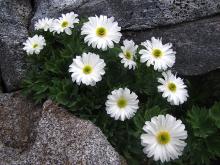
Cheers dave.
Re: New Zealand Alpine Flora
Toolie: What gorgeous pictures of some gorgeous plants. I have always wanted to grow Geum uniflorum - have tried several times with seed (not too easy to obtain) with no luck. Can you give me some advice about growing them up here in Eastern Canada? I have planted some Ranunculus lyallii in a tiny bog - it will get a lot of snow cover - and wonder if that will do the "trick".
Frances Howey
London, Ontario, Canada
Zone 5b
Re: New Zealand Alpine Flora
Magnificent set of photographs once again, Dave ... oh that BEAUTIFUL Ranunculus buchananii ... :D :D :D
Re: New Zealand Alpine Flora
Magnificent set of photographs once again, Dave ... oh that BEAUTIFUL Ranunculus buchananii ... :D :D :D
Just about the perfect Ranunculi Cliff. ;)
Toolie: What gorgeous pictures of some gorgeous plants. I have always wanted to grow Geum uniflorum - have tried several times with seed (not too easy to obtain) with no luck. Can you give me some advice about growing them up here in Eastern Canada? I have planted some Ranunculus lyallii in a tiny bog - it will get a lot of snow cover - and wonder if that will do the "trick".
Thanks Fran
Not sure what your overall climatic conditions are but would presume if you experience any summer draught that could be a problem .
Geum uniflorum has preference for shady moist banks ,although in the southern end of Fiordland where moisture is year round and totals over 6 metres p.a. it will also be found out in the open on depleted vegetative spots.I've noted my diary to collect a little seed for you soon which i'll send fresh.Will be in touch.
Ranunculus lyallii also has a liking moist areas--from streamsides to old established fellfield,(large rock rumble)---in areas not so wet ,they grow where the foliage is in shade and the flowering heads in the sun.
Cheers dave.
Re: New Zealand Alpine Flora
But am I right when I believe new Zealand has few red and blue flowered plants? Think I once read something about that.
Sorry Trond
I just realised i haven't replied to your earlier question.
NZ alpine flowers are mostly whites and yellows, with a few blues and one or two reds like Raoulia buchananii.
I'm not sure of the reasons why ,although as i have discovered over the years ,(especially when i have been in close taking macro shots),there are many genera that are scented ---ranging from Brachyglottis,Myosotis,Leptinella and Aciphylla ,(to name just a few off the top of my head),so maybe scent is of more importance ....?
Cheers dave.
Re: New Zealand Alpine Flora
Dave
I have been reading an article about insect pollinators in New Zealand. I wonder if the predominance of flies as the primary pollinators in many areas influences flower color. Since flies (as far as I know) are more attuned to scent cues versus visual cues.
http://www.newzealandecology.org/nzje/free_issues/NZJEcol1_66.pdf
Re: New Zealand Alpine Flora
But am I right when I believe new Zealand has few red and blue flowered plants? Think I once read something about that.
Sorry Trond
I just realised i haven't replied to your earlier question.NZ alpine flowers are mostly whites and yellows, with a few blues and one or two reds like Raoulia buchananii.
I'm not sure of the reasons why ,although as i have discovered over the years ,(especially when i have been in close taking macro shots),there are many genera that are scented ---ranging from Brachyglottis,Myosotis,Leptinella and Aciphylla ,(to name just a few off the top of my head),so maybe scent is of more importance ....?
Cheers dave.
Thanks, Dave! I haven't had time checking till now anyway, have had a trip to England last week (Univerity of Reading by the way). I think I have read the same as John about pollinating insects. And you are probably right about scent.
Your last pictures were fabulous, dave! The landscape is a little familiar - not unlike some places in Norway - but the vegetation and flowers are all different! My body itches to walk in such places.
Re: New Zealand Alpine Flora
Spent today showing 8 Danish folk a few 'weeds' ;D down at sea level --while i expected that most plants would be past flowering I knew Gentianella saxosa would be just starting.
Their preferred habitat is in gravel a meter or two above the high tide mark exposed to the elements of full sun, near constant wind and the effects of salt spray.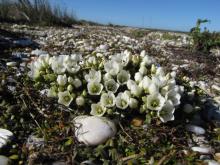
Being a relatively calm,sunny day there was quite a bit of insect activity which i managed to capture by changing over cameras.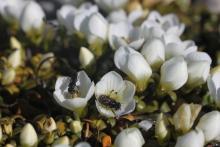
I initially had limited success with this sps in the garden here. However planting out in an experimental sand crevice garden has seen it's stay more permanent and while it seeds around, is never a pest, unfortunately in our shady conditions they never achieve the tight clumps as in nature.
Cheers Dave.
Re: New Zealand Alpine Flora
Beautiful images as always Dave.
Re: New Zealand Alpine Flora
Dave, I wouldn't complain if such plants grew at the beach!
Re: New Zealand Alpine Flora
The NZAGS had its annual field trip a weekend back. A few images from the mountains of South Canterbury.
Celmisia angustifolia comes in green and silver leaved forms.
Wahlenbergia albomarginata is often seen as a running growth --this pic is of a nice clumping plant.
A small Anisotome sps in fellfield--- possibly a male form of A. flexuosa.
[attachthumb =3]
Anisotome flexuosa --female.
On fine scree Epilobium pycnostachyum.
Re: New Zealand Alpine Flora
Not sure on why my pics are showing at the full size rather than thumbnails. :-\ (fixed: MMcD :D)
Anyway i'll continue.
Aciphylla montana --female.
A couple shots of Gentianella corymbifera ---plants can be quite variable in height up to 60cm--these ones were very dwarf.
Haastia sinclarii close up showing the wonderful tomentum.
Around rocks hugging the mineral Raoulia eximia .
Hebe haastii.
Lastly -- a couple of unknown Epilobiums .
Cheers Dave
Re: New Zealand Alpine Flora
Sensational images yet again Dave ... the grey rock certainly brings out the best in these magical plants.
Re: New Zealand Alpine Flora
Lovely images Dave. You mention that your images are not thumbnails. Mark McDonough has written a great FAQ on images in the board 'Announcements from Moderators and Administrators' on this page http://nargs.org/smf/index.php?topic=553.0. The syntax to create thumbnails is very similar to what you're doing currently. Thanks so much for providing your excellent posts to this forum!
Re: New Zealand Alpine Flora
Fabulous plants and scenery, Dave. That rocky and rugged area has the feeling of the alpine areas here, but the plants are unimaginably exotic. Many thanks for posting!
By the way, your photos will attach as enlargeable thumbnails if you use the syntax "attachthumb=#", rather than "attachment=#".
Re: New Zealand Alpine Flora
I have heard of "Canterbury Bells" and even grown some, but these bells and other gorgeous plants takes the prize!
If I hadn't decided already to visit New Zealand when I have the opportunity I certainly would now ;D
Re: New Zealand Alpine Flora
Dave, I'm just catching up and have to say, I've returned to this thread a dozen times or more, ogled the amazing plants each time, then click the "Mark Unread" button at the top to reset the topic as "new", as a reminder to come back here and respond. :)
I've having a harder and harder time upholding my "no prickly plants in the garden" rule, when seeing the wonderful hardy cacti in other topics, and the fantastic Aciphylla species here. It's always been a genus that has intrigued me, but with A. congesta, pinnatifida, and particularly crosby-smithii, I'm aching to try growing these stunning unique plants. Gentianella corymbifera is a glorious thing isn't it. Some of the NZ Epilobiums restore my faith in this rather weedy genus, the last two you show are special, the very last one going to seed in a fit of red pods and white fluff is a quiet spectacle.
Thanks for sharing your photographs vividly capturing both the plants and the awesome NZ mountainous terrain.
Does anyone in North America successfully grow Aciphylla?
Re: New Zealand Alpine Flora
Thanks all.
I was out again locally in Fiordland last weekend .Still a lot of colour including a number of sps just starting to bloom.
Will post in a day or two when time allows.
Cheers Dave.
Re: New Zealand Alpine Flora
Thanks all.
I was out again locally in Fiordland last weekend .Still a lot of colour including a number of sps just starting to bloom.
Will post in a day or two when time allows.
Cheers Dave.
Dave,
Living in "Fjordland", Norway, I am looking forward to and prepared to enjoy many more spectacular pics from your Fiordland ;)
(Not the majestic mountains though, you have to go farther inland, north or south to experience that)
Re: New Zealand Alpine Flora
Link to my latest field trip.
http://www.srgc.org.uk/smf/index.php?topic=7434.msg204646#new
Cheers Dave
Re: New Zealand Alpine Flora
I was behind on this thread--always amazing stuff! the bright Aciphylla montana in a sea of silver rock and silver plants is wonderful! Worth emulating in the garden....
The Haastia is also fantastic! As Lori mentioned, its all so exotic for us!
Re: New Zealand Alpine Flora
Hi Dave: Just received my allotment of seeds from New Zealand Alpine Garden Society (Christchurch). Nice to know that, in spite of the quake and aftershocks (still going on I hear), they are still operating. Am chafing at the bit to start some of the seeds - I know the Ranunculus should be planted right away but wonder if there are others that I can "get away" with planting now up here in London, Ontario. Don't have any asteraceae seeds but was delighted get some special ones this time including Ranunculus lyallii, Nothothlaspi rosulatum, Pentacondra pumila and Calceolaria uniflora (S. America) and a couple of NZ clematis. Haven't had success with these in the past. Fran
Frances Howey
London, Ontario, Canada
Zone 5b
Re: New Zealand Alpine Flora
Hi Dave: Just received my allotment of seeds from New Zealand Alpine Garden Society (Christchurch). Nice to know that, in spite of the quake and aftershocks (still going on I hear), they are still operating. Am chafing at the bit to start some of the seeds - I know the Ranunculus should be planted right away but wonder if there are others that I can "get away" with planting now up here in London, Ontario. Don't have any asteraceae seeds but was delighted get some special ones this time including Ranunculus lyallii, Nothothlaspi rosulatum, Pentacondra pumila and Calceolaria uniflora (S. America) and a couple of NZ clematis. Haven't had success with these in the past. Fran
Frances Howey
London, Ontario, Canada
Zone 5b
Hello Fran
Sorry for the delay in replying --I've just seen your posting :-[
Best of luck with the seed ,some of which i have never tried --Ranunculus lyalli in my experience will germinate in greater numbers the second spring after sowing .
Never been successful with Nothothlaspi rosulatum.
Here's a pic of a native Clematis currently in bloom outside our dinning room --about 2 metres in height,lovely citrus like scent.
Cheers Dave.
Re: New Zealand Alpine Flora
Kopuwai Conservation Area --Part 1 of 4 :rolleyes:
Last weekend I took the opportunity to travel a couple of hours inland and visit the Old Man Range in the province of Central Otago.
I initially visited the southern slopes of tussock grasslands at about 1300mtrs where in wet areas large numbers of Ranunculus gracilipes were in bloom, the most prolific flowering being on slightly raised hummocks.
One or two cushions of Phyllachne rubra were thereabouts as well as Psychrophila obtusa , and on the edge of the 4 wheel drive track Celmisia haastii var haastii which unfortunately was the only Celmisia sps I saw flowering. (Seems this season a number of genera/sps are having a year off ….). :'(
However even when not in colour Celmisia semicordata ssp aurigans is a magnificent plant –a cousin to the silver leaf growth C.semicordata ssp stricta which I have shown pics of previously, this one has a wonderful golden hue to its foliage .Has a liking to cool part shady spots .
Re: New Zealand Alpine Flora
Part 2 (Rest to come tomorrow....)
I crested the ridge at about 1600 mtrs and rode along the plateau for 30 ks stopping at various spots to botanise not far from the motorbike as I had forgotten to bring the chain and padlock .Duh !.
Considered as one of the foremost places in NZ for alpine cushions, the schist rock tors are a feature as well.
The prominent vegetation here is Dracophyllum muscoides which seems to revel in the exposed windswept conditions .
In between the cushions ,Ourisia glandulosa , orange berries of Coprosma perpusiila and a large flowered form of Ranunculus enysii .
Re: New Zealand Alpine Flora
Dave
As always a wonderful presentation of plants I have long wished to see. I always look forward to your postings. :D
Re: New Zealand Alpine Flora
Oh! I have only just found this thread from the beginning and what wonderful photographs and scenery - especially the umbellifers (!) and maybe even a ranunculus or two! I was brought up on Philipson and Hearn's book and have always longed to see the alpines of New Zealand. Some occur in Tasmania, which I have visited, but the landscape is so completely different. Alan Furness in Northumberland grows many of them beautifully but they are not really for us down in the south. Many thanks again.
Re: New Zealand Alpine Flora
Pleased you are enjoying the postings John and Tim.
Philipson and Hearns publication is a beauty --although somewhat surpassed in terms of plant names i often pick it up ,(again), during the winter as it is such a good read.
On the edge of moist areas ,orange coloured growths of Hebe sps.
In the cushion fields .....
Raoulia hectorii var mollis, Chionohebe densiflora, woolly Craspedia lanata , Chionohebe thomsonii and Abrotanella inconspicua .
Re: New Zealand Alpine Flora
Near rocky bluffs Aciphylla simplex and ground hugging Ranunculus pachyrrhizus close to snow melt.
I wasn’t alone---,( Mr), :) Kea decided to investigate my pack – very sociable ,intelligent and inquisitive birds I kept a close eye on him,(or her), as they are infamous for opening zips and emptying contents .I managed to get within a couple of feet before it was distracted by another bird flying above us.(Look how he has his head bent to view the competition).
Finally ,the climax !! :o--on exposed sites, numerous plants of the stunning, grey silky haired Myosotis pulvinaris so well blended into the surrounding rock that I almost stepped over them.
Cheers Dave.
Re: New Zealand Alpine Flora
Wow, Dave, your pics are super, thanks for posting the pictures, especially the Myosotis pulvinaris, it's magnificent. First saw it in flower across in the Dunstan Mts a couple of years ago when I was out with John Douglas from Alexandra, going up to the M. albosericea site. Have you ever got any seed of pulvinaris and tried it in the garden?
Are there REALLY so many lowlife riff-raff up there on the ridge that you need to padlock and chain your bike (it doesn't look that busy from your pics?) ;)
Re: New Zealand Alpine Flora
Magnificent as always, Dave.
Re: New Zealand Alpine Flora
Thank you for a nice evening, Dave :D
Re: New Zealand Alpine Flora
Thanks Cliff and Hoy.
Wow, Dave, your pics are super, thanks for posting the pictures, especially the Myosotis pulvinaris, it's magnificent. First saw it in flower across in the Dunstan Mts a couple of years ago when I was out with John Douglas from Alexandra, going up to the M. albosericea site. Have you ever got any seed of pulvinaris and tried it in the garden?
Are there REALLY so many lowlife riff-raff up there on the ridge that you need to padlock and chain your bike (it doesn't look that busy from your pics?) ;)
Nope i haven't tried the Myosotis myself or collected seed Doreen....I understand it or variants grow well in the northern hemisphere --in fact i saw a really nice healthy specimen in Davie Sharps alpine house while we were in Scotland last year.
The bike isn't registered,warrented or insured so I'm always keen to make sure it doesn't go missing ;).--I even have it chained to the truck body when travelling..........
Technically i guess I'm braking the law because some of the 4 wheel roads i travel on are classed as public roads---aw well-- i like living on the edge ! :rolleyes:
Cheers Dave.
Re: New Zealand Alpine Flora
The bike isn't registered,warrented or insured so I'm always keen to make sure it doesn't go missing ;).--I even have it chained to the truck body when travelling..........
Ah, that explains it, it's not that you're worried about the lowlife nicking it, it's to stop Mr Plod impounding it! Anyway, thanks to your "living on the edge" we get to see all these plants we'd never get to see otherwise (unless we called on Davie Sharpe!) :)
Re: New Zealand Alpine Flora
I haven't been out in the 'hills' for a few weeks however i plan to remedy that this long weekend ---(Monday is a public holiday---'Waitangi Day commemorates a significant day in the history of New Zealand. It is a public holiday held each year on 6 February to celebrate the signing of the Treaty of Waitangi, New Zealand's founding document, on that date in 1840.')
In the meantime here are a few shots i took a week or two ago while visiting a botanical garden of one of the native Metsiderosis sps flowering.
Cheers Dave.
Re: New Zealand Alpine Flora
Looks much better than the grey, naked birches here ;)
Re: New Zealand Alpine Flora
Looks much better than the grey, naked birches here ;)
Here's a few pics to cheer up your day Hoy. Wink
Part 1 of 5 :rolleyes:
Spent Monday of last week and then yesterday in the mountains of Northern Southland.After the last two magnificent blooming years a number of genera are having a 'rest'. :'(
My first visit was to West Dome ,a peak reaching about 1200 mtrs in height .
On the lower access 4 wheeled vehicular road ,an Acaena hybrid between A. novae Zelandiae and some other local species, possibly A. inermis.
I was able to ride up to the edge of an area which a few of us call the 'Moonscape' ,an area of ultrabasic rock seemingly devoid of any vegetation.I hesitate to use the word "ride" as the climb was via a very rough mountain goat sort of track and i came off the bike 3 times going up and once decending :o (However that's another story perhaps..).
Plants do survive in this exposed spot including a nice yellow/green coloured form of Gentianella bellidifolia,(i was just a little early for flowering ).At first glance i thought it was a small seedling of Aciphylla aurea.
A Myosotis sps which i think is still unnamed --it has a number of unofficial titles such as M.sps 'Dome' or M.sps 'Mossburn' after the area in which it is found .In any case its very hairy foliage can range from green to grey.
Also there a prostrate creeping Kelleria sps ,and flowering,silver growths of Raoulia hookerii and one of the 'woolly heads' ,Craspedia uniflora .
Rest to follow when time allows.
Cheers Dave
Re: New Zealand Alpine Flora
Part 2.
Celmisia spedenii is endemic to this area .Although I found a small plant in flower you would grow it for the foliage alone. :-*.No yellow flowers this time around !. ;D
The new growths of Hebe lycopodioides give it an orange tinge .
( oops --Edit -- This should be H. hectorii ssp demissa).
Almost appearing suspended above moss the heads of Brachyglottis bellidioides --while it's just a little yellow daisy, the best leafed forms are highly desirable.
One of the harebells .Wahlenbergia albomarginata is wide spread, here growing in amongst one of the smaller snow tussocks.
In wet depressions, Celmisia glandulosa and also in moister spots but in more depleted spots a nicely coloured Euphrasia sps , maybe E. integrifolia :-\ .(I didn't have a hand lens available and was running out of time to switch over to a macro lense to try and aid the ID) .
Celmisia densiflora , one of the sticky leaf sps is a reliable bloomer and didn't disappoint as a number were showing colour -- makes impressive loose patches.
Re: New Zealand Alpine Flora
Final pics from West Dome.
A creeping snowberry ,Gaultheria depressa var novae zelandiae with Celmisa densiflora in the background.
Around these rocks on shaded crevices ,unexpectantly i found the South Island edelweiss, Leucogenes grandiceps.
Cheers Dave .
Re: New Zealand Alpine Flora
Rightio yesterdays adventure was to the Te Anau basin where a well groomed road leds up onto Mt Prospect a low ridge at about 900 mtrs.
It's an interesting area in that the northern slopes are covered with beech forest while the southern end is tussock grassland.
Along the road large mats of Raoulia glabra were flowering.Has quite a wide distribution as it is found near the coast not far from where i reside.
Also in close proximity a couple of bidibidis, the diminative Acaena inermis and A.caesiiglauca.
On over hangs the colourful Lycopodium fastigiatum.
In amongst the snow grass and wiry growths of a Coprosma sps, Gentianella montana with its very dark red underleaf and in this case 3 prominent veins.
Re: New Zealand Alpine Flora
Just about getting there ;D.(the end that is !).
A number of pics of the fabulous forms of Celmisia traversii :P :P--another mountain daisy you would be tempted to grow for the foliage alone.
View from summit over the forested northern slopes.
Another plant from the road side that benefits from the lack of competition.Geranium sessiliflorum.
Very similar to Raoulia glabra i showed earlier is Raoulia subsericea --from which it differs by having tighter mats,(although my pics doesn't show that in this instance ), and silver blunt tips.
Re: New Zealand Alpine Flora
Last posting --I need a break ;D ;D
At the summit i worked my through the tussocks and shrubs and onto the edge of the beech trees.
Here i found in sphagnum moss, enjoying the cool shady moist position, numerous plants of another eyebright ,Euphrasia zelandica and an Orchid ,(I've a query away to a local expert for a name).
Finally a view out across the basin towards the imposing peaks of Fiordland.
Cheers Dave.
EDIT--- Orchid has been ID'd as Chiloglottis cornuta
Re: New Zealand Alpine Flora
Wow, it's fantastic to see the sights of New Zealand! Thanks for posting, Dave!
The Meterosideros is amazing... it boggles the mind to see massive trees with such floral displays.
Your photos give us an excellent peek into the alpine environment of New Zealand. So many exotic forms!
I love the first very colourful Acaena and Raoulia subsericea, especially.
Re: New Zealand Alpine Flora
Wow! What a wonderful excursion! Thanks for bringing it all to us, Dave.
It looks as if those black crag rocks are not the normal bedrock there... like they jutted through the surroundings? Very cool!
Every photo is interesting, flowering or not. Near the beginning, the Acaena hybrid, especially, is superb! Am I looking at red pistils?
What is that ubiquitous hairy plant I see in so many of the pics, that reminds me of Hieracium villosum/lanatum? I am expecting it to be yet again something I've never heard of... See it here, for instance:
http://nargs.org/smf/index.php?action=dlattach;topic=374.0;attach=28107;...
Re: New Zealand Alpine Flora
So many great things! I especially love the Celmisia spedenii and traversii! Such unexpected foliage for 'daisies'!
The first Celmisia and the Brachyglottis also show fantastic 'staging' rising out of plants that set them off so brilliantly- well worth attempted emulation...
Re: New Zealand Alpine Flora
Looks much better than the grey, naked birches here ;)
Here's a few pics to cheer up your day Hoy. Wink
Cheers Dave
Thanks, Dave! You are cheering me up. It's amazing! The landscape isn't very different from what I'm used to but the flora is! Even the genera I know, like Euphrasia for instance, is very different from our local species. And moreover you have a lot of genera that don't exist here!
Dave, how come those low mountains aren't all covered by trees?
I remember the first time I germinated some Acaena seeds! I also remember the first time I did see it live - in the highlands of Ecuador. Very exiting.
The common Euphrasia in the mountains here is E wettsteinii. The common Acaena in my garden is this one - don't know whether it is a NZ species though ;)
Re: New Zealand Alpine Flora
Thanks everyone.
Glad you are all enjoying the 'trip'.
Sorry to disappoint you Rick ;)
You are correct,the hairy plant is an introduced Hieracum sps classed as a noxious weed because it has spread all over the place...........
As to your query regarding pistils ---i don't think so --Here's a cropped pic of the minute flowers and the white coloured hooks on the end of each spine.
Cohan
I'm mindful i might have shown pics of some sps previously so I'm always keeping an eye out for 'staging' . :)
Hoy
NZ is primarily a farming country so large areas of the lower 'hill' country are cleared.
Interestingly I'm a member of our local landcare group ,which recently as part of a community work day ,planted out over 5500 small native plants to help bridge the gap between two remanent forest blocks ..I'll never live to see the result however it's heartening to think I might be making a difference.
Cheers Dave.
Re: New Zealand Alpine Flora
Nice work as always Dave . Impressed you made it up the track . Wish I'd been there
What is that ubiquitous hairy plant I see in so many of the pics, that reminds me of Hieracium villosum/lanatum? I am expecting it to be yet again something I've never heard of... See it here, for instance:
http://nargs.org/smf/index.php?action=dlattach;topic=374.0;attach=28107;...
Hieracium pilosella Rick and have attached a picture taken up the road a bit in November last year
Re: New Zealand Alpine Flora
Nice work as always Dave . Impressed you made it up the track . Wish I'd been there
Wish you had been there as well Steve --between us we might have been able to sort out a couple of plant IDs.
Hieracium pilosella Rick and have attached a picture taken up the road a bit in November last year
I remember your eyes lighting up at the thought of harvesting another wild weed sps --it's just waiting for you to pick mate, when you have finished the 900 odd clean sacks of Sedum of course.... ;) ;D
Cheers Dave.
Re: New Zealand Alpine Flora
As to your query regarding pistils ---i don't think so --Here's a cropped pic of the minute flowers and the white coloured hooks on the end of each spine.
Cheers Dave.
Clearly, you are right Dave. Prior to seeing the close up you provided, they reminded me of Phyteuma pistils.
Thanks!
Re: New Zealand Alpine Flora
Way back in August 2010 when i started this thread i mentioned our bush property backed onto a larger reserve.
As the weather wasn't suitable for botanising in the 'hills' this weekend i walked around the public track that winds through the reserve.
Re: New Zealand Alpine Flora
Very nice! nothing dares grow epiphytically here apart from very low moss and lichens..
Re: New Zealand Alpine Flora
This afternoon i travelled just a short distance ,(about 5 ks from home), to the western edge of the New River Estuary .
Here there are extensive stands of Totara growing on ancient sandhills, where in a couple of places you can gain a view out over the tree tops.
Cheers Dave.
Re: New Zealand Alpine Flora
Truly exotic, Dave!
Although we have some kinds of temperate "rainforests" here they are totally different (mostly consisting of spruce). The nearest I've been to anything similar is mountain forests in Africa and South America.
Re: New Zealand Alpine Flora
Wow, I'm so envious... to be able to walk around the preserve whenever you want! Wonderful!
Re: New Zealand Alpine Flora
Very interesting plants and forests, Dave! And so civilised with smooth trails and stairs and everything! :o
Re: New Zealand Alpine Flora
Tremendous natural gardens, and especially the ferns. I am very sad that I have lost my plant of Pseudowintera colorata after having it in the garden for many years. It grew very slowly in our dry conditions but you see superb plants in the west and Ireland.
Re: New Zealand Alpine Flora
Those are the coolest mushroom I have EVER seen! And the conifer ain't too shabby either. :o Living in a place so drastically different, it's all quite surreal.
And so civilised with smooth trails and stairs and everything! :o
It's hard for me as a northerner to accept that what you show isn't a contrived design. This a wild preserve, yet there doesn't seem to be weed in sight on the trails. I would have thought in situation as such that it would be a battled to keep trails open, let alone manicured. Obviously, I know diddly about the ecology of area...
Re: New Zealand Alpine Flora
Thanks for the comments all....
I should have named more of the individual pics (the Pseudowintera is shown in reply 100 --IMGs 1365 and 1289).
I have no doubt you know your ecology Rick :)---I'm selective in what photos i show that's all--there are numerous introduced weeds in the area especially where there has been some disturbance to the tree canopy which allows for example , blackberry ,sycamore, berberis and others to gain a foothold....
Ps some healthy looking seed forming on Lilium mackliniae. ;)
Cheers dave.
Re: New Zealand Alpine Flora
Ps some healthy looking seed forming on Lilium mackliniae. ;)
Cheers dave.
;D ;D ;D
Re: New Zealand Alpine Flora
Spent yesterday out in the field in the company of a couple of Americans --Sean Hogan ,co-founder of Cistus Nursery near Portland ,Oregon and his partner Nathan.
Sean is a key note speaker this coming weekend at the International Plant Propagators Society conference being held just up the road in Cromwell ,Central Otago.
He has /is giving talks to a number of garden groups throughout the South Island and is being shown the sights by fellow forumist Jandels, (aka Steve).
Boy.... i thought we Kiwis were plant 'nuts' Wink but we are not in the same league .... Grin Grin
Just a few pics of the visit to an area of ultrabasic rock in Northern Southland.
Being so late in the season very little was in bloom.
Scenery.
The gang.
Sean grabbing a close up, with Jandels in the background.
Helichrysum intermedium on the edge.
Raoulia hookerii.
Sean and Aciphylla aurea.
Gentianella bellidifolia.
Negotiating through red tussock.
Cheers Dave.
Re: New Zealand Alpine Flora
The perfect mix of photos. What are the spruces in the second pic, and the pines in the third photo?
The gentianella flowers are exquisite!
Not too much "bellidifolia" though... ;D
Re: New Zealand Alpine Flora
Did you find anything interesting among the tussocks?
I like the Helichrysum and Aciphylla!
Re: New Zealand Alpine Flora
Rick
The trees in question are from the USA ---Pseudotsuga menziesii ,(douglas fir), and Pinus radiata ,(Monterey Pine), both planted in NZ as plantation timber.
Hoy
A roll call back at the vehicle and all of Steves toes were present and accounted for :D ,so nothing interesting found in the tussocks......... ;) ;)
Cheers Dave.
Re: New Zealand Alpine Flora
Great stuff as always- of course the Helichrysum and Aciphylla are favourites- something about plants on rock, and the A looks esp nice with space to hang at the front!
So jandals are what Jandals was wearing? Flip-flops we'd call them- I was thinking that a very interesting footwear choice for a hike :o
Re: New Zealand Alpine Flora
Howdy . Bit late replying because I went walkabout for awhile . I was wearing jandals (flip-flops) because we didn't venture far from the car . The lack of opuntia seedlings also makes it slightly more practical here in NZ . A few pictures to follow
On Mt.Hutt above the Canterbury Plains (near Christchurch)
Dracophyllum uniflorum
Haastia recurva
Wind shaped manuka above Akaroa
Nikau palms (Rhopalostylis sapida) south of Westport
An urban Weka
A rural Kea adjusting my windshield wiper
Yeah yeah .... whatever
Seed on Raoulia subsericea
Re: New Zealand Alpine Flora
Beautiful photos! Looks a bit chilly for jandals, no? ;)
I can understand a hungry bear (and wild animals must always be hungry - it's a rough life for them!) dismantling a camper to get at food, but what is the attraction of car windshield wipers, tires(?), etc. to keas anyway? ???
Re: New Zealand Alpine Flora
Howdy . Bit late replying because I went walkabout for awhile . I was wearing jandals (flip-flops) because we didn't venture far from the car . The lack of opuntia seedlings also makes it slightly more practical here in NZ . A few pictures to follow
I fixed my bad spelling above...lol The thought of bare feet and opuntias is indeed a bad combination...lol- unknowingly got a spine under my thumbnail yesterday, but luckily got it out later without too much trouble..
Lovely views! I forgot momentarily that you were heading into winter- interesting to see the chilly heights with green fields in view behind...
Those keas are fascinating, but must be a bit frustrating ;D
Re: New Zealand Alpine Flora
I watched keas in action for nearly a decade when I lived and worked in Fiordland . They are very intelligent and just a little curious . Sometimes I think they pull things apart because they are bored and it's a fun thing to do . On occasions I could swear they were laughing at us humans . The pictures are of a kea near Mt.Cook (on a S.P.A.T. mission with Toolie and Doug) which had been ripping up a cushion plant (Phyllachne colensoi) and then telling us how clever it was .
And yes, it is cooling down here and with snow forecast in the hills this week , it's time to head your way . Thanks for the Utah pictures Lori . They make my feet warm up just thinking about it and looking forward to seeing flowering plants again soon
Re: New Zealand Alpine Flora
Beautiful pictures Jandals!
I have no keas here but a pair of magpies doing some research in my beds assisted by blackbirds of course. They haven't showed interest in my car yet but the earthworms have. I do find earthworms on my windshield and roof ???
Re: New Zealand Alpine Flora
I do find earthworms on my windshield and roof ???
OK . I give up Trond . How do you get earthworms on the windshield ? Do you have a roof garden on the garage or maybe you do handbrake turns in the vege patch???
Re: New Zealand Alpine Flora
I do find earthworms on my windshield and roof ???
OK . I give up Trond . How do you get earthworms on the windshield ? Do you have a roof garden on the garage or maybe you do handbrake turns in the vege patch???
God knows. My car is parked outside my neighbours boat shed. But when it's raining here I find worms creeping everywhere - even at the walls and windows of the greenhouse. Maybe they are looking for mates?
Re: New Zealand Alpine Flora
Spent last weekend up near the top of the South Island attending the Nelson Alpine Garden Society's annual Winter Study Weekend.
I managed to grab a lift up with Pete ,(owner of Hokonui alpines--- [email protected]), and forumist Jandals,(aka Steve).
Being a 12 hour trip we broke the journey by staying a night, just out of Christchurch, at another forumists residence ,Senecio 2 ,(aka Stuart).
Stuart grows a wide collection of wonderful healthy looking plants in numerous small ,raised covered frames --my pics unfortunately don't show his system where the lower part of the pots are suspended in a grid pattern--(I'm sure Stuart will be able to answer any questions folks may have..........).
Firstly a few scenic pics from the Lewis Pass nature walk on the main divide followed by Stuarts set up.
Cheers Dave
Re: New Zealand Alpine Flora
That has to be the weirdest nursery and most impressive plants I've seen for a long time! These NZ Alpines are really in a class of their own - I wish I could grow some of them better in our dry garden. I'm getting better with Leucogynes leontopodium (this is the first time I've seen flowers) and I took Steve's advice from his talk at Edinburgh and have planted Raoulia australis in pure sharp grit; great success and remarkably tolerant of summer drought. Fantastic to see these pictures as ever.
Re: New Zealand Alpine Flora
Hello Tim
Stuart doesn't have a nursery --it's his own private collection ....... :o
I'm probably biased ;D ;D but i never tire of NZ natives that's why they were in all of my pics of Stuarts plants ;)
Congrats on the flowering Leucogenes leontopodium--interestingly my plant flowers regularly in a sand crevice bed at the back door where it receives no sun at this time of the year for 3 months then as the sun gets higher about 4 hours during the middle of spring into summer.
Cheers Dave.
Re: New Zealand Alpine Flora
Hi Dave,
Wonderful post as normal ... can't get enough of your incredible flora and Stuart seems to grow them so beautifully. Does he succeed with Ranunculus as well?
Replying from our hotel in Dalyan, Turkey where the weather is gorgeous. We are on a beach holiday with the grandchildren but still managing to see a few plants here and there.
Steve looks as well as ever, though he didn't have a glass in his hand????
Kind regards to you all.
Re: New Zealand Alpine Flora
Dave, a beautiful landscape, and your friend Stuart has an impressive collection :o
Re: New Zealand Alpine Flora
Pleased you are having success with Raoulia australis Tim . Using the same principle here for growing Myosotis australis .
Stuart's frames are designed to withstand snow and prevent knee/back damage . The most cunning thing is that the covers can be lifted from either side . Lots of nice plants inside .
Message to Mr.Booker - Just because you are on a beach in Turkey with a glass glued to your hand doesn't mean the rest of us have to . Actually I put my glass away for the picture because the sandflies were drinking too much of the contents and then flying away to crash into each other or damage themselves on nearby trees . They can't handle a good malt
That is why it is such a good sandfly repellent . Either you are too drunk to notice them or they are too drunk and they fall off
Re: New Zealand Alpine Flora
Steve, here's my equivalent of jandals ;D bought in South Africa 9 years ago. The soles are made of old tyres!
Picture taken now (10PM in my yard).
Re: New Zealand Alpine Flora
Way to go Trond . Wish mine would last 9 years . I guess if I took them off every now and then it might help
Re: New Zealand Alpine Flora
Way to go Trond . Wish mine would last 9 years . I guess if I took them off every now and then it might help
Surely you have to take them off in the shower :rolleyes:
Re: New Zealand Alpine Flora
Hi Dave,
Wonderful post as normal ... can't get enough of your incredible flora and Stuart seems to grow them so beautifully. Does he succeed with Ranunculus as well?
Thanks Cliff
Stuart has so many pots that we didn't scratch the surface in terms of viewing them all however i wouldn't be surprized if he grows a few buttercups --failing any pics from me i suggest you might need to come out here sometime and view them in the wild ;)
Actually I put my glass away for the picture because the sandflies were drinking too much of the contents and then flying away to crash into each other or damage themselves on nearby trees . They can't handle a good malt
That is why it is such a good sandfly repellent . Either you are too drunk to notice them or they are too drunk and they fall off
The SPCA have been contacted and are investigating !!!! ;D ;D
Surely you have to take them off in the shower :rolleyes:
Hoy --I'll check with Mandy as i have a suspicion he wears them to bed....... :o :o
Cheers Dave.
Re: New Zealand Alpine Flora
Interesting collection and set-up- saving knees and backs is a good idea-- I wonder are they more storm (wind) proof than they appear, or is he lucky to be in an area without many strong winds? The plants look wonderful. No bias in loving NZ plants, the native flora is quite wonderful, many I'd love to grow if I thought they had a hope of being hardy here!
Re: New Zealand Alpine Flora
A few images from last weekends trip to Mt Cook on the main divide.
Traveling up with fellow forumist Steve our first stop was near Trotters Gorge to view Celmisia hookeri,a spectacular lowland sps that grows on lime stone bluffs seemingly liking cool positions.
Gingerly working our way through dense gorse and pines we managed to find a number of plants .
Flowering plants of the common tree daisy Olearia arborescens were thereabouts as well and in pockets of native bush the blooms of Clematis paniculata were seen ,wondering at height through a number of shrubs.
Heading inland Steve showed me a spot where another Clematis sps was flowering --Clematis afoliata a leafless sps.
Then it was onto our accommodation at Ferintosh ,Lake Pukaki to meet up with the others .
Re: New Zealand Alpine Flora
Saturday it was overcast at Ferintosh but became wet as we made our way further into the mountains.
A couple of shots of Aciphylla aurea ,(and Gaultheria crassa),in the Hooker Valley before we retreated.
It was drier in the nearby Tasman Valley after lunch and almost immediately as we pulled up in the vehicle Pimelea prostrata was sighted.The braided river bed is home also to 4 different Raoulia sps and Myosotis uniflora.
Re: New Zealand Alpine Flora
Traveling further up the Valley we decided to climb to the lookout over the Tasman Glacier Lake .
View looking downstream.
Steve with his videocam --our two American visitors --Kirk and Thomas.
Finally on the way home Steve and i stopped at a Reserve where Pimelea pulvinaris resides and as per normal ,(at least for me),our timing was just a little way off as all the flowers on the sunny side of the cushion were well past their best.
Raoulia apicinigra was more accommodating however. Edit--Now seperated out as R.beauverdii
Doug Logan another member of our group has posted some wonderful pics of other plants seen during the weekend .
Details are below.
http://www.srgc.net/forum/index.php?topic=9753.msg260022#new
Cheers Dave.
Re: New Zealand Alpine Flora
A fantastic set of plants, as usual! The Celmisia hookeri has awesome foliage! Olearia arborescens is interesting too- how tree-like does it get?
Re: New Zealand Alpine Flora
Thanks Cohan
The Olearia can reach 3 to 4 metres in height.Tough as old boots . ;D
Yip Celmisia hookeri would do well in my shady lowland garden i think ---might have to look out for some seed later on in my travels.
I understand the Raoulia i posted above as R.apicinigra has now been seperated out as R.beauverdii so i'll make an edit above .
Just about to wake the Americans who stayed here overnight--hopefully the weather will hold so we can head down to the coastal bogs before they head across into Fiordland this arvo..
Cheers dave.
Re: New Zealand Alpine Flora
The tall Olearias must be very cool!
I forgot to ask- what is painting the slopes yellow in the first photo of this set?
Re: New Zealand Alpine Flora
Gorse ,(Ulex europaeus ), a spine bearing, nitrogen fixing bush.--an introduced ,terrible weed here . :(
Cheers Dave.
Re: New Zealand Alpine Flora
Wow, that gorse really is terribly invasive. It seems to have really taken over. Do people even try to curb its appetite at all?
Love the landscape shots even more. They really give a feel for the area.
Clematis afoliata, is sure an odd one, especially since I noticed a "tendril" at the lower left of the closer, second photo. A clematis with tedrils? Well, a web searched revealed that the species has "Lvs reduced to petioles and petiolules", so that's explainable. Also interesting is that the species has unisexual flowers, but apparently(?) it is not dioecious. I could only see male flowers in the pic...
Would anyone like to shed some clarification here? Are there other clematis species like this?
Re: New Zealand Alpine Flora
Very interesting Dave, as always though! If you ever manage saving enough Celmisia hookeri seed, please ....... ;)
The Olearia is also an interesting gardenworthy plant. It's a pity all the nice plants are so hard to come by here in Norway!
Was the gorse introduced as a useful agricultural plant or is it just a garden escape?
Rick, according to Christopher Grey-Wilson (Clematis the genus) Clematis afoliata is unique although seedlings do have small ordinary laves the first years. It seems that all species in section Novae-Zeelandiae are dioecious. There are a couple other similar but a little leafier species in the same section NZ: C. marata, quadribracteolata; and the very leafy C. forsteri. The beautiful C. paniculata is in the same section.
Re: New Zealand Alpine Flora
Wow, that gorse really is terribly invasive. It seems to have really taken over. Do people even try to curb its appetite at all?
Very interesting Dave, as always though! If you ever manage saving enough Celmisia hookeri seed, please ....... ;)
The Olearia is also an interesting gardenworthy plant. It's a pity all the nice plants are so hard to come by here in Norway!Was the gorse introduced as a useful agricultural plant or is it just a garden escape?
Hello Rick/Hoy
Yes there is control taken.
Each Regional council is responsible for administering a Regional Pest Management Strategy under the Biosecurity Act and enforcing the rules pertaining to this . I'm not sure of the rules surrounding gorse ,either boundary clearance or total control.
It is seen as having some value --pollen for bees , stabilising eroding ground, fixing nitrogen in the soil and providing a nursery bed for regenerating native forests,(the shade of which eventually kills the gorse--still a real hassle though when i go pig hunting with my brother --the gorse while dead ,takes a long time to collapse to the ground so it's matter of bashing through wearing protective clothing and a good pair of gloves).
Guess this is a reminder of what can happen when a foreigner is introduced ,(originally as a hedging plant),into a favourable climate where there are a lack of biological predators.
Cheers Dave.
Re: New Zealand Alpine Flora
Went back to the Mt.Cook area last weekend to look at some upcoming work and managed to sneak off for the morning and revisit the areas from our previous trip 2 weeks earlier . I was particularly interested in finding flowers on Celmisia bellidioides ( which had been in bud ) and also having another look for Dave's hybrid ( Ranunculus tooliei )
I would appreciate any feedback on placing names on the pictures . I hope it doesn't clutter anything . Firstly , some Anisotomes from "Anisotome Valley "
The one and only flower that was open on the C.bellidioides , so I guess early December probably a better time for pictures
The new bridge across the Hooker River is nearly finished
The view from inside Stocking Creek shelter
Lots of Mt.Cook lilies were flowering . Actually thousands were but tens of thousands were not which is probably why we cannot find Dave's hybrid again . It's resting and waiting for its turn again
Mt.Sefton
Even the Pittosporums are divaricating shrubs here
(Moderator: added plant names for forum searches; Anisotome haastii, Anisotome pilifera, Gingidia montana, Celmisia bellidioides, Ranunculus lyallii, Gaultheria crassa, Pittosporum anomalum)
Re: New Zealand Alpine Flora
Dave - interesting to read of the problems you are having with gorse in New Zealand. It has also been introduced to Vancouver Island, BC and is a terrible pest there too - in fact I hear groups of local volunteers periodically take forays out to try to get rid of it - hmm. Guess, as you point out, there is a good side to it - attracts bees and helps prevent soil erosion. Think we used to call it Broom and I thought it originated in the British Isles (Scotland)? Fran
Frances Howey
London, Ontario, Canada
Zone 5b
Re: New Zealand Alpine Flora
Jandals - Didn't know a plant, which is not normally divericate, could become so. At the Dunedin Botanic Garden, there is a Divericate border which highlights naturally divericate plants. If a Pittasporum can become divericate, would that be caused by a "spartan" diet or something special either present or lacking in the soil. Just wondering. Fran
Frances Howey
London, Ontario, Canada
Zone 5b
Re: New Zealand Alpine Flora
Steve - I don't think I can imagine a more beautiful plant than that Ranunculus! And the view from the mountain cabin...
I've just been reading about Capt. Cook's voyages to the southern seas and get some idea of what it must have been like to first see some of those landscapes and plants. Different when you live there I suppose...
Re: New Zealand Alpine Flora
Great pics Steve.
Dave - interesting to read of the problems you are having with gorse in New Zealand. It has also been introduced to Vancouver Island, BC and is a terrible pest there too - in fact I hear groups of local volunteers periodically take forays out to try to get rid of it - hmm. Guess, as you point out, there is a good side to it - attracts bees and helps prevent soil erosion. Think we used to call it Broom and I thought it originated in the British Isles (Scotland)? Fran
Hello Fran
Broom ,(Cytisus scoparius), unfortunately has been introduced here as well and is classed as a pest also.
Both were probably introduced from the UK by the early settlers.
I'm not a supporter of either at all.
Cheers Dave.
Re: New Zealand Alpine Flora
Nice views and plants, Steve- that Ranunculus is quite striking!
Re: New Zealand Alpine Flora
Have to agree with Cohan, the Mount Cook Lily is magic! But so are a lot of the other NZ plants too :o
Fran, I read somewhere that NZ has more divaricate plants than other countries but it is not clear why as you can find similar climate and soil other places. Divarication is not restricted to one or two genera either but exists in many plant families. Maybe it has something to do with extinct browsing megafauna?
Re: New Zealand Alpine Flora
Hi Trond - I think you are right about the megafauna browsing . http://en.wikipedia.org/wiki/Moa . As well as divarication in many genera there is juvenile foliage in others . This juvenile foliage is not as yummy as the mature foliage and generally the juvenile foliage lasts until the species reaches 4-5m and is well clear of moa browsing .
Fran - The broom we have here is a bad weed as Dave has mentioned but I have also seen it in Washington state . It is not as bad a weed there as it is here but may do so given time
Tim - As you have spotted , the Hooker Valley and Mt.Cook lilies have a lot to do with Cook . The mountain - named after Cook , Ranunculus lyallii - named after the ships botanist and the specimens were sent back to Hooker at Kew .
I never tire of our scenery , flora or fauna and I feel privileged to call it home .
Cohan - Thanks bud . I think our buttercups have the best flowers of our alpine plants but overrall NZ alpine flowers struggle to compete with the flora from the rest of the world .
Re: New Zealand Alpine Flora
Steve, I haven't focussed specifically on the flower power of NZ Alpines, but they are absolutely top notch for cool factor- and while pretty flowers are great, I'd happily grow some very cool plants with just okay flowers :) I doubt many of your alpines are hardy enough for here, though!
Re: New Zealand Alpine Flora
Visited the city's feature park ,(Queens Park),this morning .
Near the main entrance, Brachyglottis huntii was in full bloom --a highly aromatic plant ,(like a number of the Genus in NZ ),i was pleased to see a number of youngsters had been planted out as a few of the mature trees are looking a bit scraggly.
It's a great year for the NZ Cabbage Tree ,Cordyline australis ---Flowers emit a strong scent of Jasmine --lovely :-*
My main reason for visiting was in the hope that a number of natives in the Subantarctic Garden would be in bloom.I wasn't disappointed....However i had a short stop on the way,to visit the Tuatara enclosure,where one of inhabitants was out warming his/her self ,(maybe a male because of the defined spines along it's back :-\).
A short walk through the building and out onto the path and a view of the megaherbs.Its' a small garden with a boardwalk through the middle.
A single plant of Bulbinella rossii and a mass of Anisotome lyallii.
Cheers Dave.
Re: New Zealand Alpine Flora
Steve showed a pic about a month ago of his Anisotome latifolia's flowering --they are in bloom down here now.
The strong growths of Acaena magellanica. Edit--- Should be Acaena minor antarctica.
Creeping Lobelia angulata.
Stilbocarpa polaris ,(i think i saw one of these at Steve's place last month).
Carex trifida --i often use this when landscaping for clients---it's so tough and i love the dark flowering heads.
The highlight was Myosotis capitata ---a number were showing the effects of what i presume is their dislike of high air temp /high humidity.Stunning plants all the same.
Wasn't too sure on this Aciphylla .. looks like Aciphylla dieffenbachii to me :-\
Hopefully i have identified all the plants correctly . :-\
I also visited the native rock garden where the various mainland Aciphylla's were in bloom and going ballistic .... :o I'll post a few pics of that garden tomorrow.
Cheers Dave.
Re: New Zealand Alpine Flora
What a lot of great plants! the trees are very impressive- Cordyline spp here are only houseplants, usually languishing in poorly lit corners or temporary summer bedding/basket plants for a bit of texture...
The Anisotome latifolia with the lilac flowers is great!
That is an Aciphylla?? (the maybe dieffenbachii) I had no idea there were species that look like this- I expect them to look more like Yuccas! A quick google showed me there are at least a couple of these softer plants that show their family connection!
Re: New Zealand Alpine Flora
Corydalis Cordyline of course! isn't hardy outside here in winter either, however I grow 3 specimens in pots! I would love to have them in the garden all year though! I have never tried Brachyglottis huntii but B 'Sunshine' survives most winters. MY favorites in this great bouquet of pretty plants are Bulbinella rossii and Anisotome latifolia!
Re: New Zealand Alpine Flora
Nice Dave . They have a really good native section there . The Aciphylla dieffenbachii is what you think it is . The Acaena maybe A.minor antarctica . Was out at the beach today - 28C and the dog really needed a bath . She had not seen waves before but she is now a surfer dog .
Re: New Zealand Alpine Flora
Thanks all.
Steve
Yip you are correct the Acaena is A.minor antarctica :).I'll make an edit above.
Was hot here too today.
Cheers Dave.
Re: New Zealand Alpine Flora
That is an Aciphylla?? (the maybe dieffenbachii) I had no idea there were species that look like this- I expect them to look more like Yuccas! A quick google showed me there are at least a couple of these softer plants that show their family connection!
It doesn't end there Cohan .
There's even a Celmisia ,(C.lyallii), that resembles an Aciphylla when not in bloom --it has the common name of 'false spaniard' .....
Cheers Dave.
Re: New Zealand Alpine Flora
Those Celmisias really do seem to have all the bases covered foliarly, don't they?
Re: New Zealand Alpine Flora
Many thanks Dave and Jandals, for the continuing saga of New Zealand alpine flora. I've been mostly lurking when I haven't had sufficient time to respond properly, but the alpine scenery and incredible plants shown here are truly exciting and educational, many NZ plants seem pure whimsy as they're so different and intriguing (Aciphylla, for example).
Clematis afoliata surprises me, very different than one's normal connotation of the genus. The alpine mats and buns of Pimelia (prostrata and pulvinaris) are exquisite, as is Myosotis uniflora. Love the trees too, Brachyglottis is a new genus to me, attractive.
The plant on the recent batch of photos that most resonates is Bulbinella rossii, wish I could grow that beauty, but all indications are it's not reliably hardy in colder climates. The Bulbinella has me thinking about the unusual distribution of the genus, split between South Africa and New Zealand. The ones posted on Pacific Bulb Society wiki galleries show beautiful plants from South Africa, but these more sparse and narrow leaves species have a somewhat different look than B. rossii, the latter with foliage that is broad and as much of the show as the flowers.
http://www.pacificbulbsociety.org/pbswiki/index.php/Bulbinella
Re: New Zealand Alpine Flora
Thanks for the kind comments Mark
It's educational for me as well as i don't know everything and it's been terrific going out in the field with other folk having a lot of fun and learning from them.
To visit the Subantartic Islands is on my bucket list --just gotta get over my fear of water and convince Hilda she should come as well as i think it will be cheaper in the long run than her flying to Sydney on a shopping frenzy.... ;) ;D ;D
Cheers Dave.
Re: New Zealand Alpine Flora
How far/long to travel is it to get to those islands from main population centres in NZ?
Re: New Zealand Alpine Flora
How far/long to travel is it to get to those islands from main population centres in NZ?
Sorry for the delay in replying Cohan .....Xmas rush and all that,as well as sorting out my gear for the next couple of days botanising in the 'hills'.
The subantartic Islands are well spread out --the middle land mass which are the Auckland Islands are about 460 Ks south from here, so i understand over a days travel by boat .
Cheers Dave.
Re: New Zealand Alpine Flora
How far/long to travel is it to get to those islands from main population centres in NZ?
Sorry for the delay in replying Cohan .....Xmas rush and all that,as well as sorting out my gear for the next couple of days botanising in the 'hills'.
The subantartic Islands are well spread out --the middle land mass which are the Auckland Islands are about 460 Ks south from here, so i understand over a days travel by boat .
Cheers Dave.
Oh, that's a long time in a boat! for a landlubber like me at least ;)
Re: New Zealand Alpine Flora
Hope you have all had a good time with family and friends over the Christmas break .
Managed to get away for a few days before Christmas with Doug Logan and his son Jack (12) . Our main mission was to get to the top of Hoary Head , a limestone mountain near the top of the south island . It's a little hard to get to so we thought we would cheat and go in a helicopter . Unfortunately this requires the mountain to be free of cloud and although it was a nice day in the lowlands the clouds remained about the hills . So at 2pm it was called off for the day and we set off for some sightseeing after a refreshing swim in the outdoor pool at the camping ground .
On Takaka Hill we found Kanuka (Kunzea ericoides) and Manuka ( Leptospermum scoparium) both flowering in the same area . It was a good chance for Doug to show off skills and teach me how to tell them apart properly . It's easy when someone shows you and much better than my method of telling them apart "They are spelt slightly differently"
So Manuka on the top and the smaller flowers of Kanuka underneath
After visiting a couple of gardens it was off to Pupu springs , the largest cold water springs in the southern hemisphere . 14000 litres/sec . The water is very clear after its slow journey through the marble mountains and horizontal visibility is 63 metres . We saw some nice fish but the water was so clear I ended up taking pictures of a fish's shadow thinking it was a fish . I have tried to show both below
A drive to Collingwood followed and at the beach there were plants of Spinifex sericeus and Desmoschoenus spiralis , 2 native species of sand binders .
The one below is Desmoschoenus spiralis
The day finished with tea in Takaka and a call from the wife . The former was very enjoyable but there technical problems with the latter when she found out we were having a good time and I wasn't getting any work done . Fortunately Doug and I came up with a very cunning plan to calm my most illustrious leader down but it required an itinerary change later
The next day dawned beautifully clear and at 7am we headed off to the helipad and were soon on our way up the hill . Jack had a great view from the front seat . Hoary Head is all limestone and is the only home of the world's smallest clematis , C.marmoraria . We found lots of plants in flower
There was also Pimelea nitens
and Poranthera alpina
I headed off down the hill to visit a large sinkhole where I used to camp when I walked to Hoary Head in years gone by . Older and wiser(?) now . Saw a lovely white Astelia nervosa . Unfortunately with some leaf damage due to browsing goats
White pellicles on the leaf
Re: New Zealand Alpine Flora
There were also plants of Astelia graminea
Craspedia lanata
Anisotome aromatica (?)
Notothlaspi australe
Anaphalioides bellidioides
and a Brachyscome sp
A highlight of the day was Myosotis arnoldii and its unusual flower colours . Sometimes the flowers are almost black . Doug and Jack found a yellow one
The city of Nelson is on the other side of the bay
Re: New Zealand Alpine Flora
The last part of our journey involved Doug driving a road he swore he was never going to drive again , but it was going to keep my most illustrious leader off my back . His sacrifice was greatly appreciated . Soooo , instead of going up the Cobb Valley we went to Mt.Stokes in the Marlborough Sounds . We also left our flash camping ground behind for a night under the stars . Well it would have been if the clouds had gone away . So we were a little damp in the morning which reminded us of a previous trip where we had left a perfectly good camping ground behind for a night under the rain clouds (see NZAGS journal) .
However , on the bright side , the big snails ( Powelliphanta spp ) were out in the rain on the Mt.Stokes track . These guys/gals (apparently they can choose) live for 20 years and their shells can reach 90mm in diameter . They hatch from eggs and there is one below
The weather was awful on top of Mt.Stokes and Jack and Doug sheltered underneath the solar panels to stay dry
It was a tantalising glimpse of what was on offer and I would love to go back on a nice day . I don't get to see many new species of Celmisia these days so it was nice to see Celmisia rutlandii for the first time
Bulbinella hookeri I have seen before
...and we saw a lot of the mountain cabbage tree - Cordyline indivisa . And this was what I was supposed to be looking for , to see if there were any flowers . Which , sadly , there were none . However I could tell the wife I tried
It was nice to change into dry clothes back at the car then it was 6 hours driving to Doug's house ( part of that on the sweary sweary road ) and then another 6 hours drive to my place . Arrived home early Christmas morning and waved at Santa whenever I saw him
Re: New Zealand Alpine Flora
Jandals, fascinating trip and equally fascinating plants, thanks for posting these. I've never seen the likes of Myosotis arnoldii, what unusual colors. As a long time fan of New Zealand flora, I was curious about Proanthera alpina, couldn't find it at first, then with the magic of google where it suggests likely matches it came up with Poranthera alpina; I think that's it... the "r" and "o" position was transposed :) Aparently it was once named Oreoporanthera, and can be found under that name too when doing a search.
http://www.nzpcn.org.nz/c/flora/factsheets/NZPCN_Species_610.pdf
The plant labeled as Euphrasia species looks like Notothlaspi rosulatum to me, what do you think?
Re: New Zealand Alpine Flora
Thanks Mark . I should have picked up on the Notothlaspi australe when I saw it and also when I processed the picture . Well spotted . The Poranthera alpina was a new find for me ( with help from Rebecca Bowater) and a genus I was unfamiliar with . As luck would have it there is a new book out on NZ Alpines (Above the Treeline) and it's in there
Re: New Zealand Alpine Flora
Although the weather has been reasonable today I have spent most of the time indoors looking through old documents and pictures to decide what to take care of and what to throw away. Not the most exciting way to spend a day though!
Jandals, had to take a look at this site for cheering up myself a little ;D Wouldn't mind taking a walk among plants and mountains :-\
How much cold does the mountain cabbage tree take?
Re: New Zealand Alpine Flora
The mulled wine and Christmas pudding is only just wearing off! Fantastic plant of Astelia nervosa, the equal of any of the whitest celmisias like 'David Shackleton'. And the habitat shot of the Myosotis is really fine. Nice to see these plants as the rain keeps pouring down outside.
Re: New Zealand Alpine Flora
Really interesting stuff, Steve. I thought you must have been kidding about the snail egg, but I was wrong!
Even more interesting, as I was reading, is that Powelliphanta spp. are carnivorous snails.
(And Trond, apparently they can eat slugs, too.) :o
Re: New Zealand Alpine Flora
Really interesting stuff, Steve. I thought you must have been kidding about the snail egg, but I was wrong!
Even more interesting, as I was reading, is that Powelliphanta spp. are carnivorous snails.
(And Trond, apparently they can eat slugs, too.) :o
Rick, I do consider it ;) However it isn't easy to smuggle neither snails nor eggs - they are too big!
Re: New Zealand Alpine Flora
How much cold does the mountain cabbage tree take?
Not a lot Trond . They are a plant that likes to live halfway up the hill . Too cold on the tops and too cold on the valley floor . They also like a lot of moisture . There are some in cultivation here in the south but I don't know about further north .
I'm sure the slugs have nightmares about Powelliphanta snails as apparently they take a long time to munch them
The mulled wine and Christmas pudding is only just wearing off!
Sounds like you had a good time Tim . I had my first alcohol free Christmas . Mainly because I fell asleep under a cherry tree after lunch
Really interesting stuff, Steve. I thought you must have been kidding about the snail egg, but I was wrong!
Pleased about that Rick . Doug must have been telling the truth . He's a regular font of knowledge
Re: New Zealand Alpine Flora
Superb stuff (as always), Steve ... are helicopter lifts very expensive?
Re: New Zealand Alpine Flora
That one was cheaper than normal Cliff only $85 . Rebecca Bowater knew somebody and the pilot was happy to stay up there with us (which really helps with the price) . Next December we will be going someone further away from base and it will cost between $300 and $400 each and we are going to make sure Mr.Toole is there as well . There is also a helicopter base near Mt.Cook should you wish to try this most excellent way of ascending a hill
Re: New Zealand Alpine Flora
There is also a helicopter base near Mt.Cook should you wish to try this most excellent way of ascending a hill
A bit difficult to spot plants from a helicopter? ;)
Re: New Zealand Alpine Flora
Seeing Dougs wonderful pics on the SRGC and yours here brings me to tears Steve :'( :'( ;)
I so wish now that i had traveled up with guys ....
Anyway i managed a visit recently ,a couple hours up the road to the Rastus Burn Conservation Area –Remarkables Range near Lake Wakatipu ,Central Otago.
I was surprised on how much snow was still about however I managed to spend a number of hours searching around on the lower slopes, although I was bit early for a number of genera .
The forecast for the next few days is for this warm spell to end and snow is expected down to about 1000 mtrs so it looks like it will be a later visit to view gems higher up on the shady slopes…..
Apologies on the clarity of some of the pics –I was ‘playing around ‘with different shooting modes and lenses.
Aciphylla simplex on fellfield near Lake Alta.
Re: New Zealand Alpine Flora
Hard grey growths of Chionohebe thomsonii in cushion field , along with Myosotis pulvinaris in full bloom and Hectorella caespitosa needing a day or two….. .
In wet areas Ranunculus ensyii --a smaller species by NZ standards but a mass of yellow everywhere. The plants that had leaves with red margins being the most attractive.
Re: New Zealand Alpine Flora
The predominate cushion here is Dracophyllum muscoides that form large moss like
mats .
In amongst the snow tussock grassland the vivid colouring of Aciphylla kirkii.
In a cool spot the creeping caterpillar like growths of one of the smaller mountain foxgloves, Ourisia glandulosa .
Acaena saccaticupula with a nice colour combination of red lichen on the base of the rock.
Further down the access road Aciphylla aurea.
Final view back up the road to the Remarkables .
Cheers Dave.
Re: New Zealand Alpine Flora
Not a bad trip Dave! What altitude is it?
Cushion plants are remarkable - we have none here, the nearest would probably be the moss campion Silene acaulis.
Aciphylla is an interesting genus and so is Ourisia ;) In fact, they're all interesting. Even the familiar genera look very exotic!
Re: New Zealand Alpine Flora
Dave, what is that blue thing with the white fluffy stuff behind the hill in the last picture? We don't have anything like that here ;D ;D ;D
Re: New Zealand Alpine Flora
Dave, what is that blue thing with the white fluffy stuff behind the hill in the last picture? We don't have anything like that here ;D ;D ;D
Michael, don't boast! I'm sure that you have more of it than I have ;)
Re: New Zealand Alpine Flora
Another magnificent report, Dave ... many thanks once again.
Re: New Zealand Alpine Flora
Not a bad trip Dave! What altitude is it?
Hello Hoy --I park my motorbike at the carpark at 1600m and it's a gradual climb up to Lake Alta at about 1800m.
Dave, what is that blue thing with the white fluffy stuff behind the hill in the last picture? We don't have anything like that here ;D ;D ;D
Didn't see any of that this morning as i spent 2 hours on the mountain bike.Actually i found pedaling in the rain today quite exhilarating ......(I know I'm not well ! ;D ;D).
Another magnificent report, Dave ... many thanks once again.
Thanks Cliff
Looking forward to your visit out here next year Bud. (See comment to Michael just above --I've started training already ;D ;) ).
Cheers Dave.
Re: New Zealand Alpine Flora
Wow as always :)
Steve- So many great whites--Astelia graminea, Craspedia lanata, , Anaphalioides bellidioides and the Myosotis!!
I always assume NZ plants would not be hardy here, but have recently seen a couple of alpines listed as z4, which starts to get within the realm of possibility, at least ;D
Dave- love the Acaena's overall red, and more great Aciphyllas- would love to grow one of those :)
Re: New Zealand Alpine Flora
I always assume NZ plants would not be hardy here, but have recently seen a couple of alpines listed as z4, which starts to get within the realm of possibility, at least
I remember reading about a woman growing Raoulia australis in Ontario where it survived -35C . In continental Europe I saw some expats growing outside happily and like the Raoulia australis , they were all riverbed plants .
Raoulia australis , R.haastii , Muehlenbeckia axillaris , Geranium sessiliflorum nigricans and Acaena inermis are some that I remember . They all like to be in the mountains but on the valley floor . Summer temps are hot - high 30's and winter temps are cold - -15 to -20 , with minimal snow cover . They have to cope with dry periods whilst growing in gravel and it can be very windy so they have to be tough .If you want to try some from seed let me know and I will pick some for you and send it fresh .
The original seed collection for the Celmisia Inshriach hybrids was the Gertrude Valley , where there are also weather extremes with unreliable snow cover , and these hybrids have done very well in Scotland .
Although I have been often asked to collect seed at the highest altitudes to optimise hardiness I think anything that grows on the valley floor will be hardier than something high on the hill that is buried under snow all winter and where the temperature is always near 0C at ground level .
Our buttercups would probably survive your winter (they go dormant ) but your summers would be too hot and dry
Re: New Zealand Alpine Flora
Wrightman's Alpines in Ontario sells Raoulia glabra, for one.
Our buttercups would probably survive your winter (they go dormant ) but your summers would be too hot and dry
Well, dry-ish, yes. Hot, no. If you ever visit, be sure to bring your woolies! ;D
Re: New Zealand Alpine Flora
Wow as always :)
Steve- So many great whites--Astelia graminea, Craspedia lanata, , Anaphalioides bellidioides and the Myosotis!!
I always assume NZ plants would not be hardy here, but have recently seen a couple of alpines listed as z4, which starts to get within the realm of possibility, at least ;DDave- love the Acaena's overall red, and more great Aciphyllas- would love to grow one of those :)
Thanks Cohan
Yes i thought Steve's white Astelia to be a beauty too .
Here's some pics of a trip i made just over a week ago, down to the coastal area of Omaui ,a few kilometres south of where i live.
I wasn't alone --i took 'Monty' ,(12 months old),along for his first real field trip .I was bit concerned on what would happen if he came face to face with a NZ sea lion as i had seen some tell tale tracks last year ,however the only 'incident' was the hound trying to catch up with a rabbit.
Anyway onto the plants ....
Raoulia hookeri var hookeri with the still waters of Foveaux Strait in the background.(It has a nice silver look to it Lori).
Coastal bind weed Calystegia soldanella poking out from it's house. :)
It's a great year for flowering of the ground covering Samolus repens--- a lovely little thing when you get up close --- 2 pics of close ups.
Worked all weekend as we have a UK visitor ,Norman Thomas, staying with us from tomorrow for the next few days---- so if the weather holds ,moisture wise,we hope to head away looking at Celmisia's and a few other weeds ;).
Thankfully the temps are forecast to be at least 10c cooler than the 30c plus conditions we had yesterday. :P :P :P
Cheers Dave.
Re: New Zealand Alpine Flora
Samolus repens is quite nice! And completely unknown to me . . . . At my summerhouse Calystegia sepium is the coastal bindweed and have spread to gardens as the ultimate weed! Raoulia is also a decorative plant to my liking!
Re: New Zealand Alpine Flora
Nice Dave . Pleased Monty behaved himself and I bet he had a great time . I see that the horizontal rain that usually accompanies me to Omaui was missing
Well, dry-ish, yes. Hot, no. If you ever visit, be sure to bring your woolies! ;D
Wil take my woolie hat with me just in case I head north across the border .
Maybe Ranunculus crithmifolius might grow at your place
Re: New Zealand Alpine Flora
Samolus repens is really beautiful!
Wil take my woolie hat with me just in case I head north across the border .
Well, a hat is good... For our hikes here, even though we usually pick fair weather and go out in shorts and T-shirts, we have never regretted carrying packs filled with all-weather gear (rain jacket, fleece jacket, insulated pants, gloves, warm hat, light wind pants and jacket) - we quite often use it all! ;D
This thread is very helpful for getting some kind of a grasp on which New Zealand natives might be possible to grow here. Thanks!
Re: New Zealand Alpine Flora
Oops --just realized i hadn't included a pic of the Raoulia hookeri
var hookeri in my last posting ---Duh !! ;D
Cheers Dave.
Re: New Zealand Alpine Flora
Very nice Dave, we always think of Raoulias as high mountain plants, not as beach-goers; very interesting. Great scenic shot.
Re: New Zealand Alpine Flora
Oops --just realized i hadn't included a pic of the Raoulia hookeri
var hookeri in my last posting ---Duh !! ;DCheers Dave.
Easier to see it here, I admit that. Was sure you talked about some of the whitish heaps in the first picture ;D
Re: New Zealand Alpine Flora
Oops --just realized i hadn't included a pic of the Raoulia hookeri
var hookeri in my last posting ---Duh !! ;DCheers Dave.
Well worth waiting for, Dave!!!
Re: New Zealand Alpine Flora
Dave-I agree about Samolus- very cute :)
Steve, what gear you'd need across the border would really depend on where you cross- interior southern British Columbia would be more of a continuation of some of the places you visited this year in the U.S. with hot dry summers, and parts of southern Alberta, away from the mountains, can also be quite warm, though Alberta generally has more of its rainfall in summer than B.C.. Lori and I are nearer the foothills, so our summers can be pleasantly warm and sunny with chilly nights, or we can have some wet and chilly days thrown in through the summer (with nights not far above frost or even frost, possible at almost any time), and being a bit farther north,and just barely outside the foothills biome in boreal mixed forest, my climate is a fair bit wetter than Lori's, year, round. This past summer, while we had more warm days than the couple of previous years, I still had to water outdoor seed pots only a small handful of times between May and August, and actually germinated some winter growing South African plants outdoors over summer! (they had to come indoors in early fall).. so, hot and dry are not big concerns in my garden ;D - dry years are not unknown here, just not recently!
Any seed you think might have a chance would be welcome indeed :) Thanks!
Re: New Zealand Alpine Flora
For our hikes here, even though we usually pick fair weather and go out in shorts and T-shirts, we have never regretted carrying packs filled with all-weather gear (rain jacket, fleece jacket, insulated pants, gloves, warm hat, light wind pants and jacket) - we quite often use it all! ;D
Lori - This is exactly what we do in NZ
Cohan - Thanks for the climate info . The problem with NZ plants in most of the USA is the double hit of extreme cold and extreme heat ( and humidity ) . Plants that could take the heat can't take the heat and vice versa . The West coast is an obvious exception . If your summers are not too hot then it may be possible to grow some interesting stuff like Ranunculus crithmifolius , R.haastii and R.piliferus ( in order below ) outside . Maybe some covering of the dormant plant might help . I will try to find seed for you and Lori as it would be very interesting to see how you get on .
Re: New Zealand Alpine Flora
Thanks, Steve- any of those would be interesting to try. Heat really is no big issue here- even on the (usually very few) days when we hit 30C, it's only for a couple of hours in the afternoon..
That's a distant memory at this time of year, of course...lol
Re: New Zealand Alpine Flora
The Southern Rata ,Metrosideros umbellata ,is in full bloom currently here on the coast ,(you can see the wind shear in the first pic).
Another Metrosideros, M.excelsia grows in the North island and is commonly known as the 'NZ Christmas tree'.
I think that 'title' could easily apply to our local species as well.
Cheers Dave.
Re: New Zealand Alpine Flora
You are lucky to have such gems growing wild! Wikipedia says you have 12 endemic species in NZ :o And not one is hardy? I mean hardy enough to grow here!
Re: New Zealand Alpine Flora
Traveled up country to join members of the Otago Alpine Garden Club ,fellow forumist Steve and Harry Jans and his wife Hannie.
(Harry is out in NZ speaking at the NZAGS Discussion weekend in 6 days).
I headed up on Friday and decided to visit Northern Southland for a look around before meeting up with the others in Fiordland at night.
Masses of Craspedia uniflora ,(woollyheads), were in bloom.
Melicytus alpinus ,(porcupine shrub) on a rock.
A small very hairy Myosotis sps growing out in the open .( Not sure where it ‘sits’ in the new publication "Above The Treeline").
Pentachondra pumila in fruit ,creeping around.
In a bog ,Gentianella amabilis .
One of the locals sun bathing.
The ever reliable Celmisia densiflora in flower.
Unfortunately I had a little hiccup coming down the hill and came off the bike in loose gravel so yesterday I was unable to climb right to the saddle with the others and to be honest my mind wasn't really on plants .... so just a couple of pics .
Gentainella divisa .
Fiordland.
Hopefully Steve will post some of the goodies i missed.
Cheers Dave.
Re: New Zealand Alpine Flora
Some nice goodies there Dave (well, except for the skink ;)), I'm particularly drawn to Craspedia. I hadn't realized that Gentiana divisa is currently classified as a Gentianella, it's a lovely thing. I tried growing it from seed once, I didn't fair too well :P
Re: New Zealand Alpine Flora
Sorry to hear about the spill, Dave :(
Some great plants there- awesome foliage/form. Esp love the Melicytus- very cool looking! and great leaves on the Myosotis..
Re: New Zealand Alpine Flora
How do you do Dave? Nothing broken? Are you able to get on your two-wheeled vehicle?
I have tried to sow the shrubby violet Melicytus twice but never achieved germination. Any advice?
Re: New Zealand Alpine Flora
I looked at Melicytus a bit on google, not enough apparently- I didn't get the connection to violets! That being said, if its hard to germinate, maybe GA3?
Re: New Zealand Alpine Flora
Hi Dave,
Wonderful images and plants (as usual), especially that tremendous Myosotis (worth three 'Wows'). Look after Harry and Hannie and Bob and Rannveig for us, enjoy the conference ... and you know the saying; "Keep on posting, please"?
Re: New Zealand Alpine Flora
We will look after them Cliff . Just tried ringing Dave but couldn't contact him . Last I heard he was on the improve and should be right for this weekend . I am going to miss Harry's opening lecture tomorrow night but I saw it on his computer and it was very impressive . I'm going to post the Gertrude Saddle pictures now and Mt.Burns tomorrow .
Morning tea break part way up the hill . Dave did very well to make it this far but had to turn back from here
Ranunculus sericophyllus
Ranunculus buchananii x sericophyllus . I have seen the lemon coloured version before but this is the first cream coloured hybrid I have seen
Celmisia bonplandii
Celmisia hectori
Celmisia verbascifolia
Re: New Zealand Alpine Flora
Harry Jans
Raoulia grandiflora growing in R.buchananii
Celmisia durietzii
Aciphylla congesta
Aciphylla multisecta
Dolichoglottis lyalli x scorzonerioides
Polystichum cystotegia
Re: New Zealand Alpine Flora
Body is still a bit sore --bad burn on the inside of the right calf where my leg lay against the motorbike's exhaust ,(I was wearing shorts :-[)--some damage to the inside of the left knee that was trapped under the bike.
Slowly coming right.Thanks for asking.
Mark -- NZ Gentian were reclassified as Gentianella.I'm not sure when.
As an aside I'll show a photo or two of the new alpine book 'Above the Tree Line ' which has just been published when i get time next week --it's a beauty :-* ,as I'm away early tomorrow to travel all day up to Christchurch to attend the NZAGS Discussion Weekend.
Hoy ,Cohan I have a friend registering on the Forum in the next day or two.
He has successfully raised Melicytus from seed ,(I've never bothered ), so he will be able to answer your questions.
He also gets around in the hills down here so hopefully he'll show pics as well. :D
Now just going to view Steve's photo's and see what i missed :'( :'( :'(
Cheers Dave.
Re: New Zealand Alpine Flora
Magnificent photos, Steve ... you always find such stunning drool-inducing buttercups. (By the way, did the book arrive safe and sound)?
Glad to hear you are on the mend, Dave ... enjoy the study weekend and give our kindest regards to all our assembled buddies please.
Re: New Zealand Alpine Flora
Steve- great stuff- love the two Raoulias- such awesome foliage- how big would that view be?
Cool to see the fern standing proudly in the sun too.
Dave- good to hear you are getting better...
Re: New Zealand Alpine Flora
Book arrived today Cliff . Thanks heaps . Yours is in the return post .
Sunday was a trip up Mt.Burns in beautiful weather . I think all of New Zealand has been enjoying sunny , settled weather for a week now . In fact the Southland Times had a front page headline about the 7 days ( at least ) of fine weather forecast so everyone has been getting a little excited . I reckon it's all down to Murphy's Law - school goes back and the sun comes out .
Celmisia holosericea
Celmisia coriacea
Drosera arcturi
Leucogenes grandiceps
Dolichoglottis lyalli x scorzonerioides
Aciphylla pinnatifida
Aciphylla crosby-smithii . Although it is a good flowering year for all the Aciphylla species I've seen , we only saw 2 plants of this species flowering
Hebe hectori
Re: New Zealand Alpine Flora
Hi Cohan - as you have correctly guessed the Raoulia grandiflora is on a small plant . Leaves are about half and inch across .
The last pictures are the buttercups , which were the main reason for going to Mt.Burns and the timing was perfect
Ranunculus lyallii
and Ranunculus buchananii
Re: New Zealand Alpine Flora
Great photos! I've been growing more interested in the genus Hebe (it would have to happen now that I'm in Nova Scotia, and not southwestern British Columbia!). Two plants have been growing quite well in the garden, though this winter will really put them to the test: Hebe odora (syn Hebe buxifolia), and Hebe pinguifolia var. pagei, have been in the ground for a couple of years now, and both bloomed for the first time last summer. Fondly remember Hebe 'Amy', H. 'Quicksilver', and some of the other whipcord form plants from my days out west. Would love to test a few of the whipcord species here, but have no idea which ones to hunt for (almost none are available in the local nursery trade). Any suggestions of plants to try for cold tolerance would be welcome.
Re: New Zealand Alpine Flora
Thanks, Steve.
More great foliage- C coriacea is interesting- is it as stiff as it looks?
Re: New Zealand Alpine Flora
Glorious buttercups yet again ... many thanks, Steve. Glad the book arrived safely and many thanks for sending the other. Speak soon no doubt? Enjoy the Study Weekend.
Re: New Zealand Alpine Flora
I have tried to sow the shrubby violet Melicytus twice but never achieved germination. Any advice?
Dave Toole requested that I answer this question so I have just gone through the process of signing up to this forum. Melicytus alpinus is quite a complex entity comprising up to about 20 different forms All forms can be grown from cuttings or from seed. However seed takes a year to germinate, (virtually to the day!) For anyone who is interested here is a link to a presentation on some of the work done by myself and my colleagues from the University of Otago on the Melicytus alpinus complex given at the Southern Connections Confernce here in Dunedin last week. It may be too much information for some!
https://dl.dropbox.com/u/79474488/Orlovich_Southern_Radiations_NEW.pptx
(Moderator: to help gauge download time, the PPTX file is 30.7 MB in size)
Re: New Zealand Alpine Flora
Magical pictures! There just has to be a Natural History programme made about these plants sometime. I wonder how many gardeners have any idea how beautiful these mountain buttercups are?
Re: New Zealand Alpine Flora
I have tried to sow the shrubby violet Melicytus twice but never achieved germination. Any advice?
Dave Toole requested that I answer this question so I have just gone through the process of signing up to this forum. Melicytus alpinus is quite a complex entity comprising up to about 20 different forms All forms can be grown from cuttings or from seed. However seed takes a year to germinate, (virtually to the day!) For anyone who is interested here is a link to a presentation on some of the work done by myself and my colleagues from the University of Otago on the Melicytus alpinus complex given at the Southern Connections Confernce here in Dunedin last week. It may be too much information for some!
https://dl.dropbox.com/u/79474488/Orlovich_Southern_Radiations_NEW.pptx
Thank you David! I read through your presentation with great interest! Didn't know that this genus consisted of so many forms.
Had been interesting to try cuttings but that isn't easy to get hold of!
Re: New Zealand Alpine Flora
Dave and Steve, thank you for the photos. They are great!
Re: New Zealand Alpine Flora
Welcome to the NARGS Forum, David ... your contributions will be eagerly and regularly sought.
Re: New Zealand Alpine Flora
Thanks Cliff, I have several hundred photos taken over the past couple of months to catalogue before I consider posting but in the meantime Steve and Dave seem to be doing an admirable job showing the NZ flora on the forum.
Re: New Zealand Alpine Flora
Hello David, welcome to NARGS Forum, I recognized your name instantly from SRGC Forum when I saw the registration request awaiting approval :-)
I'll second the endorsement of what a fine job Steve and Dave are doing posting so many images of remarkable NZ native flora and scenery. I keep revisiting these pages to get my fill of astounding Ranunculus species, Celmisias, Raoulias, Aciphylla, and other diverse (even strange, in the case of Melicytus) genera.
Re: New Zealand Alpine Flora
Hello Mark, Thanks for the welcome; I will try an experimental posting.
Here are some pictures of Myosotis pulvinaris taken on the Old Man Range in December. This a small cushion species that grows on bare, very exposed sites on the crest of the range.
Some plants flower so profusely the foliage is entirely hiddden.
A close up shows the detail of the flowers and the hairs on the leaves. Note the anthers are more or less below the level of the corolla scales in this species.
Re: New Zealand Alpine Flora
Beautiful - and very different from all Myosotis here!
Re: New Zealand Alpine Flora
A true jewel that Myosotis is, the quintessential alpine cushion. This topic has shown quite a variety of stunning Myosotis species, it seems NZ is a hub of diversity for the genus (particularly thinking back on Myosotis arnoldii).
http://nargs.org/smf/index.php?topic=374.msg21134#msg21134).
Re: New Zealand Alpine Flora
Another NZ native with awesome foliage!
Re: New Zealand Alpine Flora
Just arrived from New Zealand (many thanks Steve), a copy of the WONDERFUL 'Above the Treeline' (A nature guide to alpine New Zealand) by Alan F. Mark.
This magnificent field guide to New Zealand's rich and diverse alpine environment features 472 pages, more than 1150 colour photographs, two maps and includes detailed descriptions of more than 675 species of flowering plants.
The ISBN is 978-1-877517-76-1 and it is published by Craig Potton Publishing. The superb images include contributions by forum members, Steve Newall, David Lyttle, Doug Logan, Dave Toole and many others.
Thoroughly recommended (even if the recommendation happens to come from a New Zealand plant devotee).
Re: New Zealand Alpine Flora
Another NZ native with awesome folios ;)
Re: New Zealand Alpine Flora
Hello Cliff,
As one of the 68 photographers who contributed to the book I am pleased you liked it. It was certainly a dedicated effort fom Alan and from Jane Conner the publishing editor as well as many other people who assisted in the production of the book. There are a few errors as would be expected in a project of this size and complexity. Poor Doug has become Dave Logan so I hope he can reclaim his name at some stage.
The aim of the book was to update Mark and Adams New Zealand Alpine Plants. This has been done with the text more or less following rhe original but including chapters on lichens (David Galloway), birds (Rod Morris), fungi (David Orlovich), invertebrates (Brian Patrick), mosses (John Steel) and lizards (Mandy Tocher). The aim of the book is to be comprehensive with respect to the vascular plants that grow above the treeline. It excludes taxa that have not been formally described and a few others that seem to have fallen off the list.
I am interested to see what the response to the book will be and am awaiting publication of the reviews: Alan has been interviewed by the Otago Daily Times and by National Radio
http://www.odt.co.nz/lifestyle/magazine/244398/elevating-alpine http://www.radionz.co.nz/national/programmes/ninetonoon/20130207
Re: New Zealand Alpine Flora
Hi David,
The book is, quite simply, excellent. An alpine friend of mine from the U.K. is touring South Island at the time of writing and e-mailed me specifically to recommend the book to me (he was suitably impressed that a copy was on it's way to me as we 'spoke'). LOL.
My apologies to poor Doug ... I should have noticed.
Congratulations to everyone involved on such a tremendous achievement.
Re: New Zealand Alpine Flora
I consider the book is a very reasonable price too ,at NZ $49.95 and as this thread has been viewed just over 10,000 times....Hope the publishers have a few copies available .
;D ;)
Welcome to the Forum Mr Lyttle.
Cheers Dave.
Re: New Zealand Alpine Flora
Another NZ native with awesome folios ;)
lol
Seems like a great book- I could only wish for something similar locally!
Re: New Zealand Alpine Flora
Another NZ native with awesome folios ;)
lol
Seems like a great book- I could only wish for something similar locally!
I have ordered one today ;D
We have many books in Norwegian covering different aspects of mountain life - both flora and fauna - but it is always interesting to read about other parts of the world too!
Re: New Zealand Alpine Flora
Another NZ native with awesome folios ;)
lol
Seems like a great book- I could only wish for something similar locally!
I have ordered one today ;D
We have many books in Norwegian covering different aspects of mountain life - both flora and fauna - but it is always interesting to read about other parts of the world too!
You won't regret it, Trond ... it really is an excellent book.
Re: New Zealand Alpine Flora
Here are some pictures of Myosotis pulvinaris taken on the Old Man Range in December. This a small cushion species that grows on bare, very exposed sites on the crest of the range.
Some plants flower so profusely the foliage is entirely hiddden.A close up shows the detail of the flowers and the hairs on the leaves. Note the anthers are more or less below the level of the corolla scales in this species.
At the risk of fury from my Dionysia-growing friends I must say that Myosotis pulvinaris seems to me to be just the perfect cushion plant.
Re: New Zealand Alpine Flora
At the risk of fury from my Dionysia-growing friends I must say that Myosotis pulvinaris seems to me to be just the perfect cushion plant.
I can second that motion, except to my eyes, those exquisite M. pulvinaris cushions are more reminiscent of Androsace than Dionysia.
Re: New Zealand Alpine Flora
A link that I hope will be of great interest to a number of you:-
New Zealand orchids
Re: New Zealand Alpine Flora
At the risk of fury from my Dionysia-growing friends I must say that Myosotis pulvinaris seems to me to be just the perfect cushion plant.
I can second that motion, except to my eyes, those exquisite M. pulvinaris cushions are more reminiscent of Androsace than Dionysia.
... but the guys who exhibit cushion plants in the UK are most crazy for dionsyias !
Re: New Zealand Alpine Flora
and then you have someone who crossed Myosotis pulvinaris with M.capitata to produce a New Zealand cushion plant with blue flowers . I think she listed it in her catalogue as M. Tiny Tot but I'm not sure . Might still be around on the Hokonui Alpines website
Re: New Zealand Alpine Flora
and then you have someone who crossed Myosotis pulvinaris with M.capitata to produce a New Zealand cushion plant with blue flowers . I think she listed it in her catalogue as M. Tiny Tot but I'm not sure . Might still be around on the Hokonui Alpines website
Peter and Louise list :
MYOSOTIS Hokonui
This unique plant is a hybrid of our own raising and we are very proud of it. It makes a nice tight cushion with a succession of cool to warm lavender stemless flowers over summer and tolerates frosts and summer heat very well. Sun and a gritty soil. H5cm x W20cm.
photo here:
http://users.actrix.co.nz/hokpines/myohok.jpg
Pretty little thing - but not a patch on the white beauty shown by David L!
Re: New Zealand Alpine Flora
Maggi, the photo link to Myosotis 'Hokonui' isn't working. I looked high and low for an alternate image, but it appears to have been pulled from the Hokonui Alpines site.
But I did find the following:
Leslie Cox on SRGC reports "Myosotis 'Hokonui,' a hybrid between M. capitata and M. uniflora, a tiny, yellow-flowered bun-like mat."
(not sure about the "yellow-flowered" part, photo shows blue-flowered plant)
http://www.srgc.net/forum/index.php?topic=6322.msg174665#msg174665
Thumbnail image:
https://encrypted-tbn3.gstatic.com/images?q=tbn:ANd9GcSz0dpmy22WgKoykiG0...
Re: New Zealand Alpine Flora
Mark, Maggi's link works perfect for me and has done so all the time.
Re: New Zealand Alpine Flora
Catching up on a some recent outings .
A couple of Scottish visitors stayed with us for a few days and one morning we managed to travel a short distance down to the coast .Here’s Jean focusing in on ……..Gentianella saxosa.
Re: New Zealand Alpine Flora
Mark,
A few comments on NZ Myosotis - We have a lot of undescribed species especially here in the south where each mountain seems to have a least two undescribed species! Perhaps a slight exaggeration but I could post 6 or 7 undescribed species.
However for those who like yellow Myosotis here are two;
Myosotis brevis a tiny annual species with lemon or white flowers and Myosotis uniflora- here we have a cushion within a cushion ( Raoulia)
Re: New Zealand Alpine Flora
Late last week Steve ,Doug and I searched an area up in the Mt Cook region hoping to locate Ranunculus godleyanus.(Doug has posted a few pics of our trip on the SRGC Forum).
My only experience of this plant is when back in 2008 I managed to flower a purchased plant—if memory serves me right it set good seed which promptly germinated .Unfortunately I never looked after the youngsters and I have only one small plant left although I can't be certain as the foliage doesn't seem quite right…….
My pics are as follows …
View of the Hermitage village and surrounding mountains.
Waterfall draining into the main stream .
Initially travel was easy then the route became very narrow and we had to continually ford the stream and scramble over very wet unstable rock faces.
Eventually our progress was blocked by snow so it was time for a stop to admire the view downstream and plan our next movement….and that was to scoot high up a step side gully . .(At this stage I felt I was on a mountaineering expedition rather than a plant hunting trip !!.). :)
Higher up we found on a moist rocky site ,Schizeilema haastii.
Steve interested in Brachyglottis haasti .
Having no luck in finding the Ranunculus we gingerly retraced our tracks with Mr Newall reassuring Doug and I that having gone up the gully we would be able to get down . :-\
Re: New Zealand Alpine Flora
The day was still young when we reached the car so off we went for a look up the Ball Pass road .You can only get part of the way before washouts make foot travel the only option.
Steve and Doug and view down the valley.
Raoulia australis in bloom along the way.
Interesting access to gain a view of the Tasman Glacier.
Cheers Dave.
Re: New Zealand Alpine Flora
Wonderful stuff, Dave ... I can almost smell the liniment from here!!! Looks an exhausting, but profitable hike!! I too have just one small plant of R. godleyanus that I have potted up today. I will compare the foliage to both your images and let you know. R. insignis is in bud at the moment (seven or eight plants), but other buttercups are still resting.
Regards to you all.
Re: New Zealand Alpine Flora
Dave and David, I second Cliff's declaration "wonderful stuff", certainly some rough terrain there, thanks for bringing the experience to us on NARGS Forum. Love the netted leaves on Ranunculus godleyanus.
I had no idea that Gentianella saxosa was a coastal plant, growing among sea shells! Is it always a lowland plant?
Myosotis uniflora is heavenly! How fascinating, and perhaps vexing too when trying to put names to things, that there are so many undescribed Myosotis species in the NZ mountains.
Trond, the image link to Myosotis 'Hokonui' still doesn't work here, tried it on two computers, in both Firefox 9.x and Internet Explorer 9.x, gives error: "Not Found, the requested URL /hokpines/myohok.jpg was not found on this server". I suspect the image was removed but that your browser might have it cached. If others in North America can try the original link above and let us know if it works or not, I would appreciate it.
Stuart Murray has since sent me the image, and I post it here to overcome any difficulties with the link. It's a really nice mat-forming Myosotis.
Myosotis 'Hokonui', courtesy of Stuart Murray: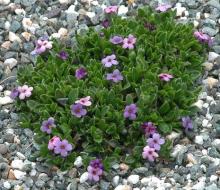
By the way, check out the 1-page list of New Zealand rock garden plants (many with image links), some very choice items there.
Hokonui Alpines Plant Catalogue
New Zealand Alpines and Rock Garden Plants
http://users.actrix.co.nz/hokpines/catalogue-3.html#1
Re: New Zealand Alpine Flora
Trond, the image link to Myosotis 'Hokonui' still doesn't work here, tried it on two computers, in both Firefox 9.x and Internet Explorer 9.x, gives error: "Not Found, the requested URL /hokpines/myohok.jpg was not found on this server". I suspect the image was removed but that your browser might have it cached. If others in North America can try the original link above and let us know if it works or not, I would appreciate it.
Doesn't work for me either using Safari on a Mac.
Wonderful scenes and plants! Thank you for posting! Those glacial lateral moraines look pretty recent (at least in geological terms)... was there much plant life growing there?
Re: New Zealand Alpine Flora
Very interesting list - when Graham Hutchins of County Park Nursery was collecting and distributing NZ plants, this was a wonderful source of plants in the UK and I remember growing a lot of the smaller choice hebes. They are the most intriguing and fascinating plants (all NZers) and the new book that has just been published a 'must have'.
Re: New Zealand Alpine Flora
Hello Lori,
When I was a student ( some time ago) you could drive to Ball Hut on the road built on lateral moraine that has now collapsed due to the Tasman Glacier retreating. The road was built on the moraine shelf and now the ice has gone (or lowered significantly in parts) the morainic debris just falls down into the void. There is now a big lake at the terminus of the Tasman Glacier and they take tourists out on it in boats. If you are (un)lucky and are close enough you can get a bit of a thrill when the ice collapses into the lake making a big wave. The collapsing moraine is very raw but it is rapidly colonised by a number of plants: nitrogen fixers Coriaria and Carmichaelia. Other species that are common are Muehlenbeckia axillaris, Stellaria gracilenta, Geranium brevicaule, Parahebe decora and various species of Epilobium.
I have located a photo taken in September last year that shows the moraines below the terminal lake of the Mueller Glacier at Mt Cook: it shows a series of moraines of different ages with the successional vegetation. Prominent in the foreground on an old stable moraine ate Podocarpus nivalis, Griselinia littoralis and Aciphylla aurea.
Re: New Zealand Alpine Flora
Mark, Maggi's link works perfect for me and has done so all the time.
Didn't work for me, but I subtracted the picture info and just went to the homepage- interesting site- I was esp interested to see they offer seeds, though currently the list is offline for updating..
http://users.actrix.co.nz/hokpines/
Re: New Zealand Alpine Flora
Dave and David, I second Cliff's declaration "wonderful stuff"
I had no idea that Gentianella saxosa was a coastal plant, growing among sea shells! Is it always a lowland plant
Thanks Mark and Cliff.
Yes G.saxosa is a lowland plant found around the southern coastal regions and i believe on Stewart Island .Habitat can be just above the high tide mark to sand dunes and rocky places.
Wonderful scenes and plants! Thank you for posting! Those glacial lateral moraines look pretty recent (at least in geological terms)... was there much plant life growing there?
Thanks Lori
David Lyttle has mentioned colonisers --others are the Raoulia's and in the Epilobium genus E.melanocaulon is prolific.I've sometimes thought that in it's best forms it might warrant cultivation in a pot with careful attention to removing seed heads. :-\ .I'd certainly not risk it in the garden proper here.
Travel up towards the Ball Pass area is what i call interesting as on your right side is the lateral moraine, however on your left side .close to hand ,is a steep mountain range from where frequent avalanches sweep down and across the defunct road and sometimes up the lower part of the moraine wall.
In fact last week the 3 of us were discussing the differences in the colour of the rock .Hopefully the following pic will show what i mean.
Cheers Dave.
Re: New Zealand Alpine Flora
Trond, the image link to Myosotis 'Hokonui' still doesn't work here, tried it on two computers, in both Firefox 9.x and Internet Explorer 9.x, gives error: "Not Found, the requested URL /hokpines/myohok.jpg was not found on this server". I suspect the image was removed but that your browser might have it cached. If others in North America can try the original link above and let us know if it works or not, I would appreciate it.
Mark, you probably are right! I still have it on my computer but can't open it on others.
Dave & David, both plants and places are lovely!
Re: New Zealand Alpine Flora
Some great and interesting landscapes and plants, guys!
David L- all the Myosotis shown are lovely- the little annual is quite appealing, even if it needs macro to be so!
Dave- the Brachyglottis seems to have very nice foliage...
Re: New Zealand Alpine Flora
Have just finished catalouging several batches of pictures. Here is a bit of a random selection mainly from the St Marys Range in North Otago.
The first is Kelleria villosa var villosa showing the plant and a close up view of the flowers and foliage.
[attach thumb=1]
[attach thumb=2]
Pimelea oreophila subsp lepta which is commonly found in the eastern tussock grasslands of the South Island.
[attach thumb=3]
Pimelea notia a recently described species. differs from the preceeding in that the leaves are sparsely hairy
[attach thumb=4]
[attach thumb=5]
Raoulia tenuicaulis a mat forming daisy very common on gravel riverbeds - here it is growing on a road margin.
[attach thumb=6]
One of my most recent preoccupations has been trying to figure out various Celmisia species. Here is Celmisia angustifolia which can sometimes be confused with Celmisia brevifolia.
[attach thumb=7]
It can also be confused with Celmisia densifolia so here are the two growing together. (Celmisia densifolia is top specimen note broader leaves)
[attach thumb=8]
Dracophyllum rosmarinifolium with Gaultheria crassa growing in front. The tussock is the narrow-leaved snow tussock Chionocloa rigida with a patch of the clubmoss Lycopodium fastigiatum in the left foreground.
[attach thumb=9]
A flowering plant of Gaultheria crassa.
[attach thumb=10]
Re: New Zealand Alpine Flora
David L, for those unfamiliar with these plants, might it not be useful to include something to give an idea of scale in the photos, or descriptions ? :)
Re: New Zealand Alpine Flora
David L, for those unfamiliar with these plants, might it not be useful to include something to give an idea of scale in the photos, or descriptions ? :)
Yes, the Kelleria Pimelea and Raoulia pictures are = or > life size.
Re: New Zealand Alpine Flora
Especially interesting to see the groupings of various plants growing together..
Re: New Zealand Alpine Flora
Yes, I too especially like the multiple plant photos, and it's a treat having more than just the "main attraction" identified!
In that last pic, it looks as though the Gaultheria produces a dry compartmentalizes fruit, rather than a berry?
Re: New Zealand Alpine Flora
Brilliant images, David. Many thanks for posting.
Re: New Zealand Alpine Flora
Cohan,
Very happy to show the plant goupings to give ecological context to the different species.
Rick,
NZ Gaultherias have diverse fruits; the fruit is a capsule ( dry in the case of G. crassa) or may surrounded by an enlarged fleshy calyx ( G. depressa var novae-zelandiae - the snowberry which is edible) Pernettya was originally distinguished from Gaultheria by the fruit being baccate (according to the glossary this has a fleshy mesocarp) Pernettya is now included in Gaultheria ( Pernettya macrostigma = Gaultheria marostigma) as bigeneric hybrids between various species are common so the fruit characteristics were not a particularly good character to divide the species into different genera.
Cliff,
I hope the S.P.A.T consortium treats you gently when you visit and you are able to see the plants in the field for yourself!
To continue on the Ericaceae theme here is a picture of Leucopogon fraseri which acommon widespread plant but very difficult to get the detail in the flower.
[attach thumb=1]
Next Myrsine nummularia with its very small flowers It has an attractive blue berry
[attach thumb=2]
Nertera scapanioides (or I think it is this species rather than the more common Nertera depressa)
[attach thumb=3]
[attach thumb=4]
Anisotome aromatica - there are innumerable forms of this species
[attach thumb=5]
A small cress Cardamine bilobata
[attach thumb=6]
Growing on the same outcrop two small ferns Grammitis poepiggiana and a Hymenophyllum I have not been able to identify.
[attach thumb=7]
Coriaria plumosa which is a primary coloniser and nitrogen fixer (symbiont is Frankia rather than Rhizobium)
[attach thumb=8]
In the beech forest at lower altitudes the mistletoe Peraxilla tetrapetala was flowering profusely. Thie species is very sensitive to possum browsing and was almost wiped out until the pests were brought under control by the Department of Conservation. In both cases the plants are growing on mountain beech Nothofagus solandri var cliffortioides but we also found plants growing on two alternative hosts, Coprosme propinqua and Aristotelia fruticosa.
[attach thumb=9]
[attach thumb=10]
Re: New Zealand Alpine Flora
David, I never tire of admiring the flora of NZ! Interesting ferns too (any chance of spores?) and an extraordinary mistletoe!
Re: New Zealand Alpine Flora
Thanks for answering my query in detail, David. I ate it up. ;D
Interesting how a genus can encompass both fleshy fruit and dry capsules, isn't it, Mark... ;)
I marvel when I look at so many genera I am familiar with in my region, only to find so much more diversity in the same genera in other places. So often I say to myself, I never would have guessed it belonged to such and such genus...
Re: New Zealand Alpine Flora
All the lithophytes are very nice!
The mistletoe is quite splendid- nothing grows on trees here except lichens and moss!
Re: New Zealand Alpine Flora
Trond,
I think the ferns would be challenging horticultural subjects especially the Hymenophyllum - I have never heard of anyone successfully growing it.
Rick,
It certainly was an interesting question you raised about the fruits if the Gaultheria - I went back and took a careful look at some of my photographs and found examples of the variations. Gaultheria crassa as you have noted has a dry capsule.
[attach thumb=1]
In Gaultheria depressa var novae-zelandiae the calyx is enlarged and surrounds the capsule.
[attach thumb=2]
In Gaultheria macrostigma and Gaultheria parvula (diagnostic for the former genus Pernyetta) the calyx is fleshy but the mesocarp is enlarged and forms the bulk of the fruit.
[attach thumb=3]
[attach thumb=4]
Cohan,
The mistletoe has evolved for bird pollination hence the bright red colour and flower structure - none of our alpine flora is brightly coloured or is specifically designed for bird pollination. see the close ups
Re: New Zealand Alpine Flora
Thanks, David. Next time I get an opportunity, I am going to have to look more closely at our native Gaultheria procumbens and G. hispidula edible fruits. I don't remember ever feeling in my mouth any capsule/calyx "separation". The seemed very homogeneous on my palate, but I've never examined a cut berry.
----------------------------------
That mistletoe is much more interesting in close up! :o
Re: New Zealand Alpine Flora
Very showy mistletoe indeed! It's a category of plant I know very little about- having never seen any in person! But I would have thought they were in general inconspicuous plants- shows how much I knew ;D
Re: New Zealand Alpine Flora
Here is a link that goes into detail about bird pollination of Peraxilla. The plant needs the birds to physically open the flower to gain access to the nectar. The structure of the flower has evolved to favour birds as pollinators. The link has video footage of bellbirds and tuis opening the flowers.
http://www.biol.canterbury.ac.nz/mistletoes/pollination.shtml
I will put in a close up showing an opened flower (there are actually 2) with a group of unopened flowers lower down
Re: New Zealand Alpine Flora
Trond,
I think the ferns would be challenging horticultural subjects especially the Hymenophyllum - I have never heard of anyone successfully growing it.
David, Hymenophyllum wilsonii is rather common around here but I don't have it in my garden though. However I have planned to try it as I have some suitable habitats I think.
Though I did think of some of the other ferns in your pictures too ;)
The berry/capsule "problem" in Gaultheria/Pernettya is similar to Actaea/Cimicifuga. Actaea has berries but Cimicifuga has capsules. It is not a great genetic difference between a berry and a capsule though.
Does the mistletoe spread by berries eaten by birds like the European Viscum album? (I have Nothofagus in my garden ;) )
Re: New Zealand Alpine Flora
Trond,
Several species of Hymenophyllum extend into the alpine zone in New Zealand. They are found in rock clefts and similar sites habitats very similar to Hymeophyllum wilsonii in Europe. The most frequently encountered is Hymenophyllum multifidum which is also common in Nothofagus forest but is dwarfed in the alpine environment.
Peraxilla is spread in the same manner as European mistletoes by birds eating the berries as are our other mistletoes Alepis, Ileostylus and Tupeia. The remaining group Korthalsella are also dispersed by birds apparently the fruits are weakly explosive and become attached to birds that brush up against the plants.
I have never actuallyseen the berries of Peraxilla except in pictures but I have not made a point of looking for them. They are red and look attractive (to a bird any way).
Re: New Zealand Alpine Flora
Thanks David. Although mistletoe (Viscum album) is native in Norway it is very rare. I've only seen it a couple times but I try to establish it on my property (and exotic ones too if I get the chance!).
Re: New Zealand Alpine Flora
Spent yesterday up on the ‘hills’ of Northern Southland with a couple of friends, John Fitzgerald and fellow forumist David Lyttle.
I was most interested to see how the Celmisia’s were coping with the big ‘dry' and while most seemed to be okay we found very few plants in seed.
Some of the C.verbascifolia’s had pronounced leaf roll however no more in numbers than what I’ve seen previously on this Range.
I think we ticked off well over a dozen species/hybrids ---David kept on mentioning we should have started a list ………
Just a few pics
Fellow enthusiasts.
The silvery growths of Celmisia linearis .
Close up.
John on a well vegetative Celmisia slope.
Two pics of Celmisia verbascifolia showing the pale white tomentum.
Large silver grows of Celmisia semicordata ssp stricta.
Acaena saccaticupula on one of the snow banks.
Cheers Dave.
Re: New Zealand Alpine Flora
Oh boy- love the foliage of every one of those (including Acaena), but maybe especially C linearis!
Re: New Zealand Alpine Flora
I agree the Celmisia species are fantastic, particularly C. linearis... wow! The Aceana surprises me, this one has such oversized stocky, almost muscular stems; intriguing.
Re: New Zealand Alpine Flora
I was in contact with Lou at Hokonui Alpines today and was informed their seedlist had been updated and was now on line , so I just had to have a peek. :)
Fresh seed of some of the wonderful small Celmisia sps are listed as well as a number of other NZ alpines including the yummy Aciphylla simplex :P :P ---- and other gems from regions around the world.
The link is below for those that are interested.
users.actrix.co.nz/hokpines/seedlist.html
Cheers Dave.
Re: New Zealand Alpine Flora
For the record I recorded 14 species of Celmisia and 6 hybrids. There are two additional species that I am fairly sure are there but did not see and then there are a couple of entities that are are not formally described which may or may not be there. I was busy photographing and documenting the hybrids.
Re: New Zealand Alpine Flora
I will post a few Celmisia pictures to add to what Dave has already posted.
A cushion of Celmisia sessiliflora growing in Chionochloa rigida tussock grassland - the site is quite damp with the moisture loving habe Hebe pauciramosa present as well.
[attach thumb=1]
Every one photographs the same plant; Celmisia sessiliflora x lyallii (C. linearis). (Dave has PVR rights over this plant so we will henceforth call it Celmisia x linearis ' Toolei ' )
[attach thumb=2]
A colony of Celmisia semicordata subsp. stricta with a large Celmisia verbascifolia centre right.
[attach thumb=3]
Here is a hybrid between the two species (bottom right) growing with its parents Celmisia semicordata susp.stricta and Celmisia verbascifolia (rear)
[attach thumb=4]
Celmisia verbascifolia and Celmisia lyallii behind it
[attach thumb=5]
and the hybrid between the two
[attach thumb=6]
A hybrid between Celmisia verbascifolia and another species which I am guessing is Celmisia brevifolia growing at the bottom right of the photo. It is not a pretty plant
[attach thumb=7]
Celmisia densiflora showing the tomentose white undersides of the leaves. The leave are turned up in response to the dry conditions. This is a widespread species that forms extensive mats. The stems are quite woody.
[attach thumb=8]
Last a hybrid between Celmisia lyallii and Celmisia densiflora. The plant on the bottom right is the hybrid. The plant beside it is a small specimen of Celmisia lyallii and Celmisia densiflora is growing at the top left.
[attach thumb=9]
Finally another example of the Celmisia densiflora x lyallii hybrid.
Re: New Zealand Alpine Flora
Really love those pics with the hybrid celmisia and the parents.
In this pic, is all the white on the center background knoll celmisia, too?
[attach thumb=1]
Re: New Zealand Alpine Flora
Dave has PVR rights over this plant so we will henceforth call it Celmisia x linearis ' Toolei '
Now where have I heard that before ?
Nice pics Daves
Re: New Zealand Alpine Flora
Really love those pics with the hybrid celmisia and the parents.
In this pic, is all the white on the center background knoll celmisia, too?
The top of the knoll is schist rock and most of the white colour is due to lichens
Re: New Zealand Alpine Flora
I have always regarded Celmisia as a rather tender genus but I have come to look at it (or some species at least) as very hardy and possible to grow at my mountain cabin!
Re: New Zealand Alpine Flora
Hi Trond,
Celmisias are very diverse in terms of their growth form and habitat requirements. There are a number of snowbank species that may perhaps grow in Norway as in general NZ plants do not tolerate hard frosts. I would suggest that the snowbank species, Celmisia hectorii, Celmisia haastii and Celmisia prorepens might be worth trying. I tend to avoid growing snowbank plants as I cannot satisfy their winter dormancy requirements. I find some of the the species with woody stems (eg Celmisia densiflora, Celmisia brevifolia, Celmisia walkeri) can be propagated easily from cuttings and do well for me if grown in pots. The larger Celmisias such as C. semicordata are a bit problematic as they can collapse very rapidly if stressed though there is a coastal species called Celmisia mackaui that seems to thrive here. Celmisia hookeri from East Otago is another species that can be successfully cultivated though the plant I have in my crevice garden seems to have turned up its toes in our current drought.
Re: New Zealand Alpine Flora
Wonderful pictures and really interesting to see all those hybrids. There will be AGS members queuing up to grow C. x linearis 'Toolei'!! I am having a bit more success with some of the small alpine species growing in deep moist sharp sand on the cool end of a raised bed - but we did have a wet summer last year! David Sampson used to grow some species well in the garden in the south, but nothing like Alan Furness in Northumberland. I don't think the climate there can be too different to parts of Norway, so you could do well with them Trond.
And thanks for the seedlist website! Some nice things there...
Re: New Zealand Alpine Flora
Thanks David, a long list to start with! Plants are never for sale here so I have to try seed or import from abroad :-\
I have 3 different places with different climate where I can try plants so hopefully a couple will make it - if I get any!
Re: New Zealand Alpine Flora
Tim, I have to try some! And I can provide both a coastal mild and humid (well, it used to be) climate and a climate with warmer summers and slightly colder winters and a low alpine climate ;D
Re: New Zealand Alpine Flora
Celmisia x linearis not just a good foliage plant. Certainly a good subject for a potted show plant. Flowering here early November, and a closeup.
Re: New Zealand Alpine Flora
Celmisia is not just a good foliage plant. Certainly a good subject for a potted show plant. Flowering here early November, and a closeup.
This is the best form of C x linearis I have seen. The epithet C. x linearis has been applied to a diverse range of Celmisia sessiliflora hybrids. Knowing the origin of this one I have suggested it is a hybrid between C.sessiliflora and C. insignis. Of course some TLC shows the plant to its best advantage.
Re: New Zealand Alpine Flora
Here are some pictures of the now famous (or infamous depending on your point of view) Hebejeebie trifida ( syn Veronica trifida) growing at a snowbank site at about 1500 m on the South Hector Mountains. The plants are of remarkable size and vigour for this species flourishing because of a liberal dressing of sheep manure supplied liberally by the sheep that for some reason camp there.
1. A small plant - there are some larger ones
2. flower - there were still a few late flowers around
3. shoot showing the very distinctive glandular hairs of this species. It is not always easy to distinguish Hebejeebie trifida from some forms of Hebejeebie densifolia but these hairs are diagnostic.
Re: New Zealand Alpine Flora
Super close-up in your last pic, David.
Some clarification needed please from your post - which is correct : Hebejebie - Hebejeebe - Hebejeebie ?
M
Re: New Zealand Alpine Flora
Celmisia is not just a good foliage plant. Certainly a good subject for a potted show plant. Flowering here early November, and a closeup.
This is the best form of C x linearis I have seen. The epithet C. x linearis has been applied to a diverse range of Celmisia sessiliflora hybrids. Knowing the origin of this one I have suggested it is a hybrid between C.sessiliflora and C. insignis. Of course some TLC shows the plant to its best advantage.
It is fine indeed for foliage and flowers- hard to beat such a smart show plant, I would imagine.
Re: New Zealand Alpine Flora
Super close-up in your last pic, David.
Some clarification needed please from your post - which is correct : Hebejebie - Hebejeebe - Hebejeebie ?
Hello Ian,
I covered all options didn't I - It is Hebejeebie
Re: New Zealand Alpine Flora
Super close-up in your last pic, David.
Some clarification needed please from your post - which is correct : Hebejebie - Hebejeebe - Hebejeebie ?I covered all options didn't I - It is Hebejeebie
Thanks David - lets us see just how the use of these names can give folks the heebiejeebies, eh?! ;) ;D
M
Re: New Zealand Alpine Flora
Celmisia is not just a good foliage plant. Certainly a good subject for a potted show plant. Flowering here early November, and a closeup.
Senecio, that's one fine looking pot-grown Celmisia, the foliage is amazing.
It seems that Mr. Michael J. Heads, the person who coined genus name Hebejeebie in 2003, has a sense of humor.
Googling around, I see in a 2012 publication, that none of the Hebe-related genera stand (Hebe, Parahebe, Chionohebe, Leonohebe, Heliohebe, and Hebejeebie), all have been sunk into Veronica. At the bottom of the following web page, is a link to a PDF listing of all NZ Hebe relations, for a total of 141 Veronica species. :o
http://nzprn.otago.ac.nz/wiki/bin/view/NZPRN/TaxaVeronica
Re: New Zealand Alpine Flora
Celmisia is not just a good foliage plant. Certainly a good subject for a potted show plant. Flowering here early November, and a closeup.
It seems that Mr. Michael J. Heads, the person who coined genus name Hebejeebie in 2003, has a sense of humor.
Googling around, I see in a 2012 publication, that none of the Hebe-related genera stand (Hebe, Parahebe, Chionohebe, Leonohebe, Heliohebe, and Hebejeebie), all have been sunk into Veronica. At the bottom of the following web page, is a link to a PDF listing of all NZ Hebe relations, for a total of 141 Veronica species. :o
http://nzprn.otago.ac.nz/wiki/bin/view/NZPRN/TaxaVeronica
Michael Heads is best known in New Zealand for his somewhat controversial views on panbiogeography and vicariance. For a synopsis of his work seehttp://johngrehan.net/index.php/panbiogeography/panpublications/michael-heads-publications/ I do not count myself amongst his acolytes and listened to an exorticating criticism of his Abrotanella paper at the Southern Connections Congress held here in Dunedin in January. I can supply details if anyone is particularly interested. For a very readable and informative account of New Zealand's biogeography I recommend Ghosts of Gondwana: The History of Life in New Zealand by George Gibbs.
Phil Garnock Jones who supplied the content for the web page on Taxa/Veronica that Mark refers to, argues (very persuasively) that since all New Zealand Hebes Chionohebes Parahebes etc are nested within the Northern hemisphere genus Veronica all the separate genera should be subsumed into Veronica. Many New Zealand botanists disagree with this view and it is fair to say it has not gained universal acceptance; Alan Mark uses Hebe, Parahebe, Chionohebe, Leonohebe, Heliohebe, and Hebejeebie in his new book but supplies the synonyms in Veronica for anyone who wishes to use them. The NZPCN website does not use Veronica at all for the different genera. It can be argued that the genus Veronica has undergone sufficient evolutionary diversification in the Southern hemisphere and that the descendants of the original Veronica have diverged sufficiently from their ancestors to be given their own generic status. This is an exact parallel to the Dodecatheon/ Primula situation in North America where the name Dodecatheon is applied to a group of Primulas that have gone done a seperate evolutionary path with respect ot their pollination biology. So for the time being I will continue to use Hebe, Parahebe, Chionohebe, Leonohebe, Heliohebe, and Hebejeebie. I suspect Dodecatheon is still widely used in North America.
Re: New Zealand Alpine Flora
So for the time being I will continue to use Hebe, Parahebe, Chionohebe, Leonohebe, Heliohebe, and Hebejeebie. I suspect Dodecatheon is still widely used in North America.
Quite so, David - hard to find any grower who cannot quite easily discern between most of the hebe "variations" and a veronica or between a primula and a dodecatheon - a lot of us are sticking with the names we recognise, I think.
Re: New Zealand Alpine Flora
David, does that make Veronica a paraphyletic taxon?
Re: New Zealand Alpine Flora
David, does that make Veronica a paraphyletic taxon?
If you think Hebe, Parahebe, Chionohebe, Leonohebe, Heliohebe, and Hebejeebie are worthy of generic status yes but Phil Garnock Jones does not think Northern hemsphere taxonomists would be willing to carve Veronica up into multiple genera.
On thinking a bit more about your question the answer is possibly more accurately no as Veronica has a common line of descent; Hebe and the other Southern hemisphere genera are nested within it.
Sorry to be so equivocal about your question.
Re: New Zealand Alpine Flora
Thanks David, I am satisfied. Things don't always have a clear-cut answer!
Re: New Zealand Alpine Flora
Went for a little walk today ---Cool conditions with a very strong wind so i kept well away from the edge of the drop offs.
My visit was primarily seed hunting ,and as i wanted to cover as much ground as possible i packed light ,so for the first time in many many years i left the camera in the vehicle ......
I should have known better :rolleyes: :rolleyes: as there were still some nice gems in flower-----
namely, fields of a very dwarf form of Gentianella bellidifolia ,(syn G. bellidifolia var australis ), and surprisingly a small number of Ranunculus buchananii where the flowers were displaying a spidery effect having just about gone over.I even found one plant that had buds yet to open !.
So i hope you don't mind if i cheat a little bit and show a couple of pics from back in 2011 showing the Gentianella habit in cushion field and the Ranunculus at the spidery stage . :-* :-*
I'm away tomorrow again but this time I'll be taking the camera :D
Cheers Dave
Re: New Zealand Alpine Flora
What superb photos! Gorgeous plants and scenery.
Re: New Zealand Alpine Flora
So i hope you don't mind if i cheat a little bit and show a couple of pics from back in 2011 showing the Gentianella habit in cushion field and the Ranunculus at the spidery stage . :-* :-*
Cheers Dave
No, not at all!
Re: New Zealand Alpine Flora
Thanks Lori and Trond.
Here's a small selection from yesterday.
Gentianella serotina in bloom.
Bold foliage of Aciphylla aurea contrasting with the silver foliage of Celmisia semicordata ssp stricta.
Focus on the growth habit of the crevice loving Celmisia philocremna.
South Island edelweiss ,Leucogenes grandiceps.
Cheers Dave.
Re: New Zealand Alpine Flora
Oh Dave,
That C. philocremna is breathtaking ... we see it on the show benches here in the UK, but to see it growing in habitat ... Wow!!!!
Re: New Zealand Alpine Flora
Oh Dave,
That C. philocremna is breathtaking ... we see it on the show benches here in the UK, but to see it growing in habitat ... Wow!!!!
I don't agree, Cliff! They are all breathtaking ;) But I would prefere to grow them in a rockery :o
Re: New Zealand Alpine Flora
Oh Dave,
That C. philocremna is breathtaking ... we see it on the show benches here in the UK, but to see it growing in habitat ... Wow!!!!I don't agree, Cliff! They are all breathtaking ;) But I would prefere to grow them in a rockery :o
Thanks Cliff ,Hoy
It took a bit of an effort to get up there --both sections of the track have deteriorated quite badly in the 12 months since i last visited ...I won't be going back .. until it has been upgraded.
Cheers Dave.
Re: New Zealand Alpine Flora
Glad you made a safe return from the poor track, Dave!
Re: New Zealand Alpine Flora
Glad you made a safe return from the poor track, Dave!
Thanks
My body survived Cohan, unfortunately my wallet took a pounding --$285 bike repair bill ! :'( :'( :'(
Not so cherry Dave.
Re: New Zealand Alpine Flora
This morning I went on a field trip to Tunnel Beach just south of Dunedin City. The good thing about living here is when you do not have enough time or inclination to drive to the mountains you can always go to the coast. The area has some spectacular sandstone sea cliffs. The day was fairly brisk but it did not rain and we were home by lunchtime. I will post some scenic shots first
Re: New Zealand Alpine Flora
Here are a few more plant pictures. A feature of the area is the coastal turf vegetation. If you look carefully in the last photograph of the first set you can see the fragments of kelp just above where the people are crouching. We did not find anything unusual or rare.
1. Glasswort (Sarcocornia quinqueflora subsp. quinqueflora).
2. Senecio carnosulus. This plant is classified as naturally uncommon notwithstanding my earlier comments.
3. A cascade of mosses and liverworts growing on a seepage down the cliff face.
4. Detail of bryophytes.
5. A fringe of Hebe elliptica growing on the cliff edge.
6. Black-backed gulls.
Re: New Zealand Alpine Flora
Interesting pics David
I was down on the coast today a bit further south of you trying to locate Luzuriaga parviflora ,(Lantern Berry) ,in the coastal forest --my 2nd visit without any luck ...... :' I'm now thinking that although it's been 'recorded' as being in the area ,it's very localized.
Cheers Dave.
Re: New Zealand Alpine Flora
Dave,
Luzuriaga is down in the Catlins near Papatowai and it is up on the Longwoods as well. Since you did not find it I will pop in a photo I took in the Longwoods about a year ago for you.
Re: New Zealand Alpine Flora
Interesting photos, David.
What is it that is to the lower right of the Senecio?
Re: New Zealand Alpine Flora
Interesting photos, David.
What is it that is to the lower right of the Senecio?
I noticed that Rick ... looks like a species of Salicornia?
Re: New Zealand Alpine Flora
Perhaps it's another of the glassworts (Sarcocornia quinqueflora subsp. quinqueflora) that was shown in the previous set of photos?
Re: New Zealand Alpine Flora
Interesting photos, David.
What is it that is to the lower right of the Senecio?
Lori and Cliff are correct.It is Sarcocornia quinqueflora subsp quinqueflora formerly known as Salicornia australis. Here are a couple of pictures of the plant; covering the salt flats at the entrance of the Otago Harbour at Aramoana, and a close up of the plants with flowers
Re: New Zealand Alpine Flora
David, very interesting! I am familiar with (some parts of) the Norwegian coast (it is roughly 25000km long if you add all the islands!) but your coast is quite different from anything here. Some plants are similar of course but some are very unfamiliar!
Re: New Zealand Alpine Flora
Interesting views! Ocean coastlines are much more exotic (at least much farther away!) here than mountains ;D
Re: New Zealand Alpine Flora
Just back from the Nelson AGS study weekend ar Lake Rotoiti, Nelson Lakes. Drove back from Westport to Dunedin today: it was a bit of a long drive and was slightly damp driving up the Otira Gorge through to Arthurs Pass. Took a short cut gravel road from Lake Lyndon to Lake Coleridge. I must have dodged a dump of snow as there was fresh snow on Mt Hutt and the eastern foothills of the Southern Alps. Here are some pictures I took on the drive up through the Lewis Pass on Friday.
1&2 Tarn at Lewis Pass
3 Bog pine (Halocarpus bidwilli) at Lewis Pass
4,5,6 Lichens on mountain beech trees ( mainly Usnea)
7 Lichens, fungi and mosses
8 Stone with crustose lichens
9 Mountain beech trees
10 Astelia nervosa
Re: New Zealand Alpine Flora
The next set of picture was taken on my way home from Nelson Lakes. The Buller River flows out of Lake Rotoiti and flows out to sea ar Westport. The highway more or less follows it down and that is the way I went.
1 Upper Buller Gorge. The road folllows the true right bank at this point.
2. Side creek entering the Buller River note how stained the water is.
Stayed overnight at Westport and headed down the coast to Punakaiki next morning. The lady at the compground said it was going to be a fine day. The first walk I did was a 20 min track to the beach. It was raining so I left the camera behind and when I came back it had stopped raining so went to the next walk which was up the Porariri River. I took the camera and got some good pictures.
3&4 Porariri River flowing out of the Paparoa Range to the coast.
5. Arch under the roots of a big rata tree on the Porariri river track
6. Cardiomanes reniforme - a fern. Note the Tmespteris on the lower left
7. Forest vegetation on the river bank There are tree ferns, nikau palms and Freycinetia banksii in abundance. The Freycinetia is the gassy tufted thing centre - do not ever try walking through a clump of it!
8&9 Nikau Palms and Nikau palm fruit
When I got back to the car it had started raining again so I did not bother walking out to see the blowholes at Punakaiki and drove south to Greymouth.
10 Coastal view south of Punakaiki
Re: New Zealand Alpine Flora
Before I tackled the transalpine crossing of Arthurs Pass I thought I better have some lunch at Greymouth. I headed out to Lake Brunner and this is the last photo I took until I was well over the other side.
1. Lake Brunner
The road heads into the murk at the far right of the picture. It was raining at the bottom of the climb up to the pass so much so that the water was beginning to overtop the bridge at Kelleys Creek. It was raining all the way up the Otira Gorge: some of the road has a roof built over it to divert the water and this was cascading over the lip and down the hillside.
2 For the record; the road up to the pass taken last January
It was raining at Arthurs Pass village, it was raining at the Waimakariri bridge, it was raining at Craigieburn, it was raining at Castle Hill basin so I took the back road from Lake Lyndon to Lake Coleridge. I had not travelled that way before; it is a gravel road and is a bit rough.
3 Acheron River between Lake Lyndon and Lake Coleridge
The road comes out on a high terrace overlooking the Rakaia River and you can see the Mt Hutt Range.
4. Mt Hutt Range with a coat of fresh snow. There was a bit of slushy snow along the side of the road so I had been fortunate not encountering snow when I crossed Arthurs Pass.
5. Rakaia River looking down river to the east coast of the South Island.
I arrived home in Dunedin about 8.30 so it had been an interesting day. It was a north to south, west to east trip with a huge contrast in the scenery and weather.
Re: New Zealand Alpine Flora
David, very exciting! I love it all from the lichen to the grand landscape!
Re: New Zealand Alpine Flora
Trond, It was an interesting trip;I was not lingering because of the weather. I got about an hour between the showers at the Porariri River where I took the photos of the nikau palms. They do not grow this far south. I find them quite fascinating and exotic despite the fact my main interest is alpines.
Nice pics David of your trip
Nice pics David of your trip up country ,especially of the Nikau's.
I've tried the Chatham Island form once without success however a plant apparently raised from seed collected on Banks Peninsula near Christchurch has survived a couple of winters here in it's pot just on the edge of the bush.It needs planting out if I'm going to see it reach height and flowering .....
Cheers Dave.
Have just sorted out my
Have just sorted out my password so I can log on to the site now it has been rebuilt so will do a brief post as a test. The photos were taken at Careys Ceek just north of Dunedin about a week ago.
The photo shows mainly native vegetation growing along side the creek; the area is a frost hollow and contains a lot of divaricating shrubs rather than forest. The large tree on the right is a broadleaf ( Griselinia littoralis)
Further up on a very steep-sided spur I photographed some fungi growing in mixed Kunzea/Leptospermum forest.
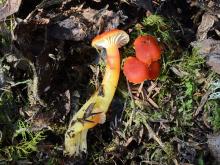 This small red mushroom is a species of Hygrocybe
This small red mushroom is a species of Hygrocybe
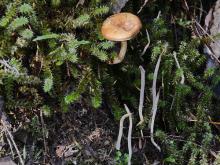 There is a small brown mushroom and some coral fungi growing amongst the moss neither of which I was able to identify. It was a challenge to get a good exposure for everything in the photo.
There is a small brown mushroom and some coral fungi growing amongst the moss neither of which I was able to identify. It was a challenge to get a good exposure for everything in the photo.
Earlier I had found a huge old totara (Podocarpus cunninghamii) growing in an inaccessible spot at the base of some bluffs. Most of this area has been milled over and burnt in the past so it was good to see that a least one of the original large trees had survived. Sorry no photos- it is difficult photographing large trees in thick bush.
Please to see you are getting
Please to see you are getting out and about David.
There are still some fungi showing in the bush here as well.
I posted a few pics back on the 12 June under the General Forum --it was about the time of the Forum upgrade so not sure if you have seen them.
It's forecast to reach 16C down this way on Sat so i might go for a bit of a wander down the coast.
Cheers Dave.
Spent last weekend up country
Spent last weekend up country on the first S.P.A.T. field trip of this season.
On the way we stopped off at an anglers access to view the declining Pimelea sericeovillosa ssp pulvinaris and common mat daisy Raoulia australis which is quite distinctive with its yellow flowers .
Myosotis uniflora was also in bloom .While a number of cushions had faded yellow flowers where most had gone over to white, on a cooler spot we found a plant that had not yet done so.
Pete decided to park up on a Raoulia field where upon exiting the vehicle we were ' informed' by a 'local resident' that this was his patch and to move on ....Here he is, a male Banded Dotterel, trying i think , to mimic a pair of broken wings in an attempt to lead us away from his nest which had a clutch of 3 eggs.
Curious that those three eggs
Curious that those three eggs are separated and not together. I would have thought it would be more difficult for the mother to keep them all warm.
Definitely aids in the camouflage, though.
RickR wrote:
[quote=RickR]
Curious that those three eggs are separated and not together. I would have thought it would be more difficult for the mother to keep them all warm.
Definitely aids in the camouflage, though.
[/quote]
I thought that as well Rick .I understand Incubation is performed by both adults for about 4 weeks and chicks fledge after another 5-6 weeks.....
Continuing on with the weekend ,next morning the cloud was low as we made our way up the Hooker Valley.
View into the Terminal lake of the 13k long Mueller Glacier.
Doug's daughter Samantha is 8 and already has a healthy interest in getting out and photographing in the mountains .At this rate I suspect it won't be too long before she will be ahead of us in terms of plant knowledge and photography........![]() .
.
Further up the valley the weather started to improve allowing glimpses of Mt Cook ,followed by a nice flowering specimen of Aciphylla aurea .
A trio of pics of Ranunculus lyallii --the clumps with the brown showing underneath the leaves being most attractive.
John ,another member of our group up high on eastern slopes with the massif of Mt Cook as a backdrop.
There wasn't much 'happening
There wasn't much 'happening ' plant wise on the eastern slopes so Pete and i decided to travel down and search over the other side of the lake just below the snow patch indicated by the red X.
This western side was more productive and a number of plants were seen including Gingidia montana and good sized mats of Ourisia caespitosa as we made our way up to the snow patch.
As well as a Euphrasia sps which I have keyed out as petriei because of its broad ,rounded ,lobed leaves. Eventually our way was blocked by snow affected by rock material ,(I'm sure there is a geological term for it .... ![]() - Lori ?.).
- Lori ?.).
So we headed back down again coming across this R.lyallii affected with virus.
.Cheers Dave.
Our long day ended with a
Our long day ended with a short visit to the Tasman River delta to view Raoulia haastii ,followed by Pimelea prostrata.
Thanks Dave! I never think I
Thanks Dave! I never think I'll ever get tired of looking at pictures of plants and landscape from NZ!
Trond you might like this one
Trond you might like this one as well ...Admittedly I haven't had to travel far to take a picture . ![]() Bulbinella rossii looking nice and fresh in a cool spot in the back garden .
Bulbinella rossii looking nice and fresh in a cool spot in the back garden .![]()
Dave,
Dave,
if you need to have a cool place for it we'd need to make room in the fridge!![]()
Superb plant!
cheers
fermi
Fermi wrote:
[quote=Fermi]
Dave,
if you need to have a cool place for it we'd need to make room in the fridge!![]()
Superb plant!
cheers
fermi
[/quote]
Thanks Fermi
You might like the following ....![]()
Phone rings Sunday night..,,,,It’s Mr Newall asking if I wanted to accompany him up a ‘hill’ this week to see if any buttercups were out and as Tuesday’s weather looked okay that’s when he planned to go.
Of course I said yes .
Here’s a number of pics from our 10 hour hike around and up over Smooth Peak, Northern Southland.
Imposing plants of Aciphylla ‘lomond’ on the valley floor.
A couple hours of uphill slog and our first decent stop.Steve in amongst a field of Viola and Carex.
Viola sps and Carex petriei close up.
Most Celmisia semicordata ssp stricta were in heavy bud yet to flower however we found a plant or two lower down near the stream in flower.
A creeping Kelleria sps and close up, growing amongst the snow tussocks.
Steve spied Anemone tenuicaulis ,a first for me.
Geum uniflorum in bloom with the hairy foliage of an Ourisia sps beside it.
Nice pictures Dave, you have
Nice pictures Dave, you have not mentioned the Rumex flexuosus growing with your Carex petriei
We climbed higher into fields
We climbed higher into fields of Celmisia and then onto the scree edges of Smooth peak,(which is appropriately named),and our first sighting of Aciphylla spedenii.
On the screes Steve tended to blend in as he was photographing some yellow weeds .....![]()
........Ranunculus pilifera.
I came across this Myosotis so we sat down again ![]() and had a discussion on it's identity banding about a number of species names
and had a discussion on it's identity banding about a number of species names ![]() .A closer look at my pics and I note the anthers project well beyond the petals so I'm wondering whether it's a form of M.lyallii.
.A closer look at my pics and I note the anthers project well beyond the petals so I'm wondering whether it's a form of M.lyallii.
View down to our vehicle , more or less zigzagging straight down for about 1.45 hours of agony on the joints........![]()
![]() .Raoulia buchananii in the foreground.
.Raoulia buchananii in the foreground.
A great day ,a few laughs between gasping for our breath and although it is early enough it appears to be a good flowering season.
Cheers Dave.
David L wrote:
[quote=David L]
Nice pictures Dave, you have not mentioned the Rumex flexuosus growing with your Carex petriei
[/quote]
Thanks David
Funny enough we did talk about the Rumex ,(NZ dock) .Steve grows this at home at his seed farm and his plants are so vigorous and attractive when grown in cultivation .....
I see you have saved the best
I see you have saved the best to last or do you have more, lovely pictures of Aciphylla spedenii and Ranunculus piliferus. makes me want to get into the car and head out; everything seems to flowering early.
Dave,
Dave,
Since you missed out on the Mt Kakanui trip last weekend I will post some picture on for you and our North American friends. The plants were not is spectacular as yours. We did find some interesting things. Now I have a GPS unit for my camera I can download the images and see exactly where I have taken them thanks to Google Earth. It is accurate to within a few metres.
First Aciphylla montana with separate male and female plants
Aciphylla scott-thomsonii - large plants growing in profusion in a damp gully and a picture of a single plant in flower
Anisotome flexuosa
Next the daisy Brachyscome longiscapa. The genus Brachyscome in New Zealand contains a number of different entities not all have been described
An undescribed species of Cardamine. The New Zealand species are presently being revised We are probably going to end up with 30 + species up from the present 5
Two Celmisias; Celmisia brevifolia and Celmisia lyallii
Another Celmisia - this one
Another Celmisia - this one is Celmisia viscosa. It is rare to see it flowering so well. Second picture shows a plant growing in Chionochloa tussock grassland.
For those of you who like cushions( and chickweeds) here is a plant of Colobanthus buchananii (Caryophyllaceae)
Dracophyllum pronum (Ericaceae formerly Epacridaceae)
Growing on scree Gingidia enysii, a carrot relative
A tiny mat daisy Leptinelle pectinata subsp. villosa tucked in amongst some stones. This species is quite easy to grow in a rock garden.
Lobelia linnaeiodes; I have been trying to get a good photo of this for several years. This is about the best I have managed; the flowers move in the slightest breeze.
Montia sessiliflora, a large flowering clump and the flowers close up.
Phyllachne colensoi This one is growing on a rock outcrop. It is found in bogs as well.
Here is a picture of
Here is a picture of Ranunculus acraeus which is closely related to Ranunculus piliferus that was posted by Dave and Steve earlier. It is not flowering but confirms a historical location record for the species. It has suffered through the depredations of hares and grazing by livestock so it is not longer common throughout its former range. It was good to find it.
The next picture is entitled " Find the buttercup ". The cryptic buttercup Ranunculus crithmifolius growing on scree. Flowering is over and the plant blends perfectly with its background.
Last in this posting an unusual dark form of Viola cunninghamii growing on scree. There is more colour in the flowers than is usual for this species.
Thanks for posting your pics
Thanks for posting your pics David.
Some really nice stuff there especially Aciphylla montana with it's yellow stem and flowering head .
I'm hoping to find Celmisia viscosa and other 'weeds' in bloom on the Old Man Range tomorrow.
Cheers Dave.
Seems Aciphyllas are
Seems Aciphyllas are flowering in profusion everywhere David .Here's some I came across on the 'hill' yesterday ......![]()
Aciphylla scott-thomsonii.
Aciphylla simplex.
Two more ---Either Aciphylla kirkii or A.hectorii ,(I'm not going there ....![]() ), including a damn weevil on the last one ............
), including a damn weevil on the last one ............![]()
Cheers Dave.
Yep , great year to be a
Yep , great year to be a seedpicker Dave
Hope so, buddy!!! Wonderful
Hope so, buddy!!! Wonderful images folks ... keep 'em coming please.
Dave,
Dave,
A lovely Lyperobius weevil; they are taonga as well. I like your picture of Aciphylla scott-thomsonii with the Garvies in the background. I will not attempt to identify your Aciphyllas (since indeterminate Aciphylla pictures are your speciality).
Cliff.
you should have stayed in New Zealand longer as your company in the field was most welcome.
David L wrote:
[quote=David L]
Dave,
I will not attempt to identify your Aciphyllas (since indeterminate Aciphylla pictures are your speciality)
[/quote]
Ha ![]()
![]() .
.
Here's a few more from Saturdays trip to the Old Man Range --Central Otago.
While most of the snow was gone from the exposed ridges there were still snow banks in and beside the hollows.
Celmisia ramulosa var tuberculata in cushion field.
Close up of the very small woolly Anisotome lanuginosa ,(male), growing on a cushion of Dracophyllum muscoides .
Yellow cushions of Phyllachne rubra and close up.
A good flowering year for Celmisia haastii var haastii.
As well as the creeping growths of Ourisia glandulosa .
Rightio that's enough for tonight.![]()
Cheers Dave.
Anisotome lanuginosa and
Anisotome lanuginosa and Phyllachne rubra really caught my eye!
Old Man Range "air temperature extremes range between 24 and -19C."
Sigh.....
These photos are feeding my
These photos are feeding my plant addiction, I see a need for a trip to New Zealand in my future! Like Rick, I find Phyllachne rubra particularly striking, and am fascinated by Celmisia ramulosa var tuberculata. What is with the species name of the Phyllachne? Are the seed heads reddish, or is it one of those plants with changeable foliage colour, depending on the season?
I wondered about the "rubra"
I wondered about the "rubra" epithet, too.
Hello Gordon and Rick.
Hello Gordon and Rick.
I understand 'rubra' refers to the colour of the spent flowers.....
Final pics from last weekends trip.
Fields of Celmisia brevifolia --apologies for the blown out white colours .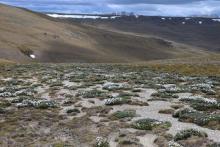
Near snow melt the ground was covered with Ranunculus pachyrrizus ![]() with a visitor enjoying the extra warmth the flowers provide.
with a visitor enjoying the extra warmth the flowers provide.
Chionohebe thomsonii is one of the prominent cushions on depleted vegetative spots.
A very good sized plant of Brachyscome montana .I counted over 30 flowering heads or buds yet to open.(Thanks to David Lyttle for the species id).
Anisotome imbricata var imbricata.
Racing against incoming bad weather I searched quickly trying to locate the cushion forget me not ,Myosotis pulvinaris .Having no luck and deciding to call it quits I returned to find a small plant right beside the motorbike!.![]() .
.

A stop out of the howling wind while on the way back down to the truck ,Ranunculus gracilipes growing in boggy area .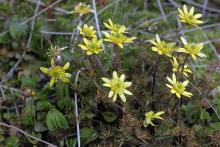
Cheers Dave.
Many thanks to all the
Many thanks to all the wonderful guys who shared our 'buttercup hunting' hikes on South Island.
Two images of David Lyttle ... a most splendid and knowledgeable guide.
ThanKs Cliff, my 15 sec of
ThanKs Cliff, my 15 sec of fame!
Dave , you need to look at your picture of Myosotis pulvinaris again; it is Chionohebe thomsonii. There are some nice plants of Celmisia brevifolia on that patch you photographed. It is one species of Celmisia that seems to flower reliably every year.
Off to the Rock and Pillars tomorrow morning with Alan Mark and a Swedish colleague. I doubt if I will have much time to do any photography. I have been given the task of filming a video clip, something that I have never done before. If all else fails read the camera manual!
David L wrote:
[quote=David L]
ThanKs Cliff, my 15 sec of fame!
Dave , you need to look at your picture of Myosotis pulvinaris again; it is Chionohebe thomsonii. There are some nice plants of Celmisia brevifolia on that patch you photographed. It is one species of Celmisia that seems to flower reliably every year.
Off to the Rock and Pillars tomorrow morning with Alan Mark and a Swedish colleague. I doubt if I will have much time to do any photography. I have been given the task of filming a video clip, something that I have never done before. If all else fails read the camera manual!
[/quote]
Oops Thanks for that .I'll make a correction above and insert a pic of Myosotis pulvinaris .
Enjoy the Rock and Pillar.
Toole wrote:
[quote=Toole]
Trond you might like this one as well ...Admittedly I haven't had to travel far to take a picture . ![]() Bulbinella rossii looking nice and fresh in a cool spot in the back garden .
Bulbinella rossii looking nice and fresh in a cool spot in the back garden .![]()
[/quote]
Thanks, Dave! (Back from Argentina and just coming to myself).
I have tried this from seed twice but never got germination![]()
Any advice?
I'm not much help sorry Trond
I'm not much help sorry Trond.
My plant has never set viable seed .
Steve Newall will have a better idea however he is out in the field for a few days harvesting wild Heiracium sps seed ,to return to the EU......![]()
Last couple of days in the
Last couple of days in the mountains on another S.P.A.T. trip with Steve and Doug and also an overseas visitor Clint Callens. Shame I had pull out early this morning half way through the trip with blisters .That will teach me to wear over sized steel capped work boots......![]()
Unloading the vehicles and sorting out the essentials for travel by foot up the valley as the track from this point on was washed out in numerous places and Eyre Creek was running too high for our vehicles to ford.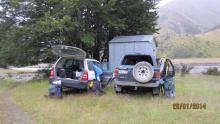
90 mins. later and Shepherds Creek hut is in sight and Steve could finally have a brew up using the kettle he had been carrying .![]()
Sorry for the date showing in all the pictures .To save weight I decided to only take the point and shoot and it's been such a long long time since I last used it.......
A 6 am start the following
A 6 am start the following day and it wasn't long before the younger Clint had to stop and wait for us more 'mature' folk ![]()
![]() .
.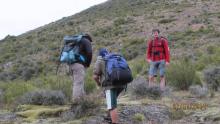
It's a great year for Gaultheria depressa.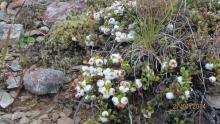
As we climbed higher the clouds started to burn off and on came the sun tan lotion.......
Clint and a view of the Western ridges.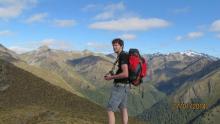
Our objective was to continue up to the end of the ridge line and explore around the base of the rocky bluffs.
Just before the bluffs we came across rather large mounded plants of Raoulia buchananii.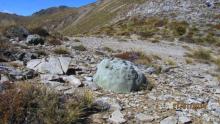
Raoulia buchananii with a
Raoulia buchananii with a view. 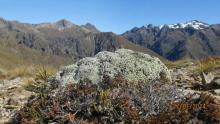
Upon reaching the bluffs ,green cushions were sighted growing in the vertical ledges. Home to Celmisia philocremna there are about 200 plants established here .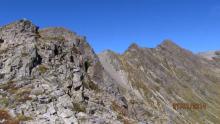
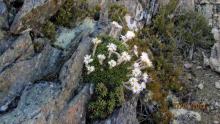
View back showing the ridge we had just climbed.The hut is near the small patch of bush on the valley floor .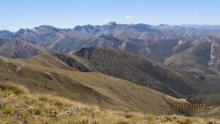
Finally reaching the top of the ridge a number of plants were found on the slopes leading into the next catchment.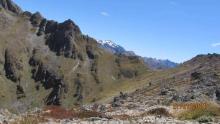
Good sized patches of the yellow flowering shrub Brachyglottis revoluta .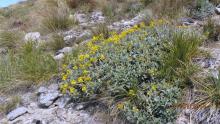
A view south east of the lower Mt Bee ridge line ,an area I've visited many times and posted about.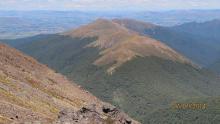
Just about back at the hut standing above bracken fern ,the tall stems of Aciphylla glaucescens .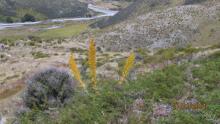
An awesome day Davey boy!!!!!
An awesome day Davey boy!!!!! It was also hot and dry and Doug was keen for a drink when we returned to the valley floor
Great to see these pics from
Great to see these pics from the wild.
Steve,
you might need to run a "caption competition" on your pics!
![]()
cheers
fermi
Hi Dave,
Hi Dave,
Just been looking at my pictures to try and see where you went relative to us. I see you enjoyed more clement weather unlike the horizontal frozen precipitation blasting through Shepherds Saddle that we experienced. (Cliff, if you are reading this and thought the day in Little Omarama Saddle was windy it only a walk in the park) There were lots of Raoulia buchananii on Shepherds Saddle but we did not find any Celmisia philocremna probably because we did not get high enough.
Not a day when sunscreen was required (or applied)
Looking back down the ridge we ascended; Shepherds Creek is on the right. The hut is obscured by the end of the ridge and is on the left upstream from the junction of Shepherds Creek and Eyre Creek.
The weather may have been a
The weather may have been a bit dodgy, David and not the most comfortable for the hikers..... but you must admit it adds drama to the photos with all those clouds swirling around.
You know it's breezy Ian,
You know it's breezy Ian, when the people start swirling around . Twice I have had my glasses blown off my face
David , we were one watershed ridge north of you and we circled around above the Irthing catchment until we were nearly at the Shepherd Ck Saddle then we headed down the same ridge as you back to the hut . There is C.philocremna on the rock outcrops nor far to the north of the saddle . Shame about the wind
I will post more pictures tonight . I have spent the last few nights trying to post embedded images but I can't . It is either my computer or our rural internet connection . So says my wife and she knows everything
Hi Fermi . I'm sure we can
Hi Fermi . I'm sure we can come up with some good captions .
Heading your way later in the month for a bit of culture . The Soundwave Festival in Sydney on Feb 23 and the opening night of the Mrs. Brown's Boys tour in Woollongong the next day . Should get a giggle or two if I wear a wig as I bear a strong resemblance to Agnes Brown and she could be my brother from another mother . Unfortunately I'm the only gardener on the trip so I doubt I will be allowed out of the pubs by myself
The ridge we travelled up is
The ridge we travelled up is upstream from Shepherd's Creek Hut and after the first creek crossing on the true right . Halfway up is a very distinctive stone column
Jane Peak , the highest point in the Eyre Mtns (complete with some snow ) and the Windley Creek valley
Clint Callens and the first Celmisia philocremna we saw from some distance away
Favoured habitat of C.philocremna .and Raoulia buchananaii . Rocky outcrops facing the sun and the prevailing winds
Raoulia buchananii with a toupee of Celmisia viscosa
The next day was a trip to
The next day was a trip to the Gertrude Saddle near Milford Sound in Fiordland . Only a few days earlier there was doubt about the weather as the forecasts were bad but the weather improved . Probably because the summer holidays were over and everyone was back at work .
Dave and I have been here before and there are pictures posted earlier in this thread . It is a great place to revisit but the highlight for us is taking someone there for the first time . In this case it was Doug Logan who had not been anywhere in Fiordland before and Fiordland put on a dramatic show for him . On the drive in low cloud obscured the scenery and he had no idea what was out there then with only half a mile to go the clouds disappeared and the views opened up . Lots of OMG's
First 2 pictures are of ranunculus lyallii . There was a lot of avalanche activity last year especially at the head of the Gertrude Valley . The avalanches also bring down a lot of rock and gravel and when the avalanche snow melts large areas of gravel remain smothering the vegetation . R.lyallii is often the first to recover sending up stems through the debris from it's extensive rootstocks below ground
Suicidal Plant Adventure Tour members in their SPAT cave . From left - Steve , Clint , Doug and Dave
The fanciest track cairn around
A couple of pictures of Aciphylla congesta
Adelaide Saddle is the next saddle around the trail . Getting there is a bit too dodgy for me . I've been halfway there
Milford Sound and Aciphylla multisecta flowering
Excellent report on an
Excellent report on an excellent trip!
May I propose that you re-name your group to "Suicidal Plant-Lovers Adventure Troupe"?![]()
Keep on adventuring, guys,
cheers
fermi
PS disturbing news that the NZ$ is nearing parity with the AU$! But it'll be good news for your trip to Sydney. Pity you can't get away for a look at some gardens like the Mt Tomah Botanic garden in the Blue Mountains.
SPLAT is probably what will
SPLAT is probably what will happen if one of us has a fall off one of the ridges Fermi ..........![]() .
.
Nice shots Steve .I especially love the Aciphylla with the small tarn and mountain backdrop in your last posting.
I thought about a walk today however decided to continue collecting home Trillium seed and sowing that plus NARGS seed ,(a big thank you to the seed donors/ team),as well as SPCNI seed that arrived yesterday.
Leaves the weekend free so I'll see how a double pair of socks work.![]()
Great postings, fellows!
Great postings, fellows! Wish I was up in that sort of country in that season!
Toole wrote:
[quote=Toole]
SPLAT is probably what will happen if one of us has a fall off one of the ridges Fermi
[/quote]
I rest my case! It's the Plant-Lovers who are daring, not the plants! They are endearing!
![]()
![]()
![]()
cheers
fermi
Yes please, keep up walking
Yes please, keep up walking and posting pictures. And don't take chances. Don't want to see any obituaries here.
Thanks Lori and Hoy
Thanks Lori and Hoy
I must confess I've been bit slack this season .I had the opportunity to head away by myself over the weekend however I couldn't be bothered ![]() .Must be getting too reliant on the company of others ....
.Must be getting too reliant on the company of others .... ![]()
![]()
Spent most of the weekend instead ,picking and sowing Trillium seed.
You're in a bad way Toolie
You're in a bad way Toolie .You might have Mates Syndrome . I would seek counselling and therapy before it's too late .
Thanks Lori . It will not be too long before you are out and about and I look forward to seeing where you have been
Have some seeds drying out for you Trond and will send them next week
Despite not having as good
Despite not having as good weather as the S.P.A.T crew I found a couple of things on my trip to Eyre Creek;
We have an abundance of imported yellow dandelions but we also have an indigenous one that is fairly rare and this is the first time I have found it in flower
A rather nice whipcord hebe that was flowering. We have not managed to get a consensus for the name yet; it is not Hebe propinqua which is what I thought it was when I took the photo.The next name I came up with was Hebe annulata but it is not that either.
We found a patch of the little grass lily Herpolirion novae-zelandiae in flower
Last an orchid Gastrodia cunninghamii. It is not an alpine but was growing in beech( Nothofagus) forest on the valley floor.
The Herpolirion novae
The Herpolirion novae-zelandiae is a delight to see.
What is the name of the indigenous dandelion, please, David?
That whipcord Hebe is a nice
That whipcord Hebe is a nice specimen, would love to have something like that in our garden! Sadly there are no whipcords in the nursery trade in Nova Scotia. The only Hebes I have been able to find are H. odora (sold as Hebe buxifolia), and H. pinguifolia var. pagei. Both are blanketed in snow at the moment, and in spite of winter temperatures dipping below -15 C at night, last month (and last winter as well), they seem to thrive here. I wonder which whipcord would have a reasonable chance at surviving here?
In this area of NE Scotland
In this area of NE Scotland Hebe ochracea is pretty hardy - particularly the variety 'James Stirling' - surviving when other whipcords and other types have suffered quite a lot.
If you can source a 'James Stirling' I'd certainly give it a try.
Steve Newall wrote:
[quote=Steve Newall]
You're in a bad way Toolie .You might have Mates Syndrome . I would seek counselling and therapy before it's too late .
Thanks Lori . It will not be too long before you are out and about and I look forward to seeing where you have been
Have some seeds drying out for you Trond and will send them next week
[/quote]
Thanks, Steve, looking forward to that!
I have one or two whipcords
I have one or two whipcords in my garden and you can find some in the trade here but I don't remember the names. Some are sold without a name too, just a sixpack of hebes!
Although the hebes usually survive they flower only sparingly, lack of sun I presume.
Maggi,
Maggi,
The name of the dandelion that I inadvertently omitted is Kirkianella novae-zealandiae.
Tingley,
If Hebe odora survives in Nova Scotia most whipcord species should survive there too as they are often found growing together. Both Hebe odora and Hebe pinguifolia are widespread species with a lot of genetic variation present. There is a great deal of variation in the whipcord species hence the named cultivars which are clonally propagated variants. Until recently this was segregated out as a number of different species but in the most recent treatment a number of these species have been lumped together. Hebes are easy to propagate from cuttings and the smaller ones are quite happy growing in pots.
Here is an example of Hebe odora
and another species Hebe rakaiensis flowering particularly well
Here is an example of Hebe hectorii with particularly robust branches and a second picture showing the variation present in this species
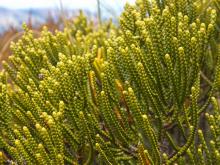
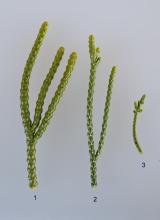 The specimen (3) on the far right is what was formerly known as Hebe subulata
The specimen (3) on the far right is what was formerly known as Hebe subulata
Thank you, David. I'm
Thank you, David. I'm slightly worried that I'm finding a dandelion attractive though, even if it does make a very nice rosette of foliage. - must be the effects of the cold weather addling my senses .
It is a strangely attractive
It is a strangely attractive plant for a dandelion; here is another picture showing the flower buds with their unusual bristly black hairs
A yet more interesting detail
A yet more interesting detail - thank you.
David, that Hebe rakaiensis
David, that Hebe rakaiensis is a beautiful specimen, and the Hebe hectorii variants are really fascinating! Many different Hebes were quite commonly seen in gardens when we lived in Vancouver BC. Of course at the time, there was no room in our postage stamp sized, light-challenged garden. Now that we have returned to the east coast of Canada, they are as rare as hen's teeth, so I am always on the lookout for seeds on the various seed exchanges... probably the most likely way I'll get my hands on more than the two already here.
Both Hebe odora and Hebe pinguifolia have handled some tough winters with ease. In 2012-13 we had very little snow cover, and temperatures bouncing all over the map - near zero C one day, then -16 C the following several days, then back above freezing. This winter has been colder, but with more snow cover protecting the plants from wind and extreme cold. Temperature fluctuations haven't been as extreme or as frequent. H. pinguifolia var pagei seems to be a bit more prone to browning off in exposed cold conditions, but it bounced back last summer to the point that no lasting damage could be detected by mid summer. Eventually I'll find a few more Hebes to add to the landscape, will keep rakaiensis, hectorii, and ochracea in mind.
Cheers,
Gordon
Steve Newall wrote:
[quote=Steve Newall]
You're in a bad way Toolie .You might have Mates Syndrome . I would seek counselling and therapy before it's too late .
[/quote]
Spoke to the medical staff Steve and Mrs Toole says its terminal and there is no going back..........![]()
![]()
David L wrote:
[quote=David L]
The name of the dandelion that I inadvertently omitted is Kirkianella novae-zealandia
[/quote]
Hello David
Nice detailed shots of Kirkianella novae-zelandiae..As you say it is quite attractive.
I thought there was only one native dandelion and that was Taraxacum magellanicum ?.
Cheers Dave.
Spent yesterday just down the
Spent yesterday just down the coast from here with members of the Otago Botanical Society looking at plants on the Omaui peninsula.
In wet areas the small creeping Euphrasia repens .
Also a fruiting spike of Gunnera monoica,
another orange one ,this time Nertera balfouriana.Plants were everywhere so in places it was difficult to avoid stepping on them .
The sand dune community includes numerous cushions of Raoulia hookeri, the only mainland population of Gunnera hamiltonii ,(John having a close inspection),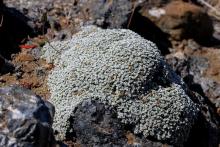

Close up of Raoulia and Gunnera,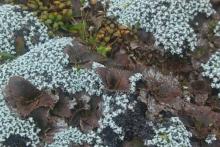
and Geranium sessiliflorum var. arenarium.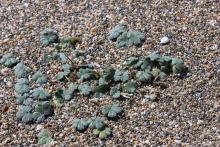
David Lyttle up high braving
David Lyttle up high braving the wind.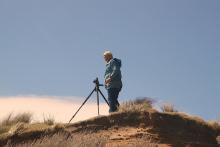
On coastal turf close to the beach, the shore stonecrop ,Crassula moschata and close up .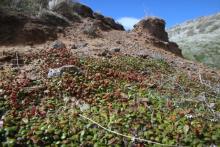
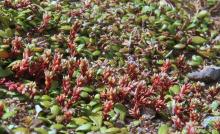
Highlight of the trip for me ,also on coastal turf, was a bank with Gentianella saxosa in full bloom.![]()
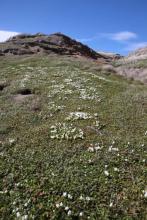

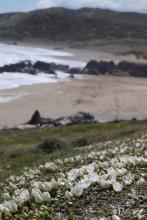
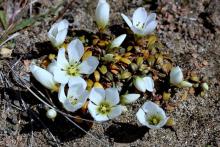
Probably a common sight when a bunch of 'planty' folk ,(a couple of botanists ,one or two enthusiasts ...) get together.![]() .
.
Mid afternoon we started to head back to our vehicles as the Otago people had a 3 hour journey home.View back over the shore.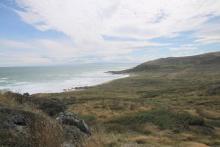
Cheers Dave.
It was an interesting day. We
It was an interesting day. We saw a number of rare and unusual coastal plants and some that you would expect to find in the subalpine zone rather than on the coast.
Dave may not have mentioned it because he is a native of those parts; it was blowing really hard. Here is a picture of two hardy Southern men; Brian Rance our botanist and Dave Toole.
A rock polished by wind-blown sand
Coastal turf dominated by Gentianella saxosa in flower.
I've mostly been lurking here
I've mostly been lurking here, but really enjoying the plants, panoramas and people. You New Zealanders have some of the coolest plants ever, and remarkable that even at the seashore there are choice treasures all about, plants one normally associates with alpine zones. I'm really taken with the ground-level foliage on Geranium sessiliflorum var. arenarium, and the mixed community of Raoulia hookeri with Gunnera hamiltonii. Of course Nertera fruits and cushions of Gentianella saxosa aren't bad either. Thanks for sharing your excursions.
The Omaui/Three Sisters dune
The Omaui/Three Sisters dune site is unique. It has a number of rare species in particular Gunnera hamiltonii ( six individuals (clones) known in the wild). There was one patch (clone) at Omaui. Raoulia hookeri is usually found in subalpine river beds but there is a coastal form which may be distinct that occurs sporadically at various localities round the southern coast. It is abundant at Omaui. On the southern coast of the South Island a number of subalpine species mainly bog species descend to sea level. In most places round New Zealand the native coastal vegetation has been heavily modified and replaced by exotics. The native sand binding sedge Ficinia spiralis has been almost totally replaced by marram (Ammophila arenaria). Lupinus arboreus from California is dominant over large areas of dunes. Coastal dune areas where indigenous plants still form a significant part of the vegetation are now very rare.
Dave/David; very nice to see!
Dave/David; very nice to see! I like coastal areas very much as I have spent all my childhood summers along the shores of an archipelago.
It is saddening that the native plants loose the battle against foreigners - it is a little strange too. The natives should be better adapted? We have the same problem here too. Like the escaped garden rose R. rugosa which covers much of the beaches in many places now.
Summertime is nearly here in
Sorry . Don't seem to be able to post the pictures . Will try again later .
Summertime is nearly here in NZ , so emptied the spiders out of boots and headed off into the hills over the weekend . Our mission was to walk half of the Mount Somers Walkway .Doug and I parked the car at the eastern entance and Hamish. Mikka and Shota met us halfway then we all returned to their car at the western entrance . From there they drove us back to our car for the princely sum of five large icecreams .
Clematis paniculata was flowering prolifically at lower elevations on the eastern side
The side trail to Sharplin Falls is well made and caters for those who want a short hike in the forest
Sharplin Falls
It's a hard road finding the perfect hiking companion so sometimes you just have to take what you are given
Looking north from Duke Knob to the Canterbury Plains
The track goes behind a small waterfall...
...to Pinnacle Hut hiding in the shrubs
Some of which are (from the left) Mountain Toatoa , Dracophyllum sp and Bog Pine
The Pinnacles are a handy workout area for the rock climbing fraternity
Cool pics Steve.Looks a
Cool pics Steve.Looks a lovely scenic area ...maybe one day ...![]() .
.
Cheers Dave.
Looks like it's only the
Looks like it's only the insert button on embedded images that hates me . Must be doing something wrong there .
The next day after a lovely sunrise we headed west and the track became a little easier once we had passed the north face of Mt.Somers . We found some lovely Ranunculus crithmifolius on the scree . Lunch was at Woolshed Hut with Hamish , Mikka and Shota(7) and from there we headed across the swingbridge on the Rhyolite Track . Even waited for a bus at the bus stop but I guess the buses don't run at the weekend . It was a great overnight trip and the icecreams really did finish off the trip nicely
All those wonderful pics look
All those wonderful pics look so inviting, Steve!
[quote=Steve Newall]Looks like it's only the insert button on embedded images that hates me . Must be doing something wrong there .[/quote]
The system seems to be optimized with the Internet Explorer browser, for the most part, unfortunately. Goofy things happen even with Firefox, although pretty easy to put up with, and FF is what I use. But I just tried IE and I am stymied by the insert button also. I will see if I can garner some attention to this, yet another, problem.
Thanks for looking in to it
Thanks for looking in to it Rick . It has been awhile since I last posted a picture and I thought I must have forgotten something
Dave - I would like to go back again next year so maybe a visit for you then
Steve Newall wrote:
[quote=Steve Newall]
Dave - I would like to go back again next year so maybe a visit for you then
[/quote]
Sweet.....
I suggest adding NARG.ORG to
I suggest adding NARG.ORG to "Compatibility View Settings" in Internet Explorer (with IE browser menu bar turned on, go to Tools > Compatibility View Settings. and add current site - Nargs.org). With IE, I have a couple apps where file upload (and downloads) will not work unless I turn on that setting. Newer versions of Firefox are driving me crazy too, with memory usage, suddenly using up all memory, crashing frequently, and other issues, dang browsers!
Thanks for showing, Steve. I
Thanks for showing, Steve. I never tire of looking at pictures from the Antipodes ;-)
Mark, your Compatibility View
Mark, your Compatibility View suggestion worked for me. Thanks!
Spent last weekend in the
Spent last weekend in the company of a number of plant 'nuts' visiting the Nelson Lakes area near the top of the South Island.
On the way to our camp site late in the day we came across numerous 'Penwipers' in bloom ,Notothlapsi rosulatum.
View showing the dry looking country. 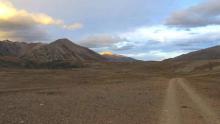 .However there were wet areas where a fine plant of Celmisia sinclairii was located.
.However there were wet areas where a fine plant of Celmisia sinclairii was located.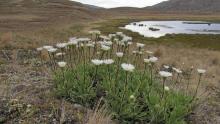 .
.
Early next morning Doug and I
Early next morning Doug and I climbed the ridge behind the camp .View looking back.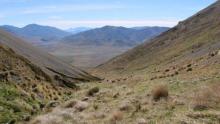 As we reached the screes 'vegetable sheep', Haastia pulvinaris were sighted .A couple of shots showing the variation in growth habit.
As we reached the screes 'vegetable sheep', Haastia pulvinaris were sighted .A couple of shots showing the variation in growth habit. 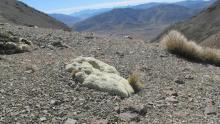
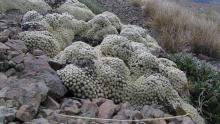 .Further ,on finer scree the smaller Haastia sinclairii .
.Further ,on finer scree the smaller Haastia sinclairii .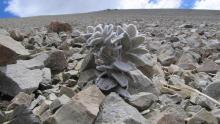
In stable benches between the altitudinal screes ,hidden somewhat by a prostrate Dracophyllum ,a lovely tight cushion ,Chionohebe pulvinaris and close up.
View looking north and Doug 'sussing out ' a route down off the ridgeline.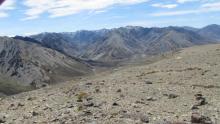
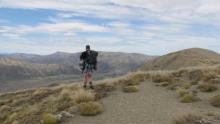
Stark, but beautiful, Dave!
Stark, but beautiful, Dave!
I notice how well the Notothlaspi blend with the native rocks there. What happens when they grow on other substrates..... does that population color differ?
And another question popped up in my head: do you have cool season and warm season grasses as we do in the northern hemisphere?
Hello Rick
Hello Rick
I've only ever seen Notothlapsi rosulatum on greywacke screes ,(I don't think it is found on any other substrates).However there is also a greener foliaged form many of which we also saw in the company of the 'type' plant.
Not sure about the grasses.I'll get back to you on that one ....
Rick, what do you mean with
Rick, what do you mean with cool season and warm season grasses?
Dave, your (I mean all of you!) trips are always interesting! Both the plants and landscape are weird and alluring.
Doug looks like a backpacker - does he bring all his gear and sleep outside?
Hoy wrote:
[quote=Hoy]Rick, what do you mean with cool season and warm season grasses?[/quote]
Gee, I thought the terms were universal!
Cool season grasses are those that like it when temperatures are cool, from freezing to around 75°F (24°C) - approximating temps here. Above that, growth slows or or migh even stop with some species. Kentucky Blue grass and alpine grasses are in this category. Warm season grasses don't really start growing until temperatures reach at least 50°F (10°C), and continue to grow through hot weather. Zoysia grass is a warm season grass. We can grow it here in Minnesota, but it would only be green green from mid June through August, and be brown for 9.5 months of the year.
Thanks Rick. I did think it
Thanks Rick. I did think it was something like that but we don't have it here. The temperature is almost never as high as above 75F and when it happens it doesn't last for long. Some grasses (annuals mostly) are able to grow during the the fall and mild winters in the lowland though and take a rest during dry weather in summer. So it is never high temps but drought which stops plants from growing in summer here.
Hoy wrote:
[quote=Hoy]
Dave, your (I mean all of you!) trips are always interesting! Both the plants and landscape are weird and alluring.
Doug looks like a backpacker - does he bring all his gear and sleep outside?
[/quote]
Thanks Trond.
Doug's pack looks bulky as he tends ,(as I do),to be well prepared and carry wet weather gear,camera and lenses and plenty of water.The packs weren't all that heavy. While there was plenty of room back at the hut he slept in his tent while as I couldn't be bothered erecting mine had a couple of nights reclining in his vehicle ......
Yes, I see. It's like here
Yes, I see. It's like here when I am around.
You bring a lot of water you say, is due to lack of reliable water sources? Can you drink the water in the creeks?
The last couple days away
The last couple days away meant travelling further north to just about the top of the South Island were we ventured up the Mt Arthur track through a forest of 'grass trees', Dracophyllum traversii.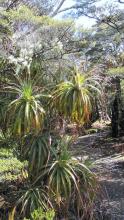
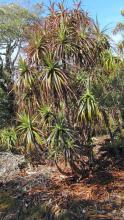
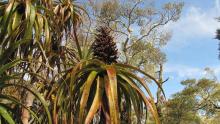 .Early next morning Mt Arthur was mostly hidden by clouds however there was plenty of action plant wise at our feet to take our minds off the slog ahead.
.Early next morning Mt Arthur was mostly hidden by clouds however there was plenty of action plant wise at our feet to take our minds off the slog ahead.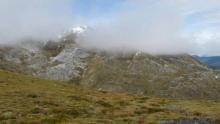
Large cushions of Raoulia eximia 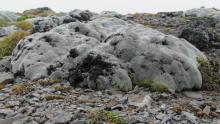 Celmisia hybrid between C.sessiliflora and C.traversii.(foliage of C.discolor to the right).
Celmisia hybrid between C.sessiliflora and C.traversii.(foliage of C.discolor to the right).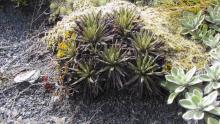
Euphrasia sps.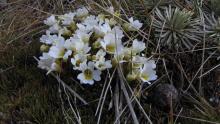 Ranunculus insignis
Ranunculus insignis 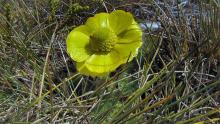
As the day progressed the cloud lifted enough to show Mt Arthur and a snow patch that had to be climbed to reach the top
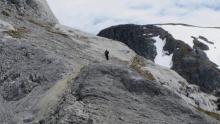 which Doug and the others managed to negotiate .It looked a bit too 'iffy' for me without an ice axe and crampons so I continued botanizing at the edges of the lower snow patches........
which Doug and the others managed to negotiate .It looked a bit too 'iffy' for me without an ice axe and crampons so I continued botanizing at the edges of the lower snow patches........![]()
A change of plans near the end of the day meant descending to our vehicles in mist and an end to a particularly long day .
Hoy wrote:
[quote=Hoy]
Yes, I see. It's like here when I am around.
You bring a lot of water you say, is due to lack of reliable water sources? Can you drink the water in the creeks?
[/quote]
Water in the creeks is fine to drink Trond however I'm never that keen on losing height into a creek bed once I'm on top of an exposed ridge ......![]()
I can understand that!
I can understand that!![]()
RickR wrote:
[quote=RickR]
Rick, what do you mean with cool season and warm season grasses?
Gee, I thought the terms were universal!
Cool season grasses are those that like it when temperatures are cool, from freezing to around 75°F (24°C) - approximating temps here. Above that, growth slows or or migh even stop with some species. Kentucky Blue grass and alpine grasses are in this category. Warm season grasses don't really start growing until temperatures reach at least 50°F (10°C), and continue to grow through hot weather. Zoysia grass is a warm season grass. We can grow it here in Minnesota, but it would only be green green from mid June through August, and be brown for 9.5 months of the year.
[/quote] I wasn't familiar with that concept, either. Perhaps it is not well-known, or relevant in Europe, so that's why we don't know it.
For me, a grass is a grass. What a joy this simple life is!![]()
Hi Maggi, I disagree! Grass
Hi Maggi, I disagree! Grass isn't simply grass! (I'm not talking about the illegal thing.) In my garden I have at least two kinds: Grass as in the lawn (often more moss though) and grass as weed in the beds and tracks. For unknown reasons the last category is the toughest and impossible to remove ![]()
Trond, I dug up the last of
Trond, I dug up the last of our lawn about twenty years ago - can't say we have ever missed it! Ian has a tendency to sneak in some so called "decorative " grasses from time to time, but I am vigilant ![]() - I just don't think they suit this garden, though I do see some plantings of them that I find attractive. I just haven't got an urge to grow 'em - any of them!
- I just don't think they suit this garden, though I do see some plantings of them that I find attractive. I just haven't got an urge to grow 'em - any of them!
Enjoyed the pics from Mt
Enjoyed the pics from Mt.Arthur Dave and wish I had been there too . The dracophyllums are my favourite shrubs .
I'm off into hills to collect Hieracium seed near the Gorge Burn and hopefully the weather holds . If it does I might sneak off for a bit and see what other plants I can find
Wonderful pictures from New
Wonderful pictures from New Zealand. Apropos warm and cold growing grasses - we have had good flowering of Miscanthus 'Giganteus' for the first time that I remember this year, no doubt because last winter was so mild and wet and it had a good long growing season. The variegated M. 'Cosmopolitan' was magnificent in October and still looks good now, this flowers quite well most years but not usually as well as this!
Back to the NZ theme - these are two shots taken at The Botanics in Edinburgh in late August of Chionochloa rubra - really makes a striking specimen.
Red tussock ,(Chionochloa
Red tussock ,(Chionochloa rubra),I've used a lot around the local airport planting Tim.I love its movement when subject to the strong coastal winds we get down here.
Just catching up on posting a number of trips into the hills of the last few weeks.So here goes.
Between Xmas and New Year the NZAGS held a field trip onto the PIsa Range ,Central Otago .It had been a number of years since i had visited that area so I tagged along....
It took us a lengthy period to travel up the farm, then Dept of Conservation track, to Lake Mckay ,
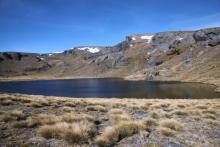 View of lake outlet down towards the Hawea flats.
View of lake outlet down towards the Hawea flats.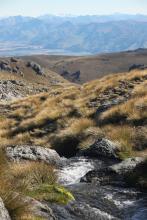
On western slopes falling down to the lake in seepage's a mass flowering of the small Ranunculus gracilipes.
On the other side of the lake in more dryer spots the dense cushions of Anisotome imbricata var imbricata with blooms that sit in or just on top of the foliage.
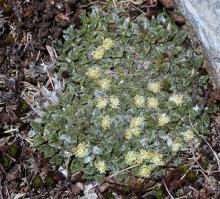 Tiny growths of Leptinella albida .
Tiny growths of Leptinella albida .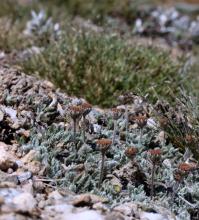
More to come later ......![]()
Great photos, Dave.
Great photos, Dave.
I just wish we didn't have to have the pix open in a new box and have to be closed again to move on the the next one. I'm afraid I still find this system to be less than user-friendly. *sigh!*
Thanks a lot Maggi
Thanks a lot Maggi
If you keep left clicking on each photo it quickly brings up the next shot in that posting.Yes you have to close out if you want to view the next set of photos in the next or prior postings.
All comes down to what one is used to .I find that for example on the SRGC Forum the loading to view each resized photo and subsequent scrolling and loading to see the next is slower than here.
Cheers Dave.
Oh yes, that "left-click"
Oh yes, that "left-click" trick is a good one, thank you.
So many of the pix on the SRGC forum now are loaded full size so I prefer the simple scrolling down a page where one can read the text at the same time as viewing the photos - each to their own, eh?
Pisa Range continued.
Pisa Range continued.
In snow tussock grasslands patches of Hebejeebie densifolia 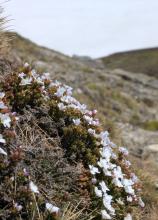
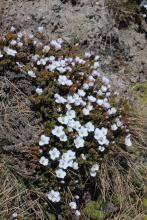
and in depressions Gaultheria nubicola .Lovely colour combinations.....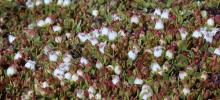
A terrific year for Hectorella caespitosa with cushions everywhere in bloom.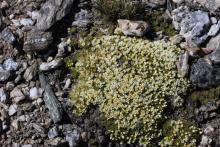
 Seeing that the others in the group were doing some intensive botanising around the lake I climbed alone past the large snow banks and crested the range onto the
Seeing that the others in the group were doing some intensive botanising around the lake I climbed alone past the large snow banks and crested the range onto the 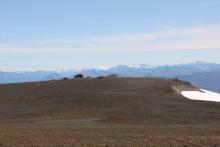 extensive cushion field plateau.View looking north down towards Lake Hawea.
extensive cushion field plateau.View looking north down towards Lake Hawea.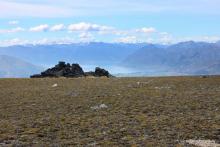
I wanted a look around the Tors that dot the plateau.Here's a view looking west over the valley to the Cardrona Ski Field on the next Range.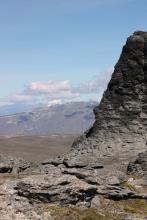 On the shady spots of these impressive rock formations I found Myosotis pulvinaris in full flower .Surprizingly well ahead of the plants we came across lower down in more open positions ....
On the shady spots of these impressive rock formations I found Myosotis pulvinaris in full flower .Surprizingly well ahead of the plants we came across lower down in more open positions ....
It is always a pleasure to
It is always a pleasure to follow your steps, Dave! Beautiful flowers and beautiful landscape. Especially on a day like today when a storm is building up and maybe become a hurricane. We are warned from going out later today.
Hoy wrote:
[quote=Hoy]
It is always a pleasure to follow your steps, Dave! Beautiful flowers and beautiful landscape. Especially on a day like today when a storm is building up and maybe become a hurricane. We are warned from going out later today.
[/quote]
Thank you Trond --I have a couple more postings when time allows to complete the Pisa trip then a couple more for the subsequent Old Man Range visit .......![]()
Hope the Hurricane was 'a non event' my friend.
We were hit yesterday noon
We were hit yesterday noon and lost the power for 28 hours, just got it back now. A small tree in the garden was uprooted and a lot of my wintergreen plants are almost defoliated! Fortunately no serious damage at our place.
Hoy wrote:
[quote=Hoy]
We were hit yesterday noon and lost the power for 28 hours, just got it back now. A small tree in the garden was uprooted and a lot of my wintergreen plants are almost defoliated! Fortunately no serious damage at our place.
[/quote]
Please to hear you were Okay Trond.
Continuing on with the Pisa Range trip ..
Leaving the cushion plateau I headed down to the lake and vehicles 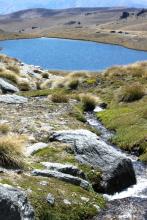
and came across some good sized patches of Celmisia brevifolia in bloom and a nice form of Brachyscome longiscapa.
Heading down in the vehicles we stopped at a seepage 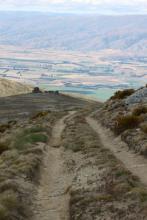
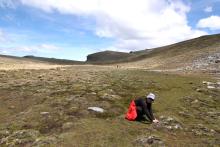 where an unidentified Chionohebe sps was found.It's form ,habitat and green foliage had us stumped.
where an unidentified Chionohebe sps was found.It's form ,habitat and green foliage had us stumped.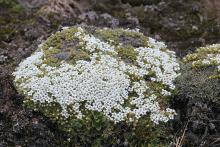 .I'm waiting to hear back from David Lyttle on an ID.
.I'm waiting to hear back from David Lyttle on an ID.
Edit :Just heard back that the Chionohebe is C.glabra.
Final set of images from Pisa
![]() Final set of images from Pisa.....
Final set of images from Pisa.....
Nearby the seepage on depleted vegetative spots a couple of Raoulias.The larger Raoulia youngii in flower nestled up against R.'aff'.apicinigra .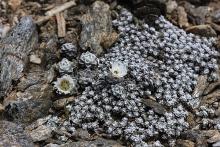
Gentianella divisa were just coming into bloom.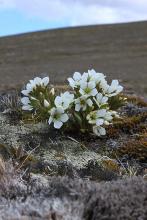
Lower down still, extensive fields of Aciphylla aurea .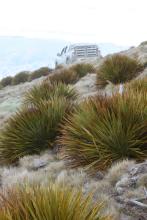
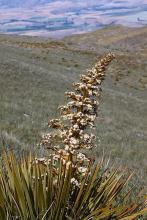
Very large cushions of Celmisia sessiliflora 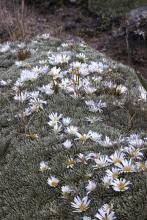
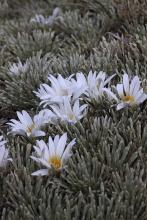
In between the wheel marks on the track ,one of the dwarf brooms, Carmichaelia vexillata 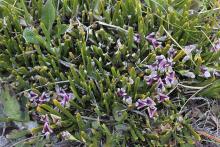
That's it folks ....
Toole wrote:
[quote=Toole]
![]() Final set of images from Pisa.....
Final set of images from Pisa.....
That's it folks ....
[/quote]
I really hope it's not the final set of images from you, Dave!
I do enjoy following outings like yours in NZ.
Although we have a lot of nature in Norway the flora isn't as rich as all the different habitats give room for because of the young age of the flora here.
Hoy wrote:
[quote=Hoy]
Final set of images from Pisa.....
That's it folks ....
I really hope it's not the final set of images from you, Dave!
[/quote]
Okay Trond you've twisted my arm .....![]()
![]()
Traveling home from the Pisa Range on the Monday I suggested to David Lyttle that he and I have a peek on the Old Man Range .Although I had my motorbike on the back of my truck David suggested I hop into his new vehicle and head up the hill.
David and his new toy .....![]() I was most impressed.
I was most impressed.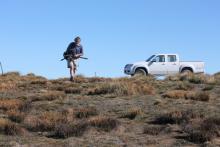 .Immediately upon exiting the ute we spied Ranunculus pachyrrhizus .In places they were that numerous you had to carefully pick your way through the plants to avoid stepping on them.
.Immediately upon exiting the ute we spied Ranunculus pachyrrhizus .In places they were that numerous you had to carefully pick your way through the plants to avoid stepping on them.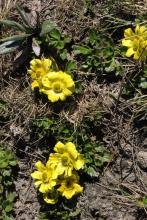 View of cushion field community on a bank --dark green growths of Dracophyllum muscoides -- a lonely Cemisia viscosa -- the silver looking Raoulia hectorii .
View of cushion field community on a bank --dark green growths of Dracophyllum muscoides -- a lonely Cemisia viscosa -- the silver looking Raoulia hectorii .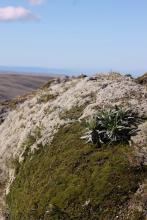
Nearby, Ourisia glandulosa  and yummy Phyllachne rubra
and yummy Phyllachne rubra
Scenery shot looking southeast 
and the woody Celmisia ramulosa var.tuberculata.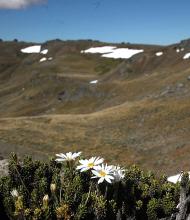
We managed a few more plant
We managed a few more plant sightings before we called it a day ,early afternoon.
David setting up for a wide angled scenic shot..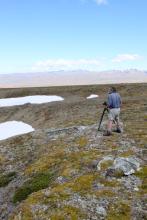
Close up of Geum uniflorum. 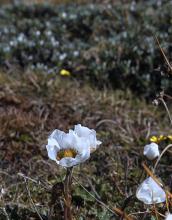 Creeping mats of which i think was Kelleria villosa.
Creeping mats of which i think was Kelleria villosa. 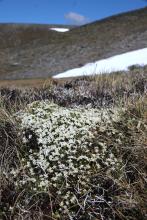 . Celmisia brevifolia was flowering here on the Old Man range as well as the Pisa .Surely one of the most reliable daisies for colour each season ....
. Celmisia brevifolia was flowering here on the Old Man range as well as the Pisa .Surely one of the most reliable daisies for colour each season ....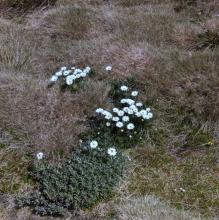 Contrasting habitat either side of a stream bed .
Contrasting habitat either side of a stream bed .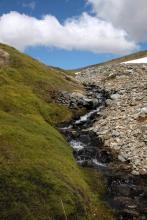 .Celmisia haastii var. haastii on very wet boggy ground just below a snow bank.
.Celmisia haastii var. haastii on very wet boggy ground just below a snow bank. Having view multiple areas of green leaved Celmisia viscosa ,the sighting of a silver form grabs one's attention pretty quickly--firstly as a single plant
Having view multiple areas of green leaved Celmisia viscosa ,the sighting of a silver form grabs one's attention pretty quickly--firstly as a single plant then as a comparison, David climbing up through both coloured leaf forms.....
then as a comparison, David climbing up through both coloured leaf forms.....
Cheers Dave.
Hi Dave,
Hi Dave,
I am glad it isn't that hard to persuade you!
Although the landscape isn't that much different from Norway, the flora is. Especially do we lack cushion and mat forming plants.
Geum uniflorum looks very pristine! And the Celmisias are very nice as always.
Thanks Dave for creating this
Thanks Dave for creating this journal of amazing plants and fantastic landscapes. I've been quiet on the forum, out of last 5 weeks had been traveling 3 weeks at 3 different locations, sadly all work stuff and nothing to do with plants, then of course the huge backlogs pile up by the time I get back; counting the months and days until I reach the possibility of early retirement.
In your more recent posts, I'm astounded by Gaultheria nubicola, Myosotis pulvinaris, the unidentified Chionohebe, and many other pulvinate NZ plants, the flora is fascinating. Was particularly taken with Celmisia sessiliflora, the foliage is a bit "corkscrewy", never seen anything quite like that. And what a sweet little daisy, Brachycome longiscapa.
Mark McD wrote:
[quote=Mark McD]
Thanks Dave for creating this journal of amazing plants and fantastic landscapes. I've been quiet on the forum, out of last 5 weeks had been traveling 3 weeks at 3 different locations, sadly all work stuff and nothing to do with plants, then of course the huge backlogs pile up by the time I get back; counting the months and days until I reach the possibility of early retirement.
In your more recent posts, I'm astounded by Gaultheria nubicola, Myosotis pulvinaris, the unidentified Chionohebe, and many other pulvinate NZ plants, the flora is fascinating. Was particularly taken with Celmisia sessiliflora, the foliage is a bit "corkscrewy", never seen anything quite like that. And what a sweet little daisy, Brachycome longiscapa.
[/quote]
Thanks for those kind words Mark .Of course it's just not me that has posted to this thread .I've been privileged to accompany some wonderful friends over the years,(far more knowledgeable than me ), such as David Lyttle ,Steve Newall and Stewart Murray and I applaud their contributions ,Some times I wonder if it's all getting a bit too familiar ,(boring ), for folks, then I look at the stats for the number of viewings and currently at over 200,000 and increasing it's reassuring to know there is still quite a lot of interest.![]()



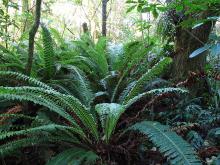

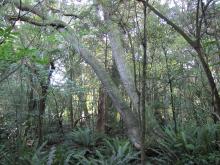
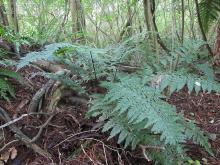


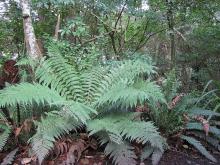
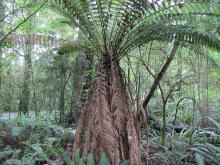
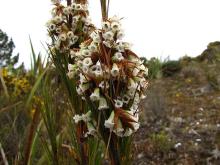
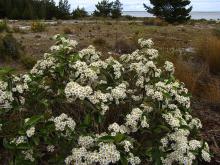
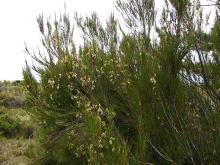
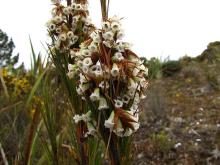
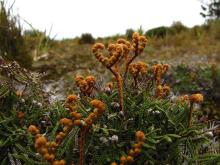
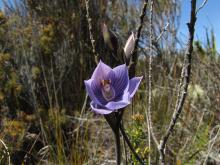
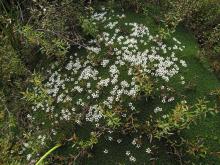
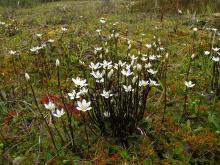
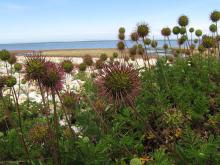


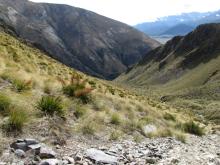


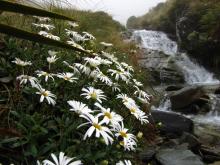
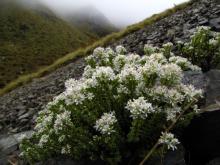
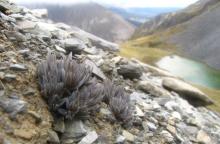
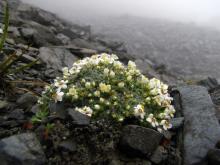
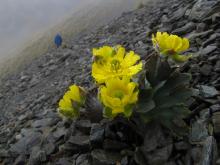

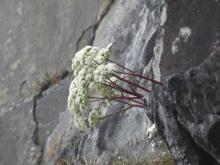
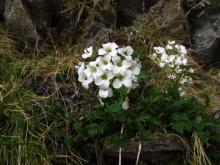

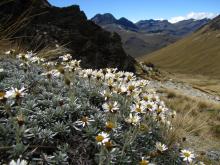
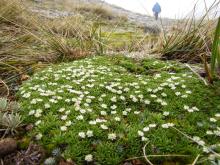
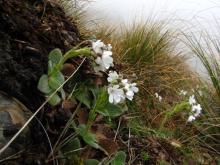
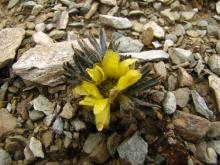
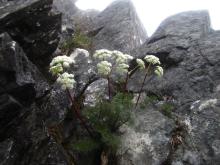
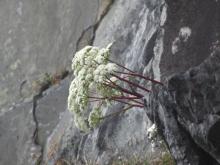
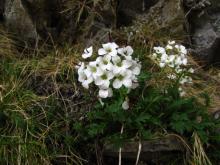
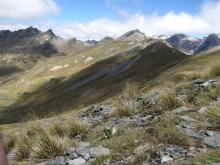
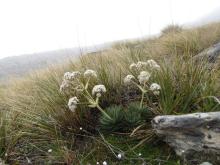


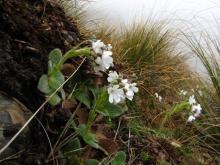
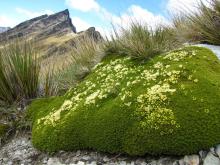


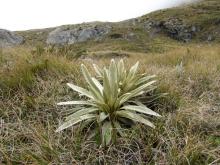

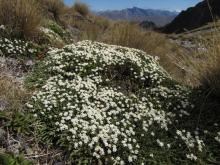
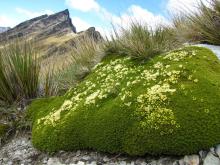
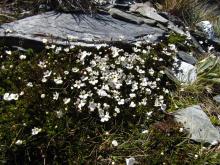
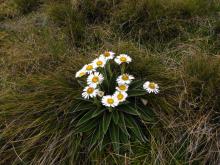

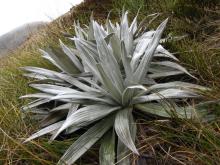
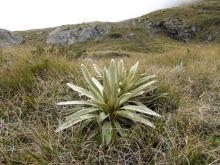
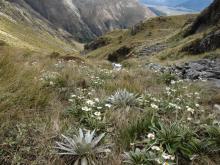
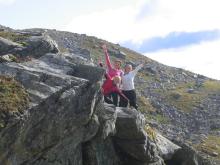
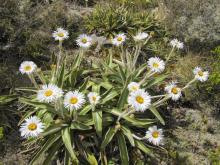

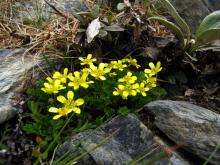
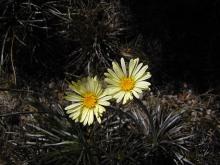
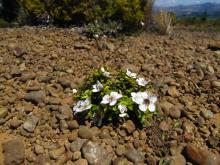
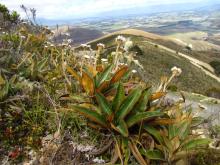
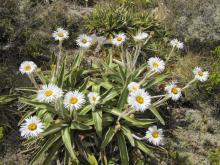
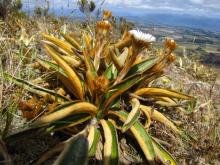

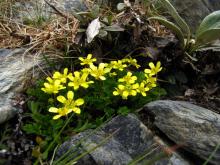
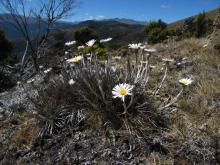


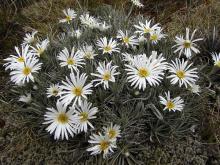
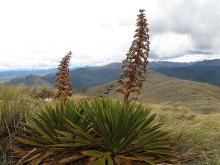
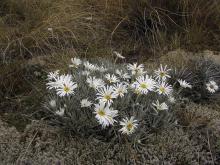
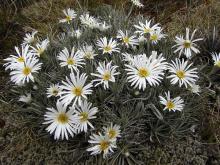
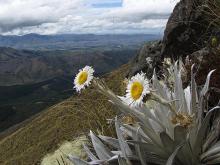
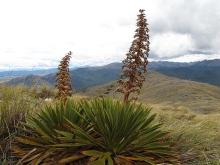
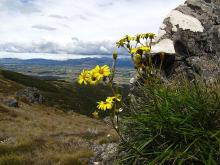
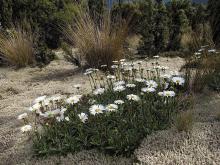
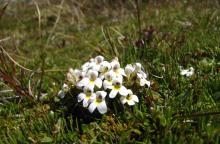
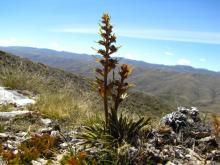
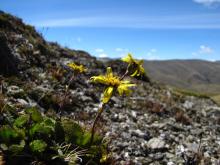
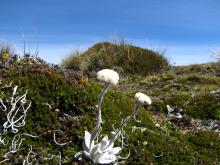
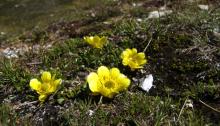
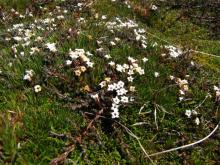
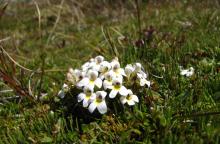
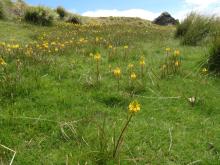

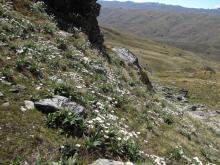
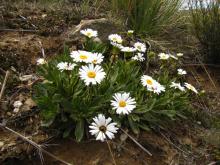
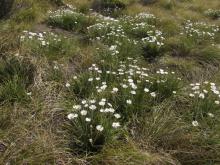
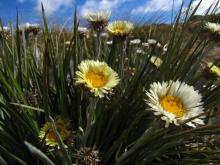
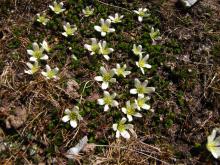
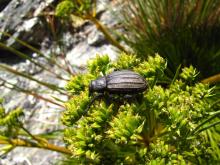
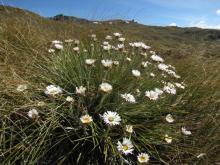
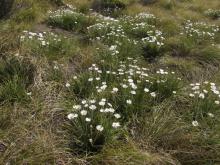
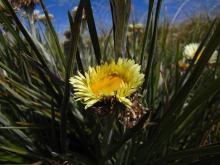
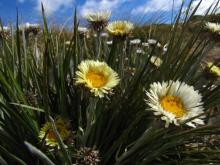
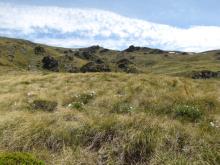

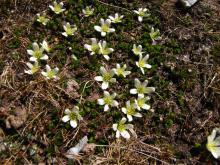
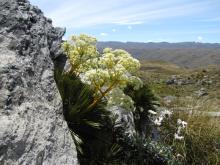

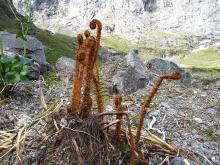
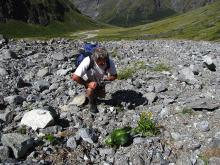
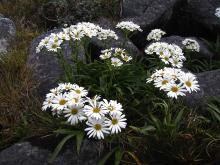
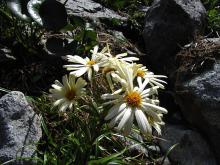
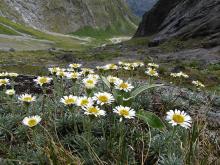

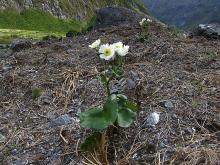
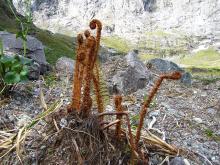
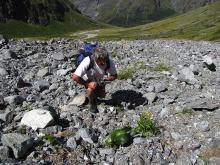
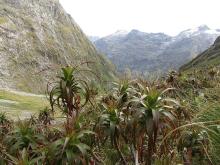
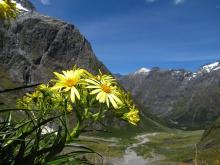
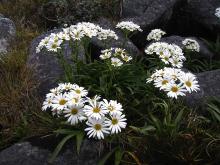
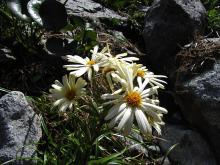
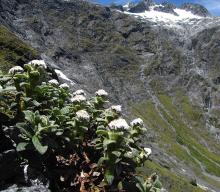
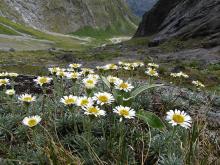
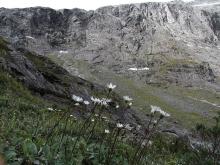
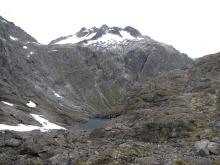
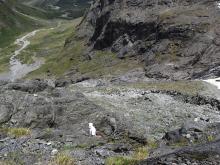
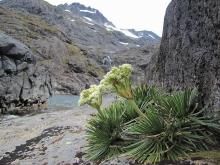
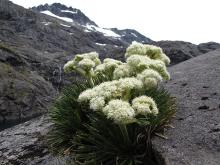
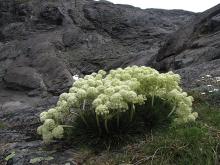
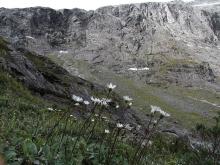
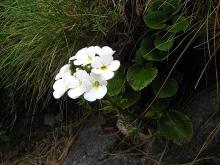

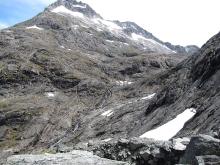
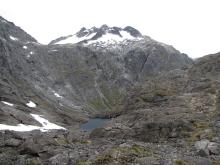
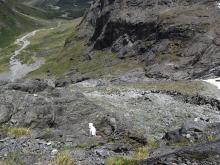
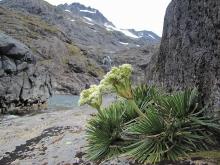
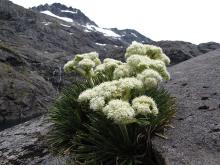
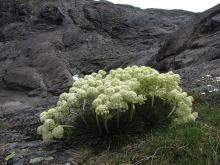
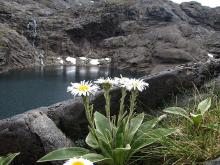
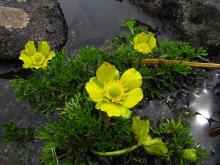
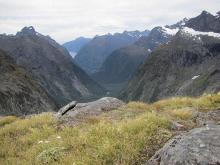
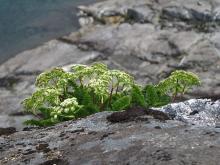
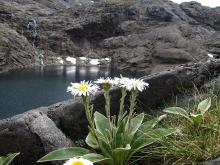
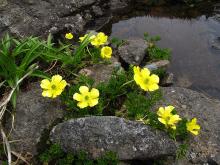
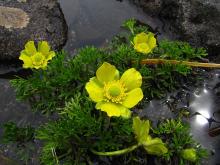
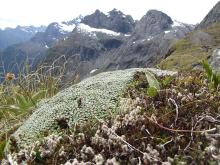
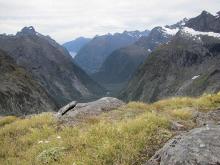
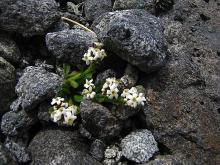
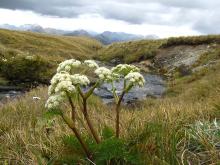
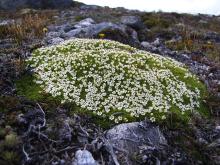


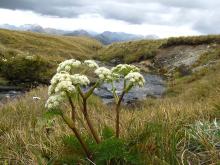

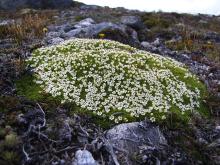
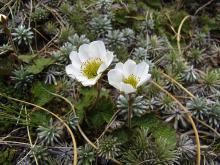
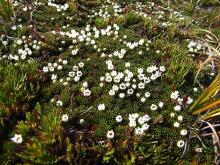
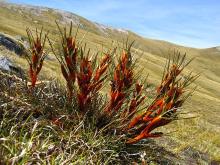
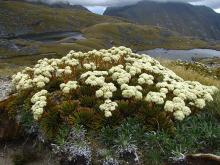
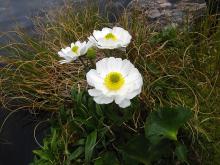
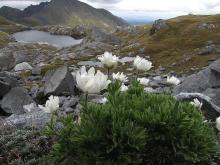
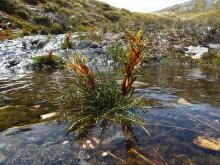
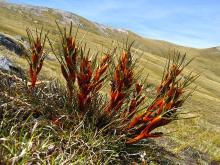
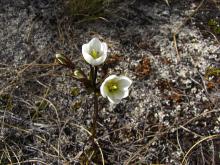
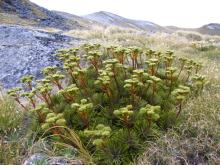
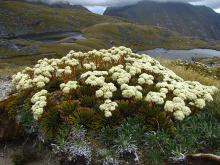

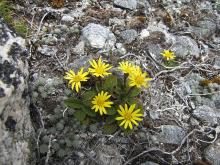
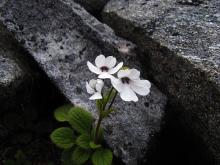
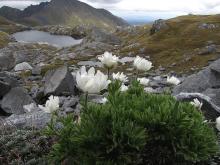
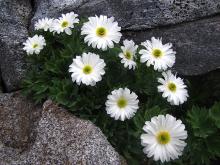
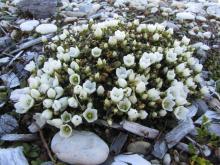
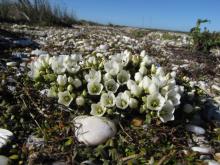
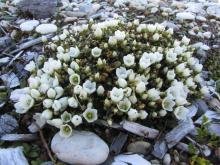
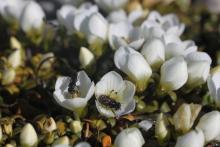
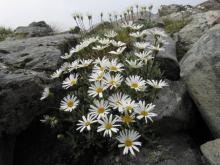

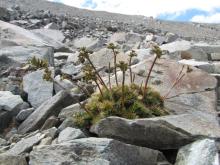
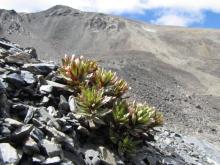
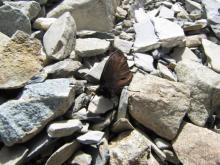
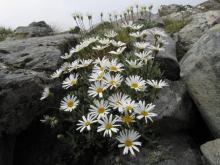
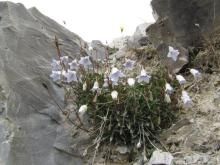
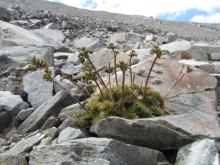
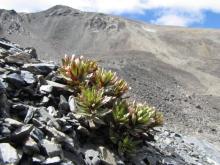
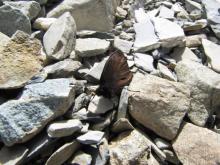
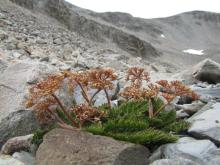

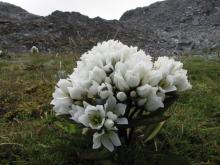
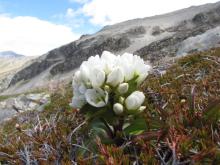
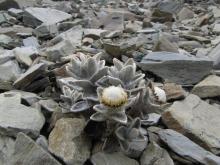
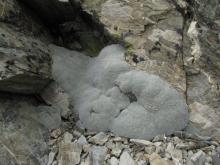
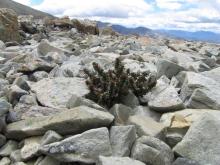
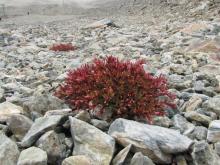

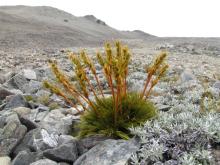
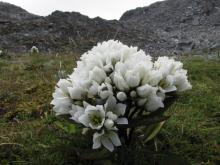
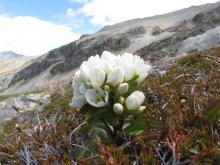

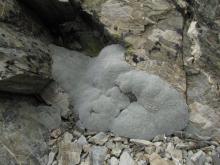
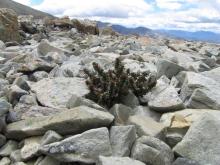
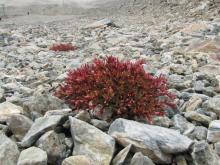
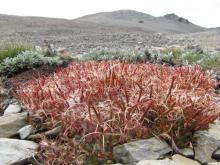


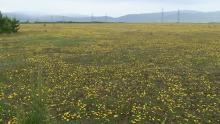
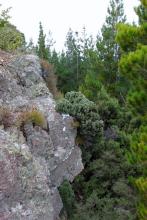
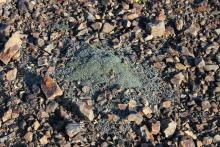
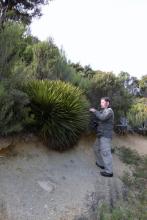
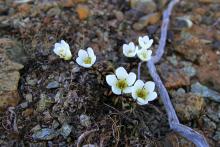
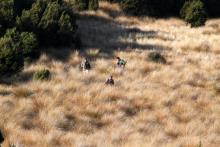
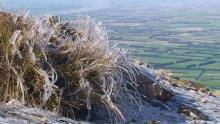
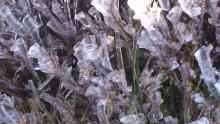
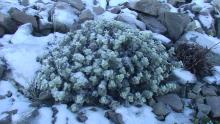
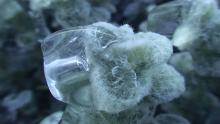

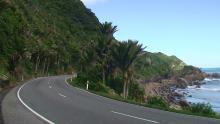
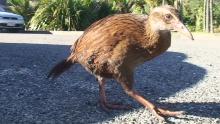
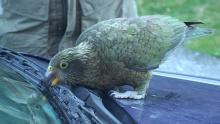
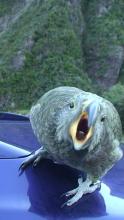

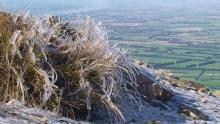
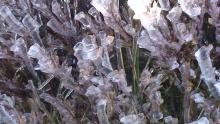
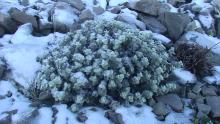
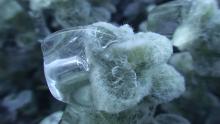
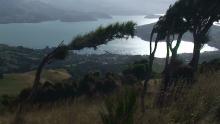
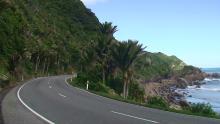
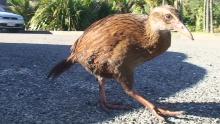
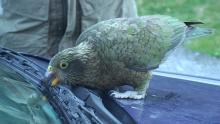

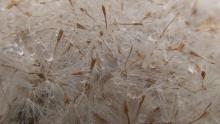
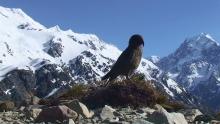
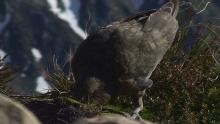
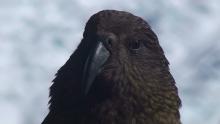
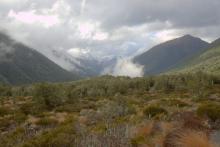
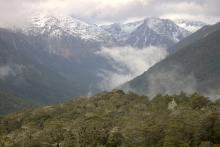
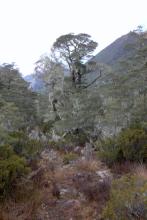
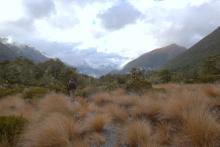
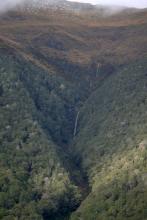
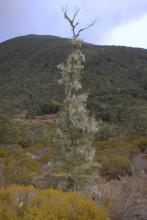
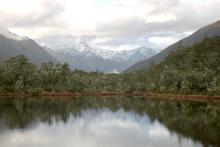
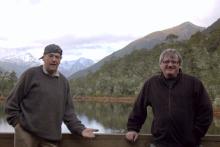

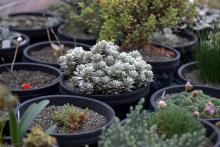
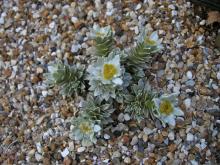
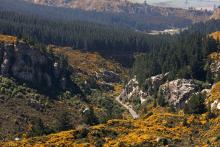
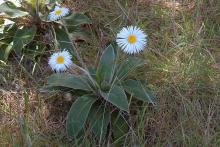


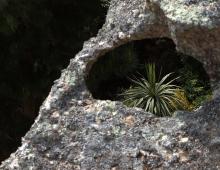
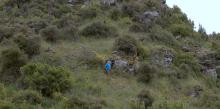
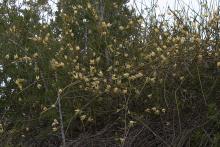
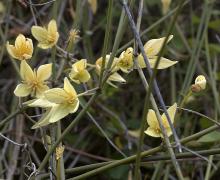
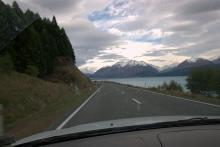
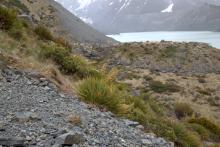

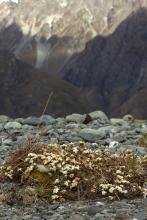
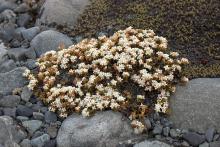
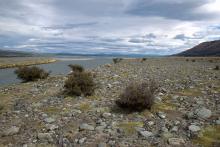

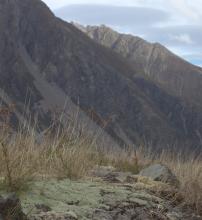
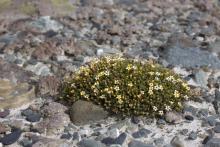
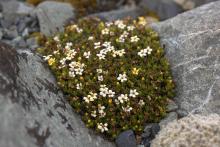
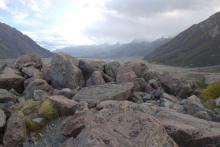
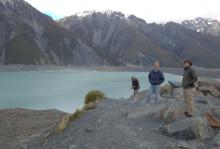
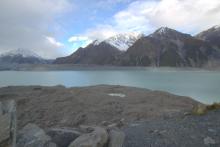
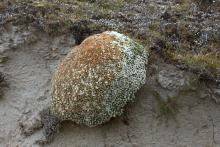
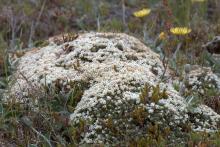
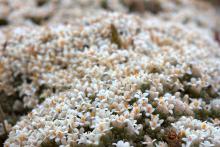
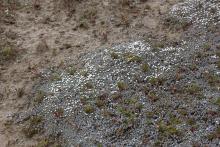
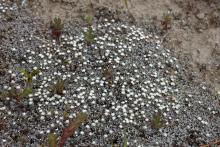
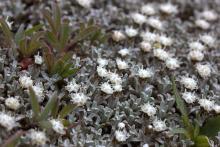

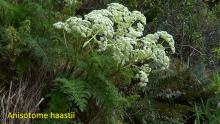
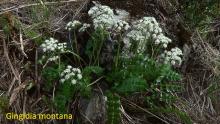
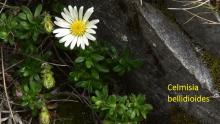
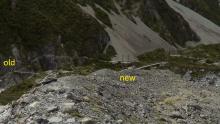


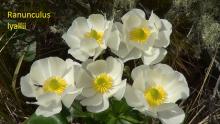

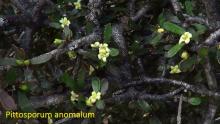
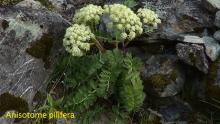
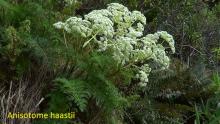
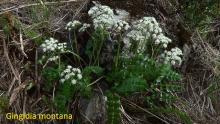
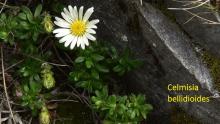
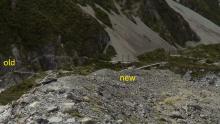
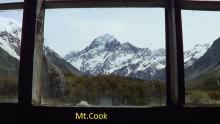
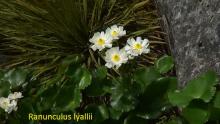
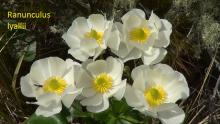
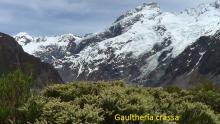
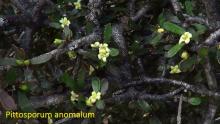
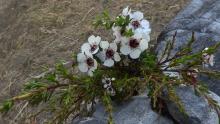
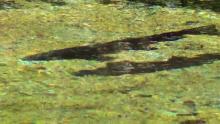
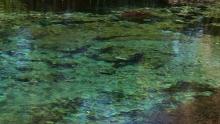
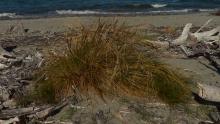
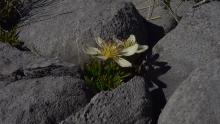
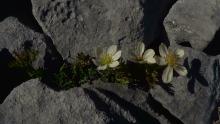
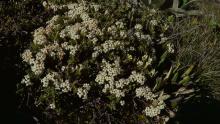
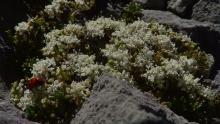

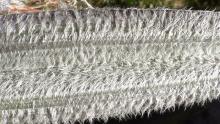
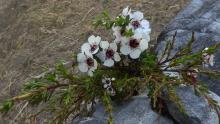
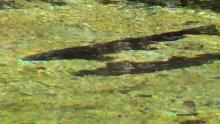
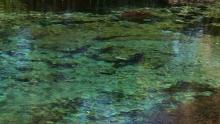
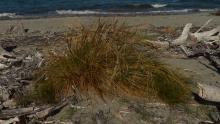
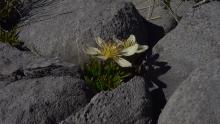


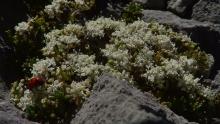
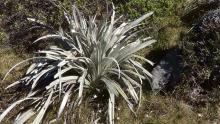
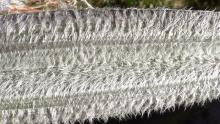

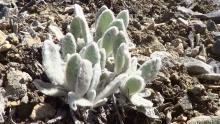
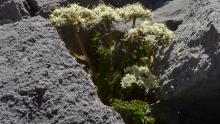
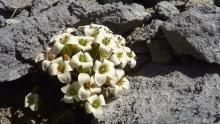
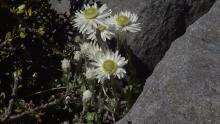
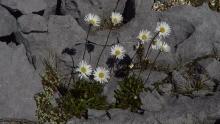
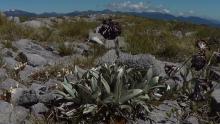

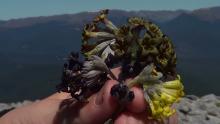
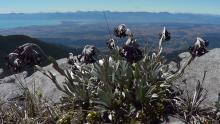
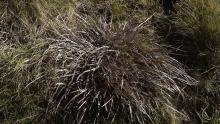
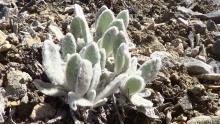
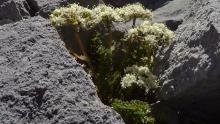
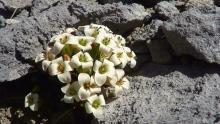
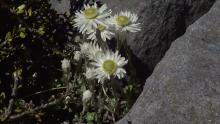


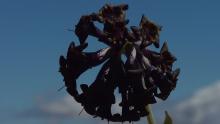


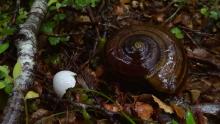
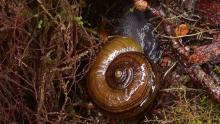
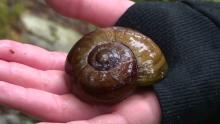
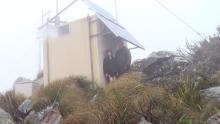
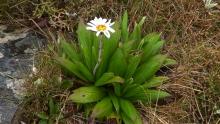
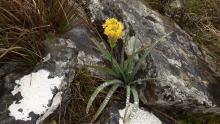
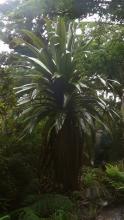
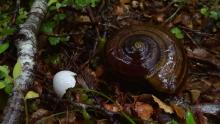
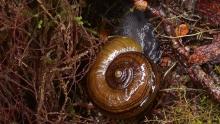
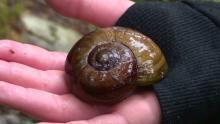
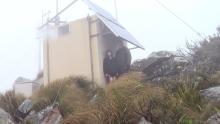
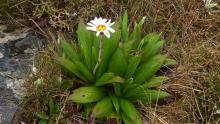
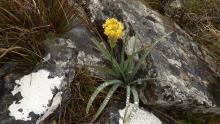
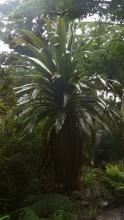

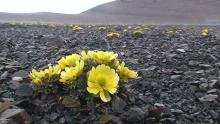
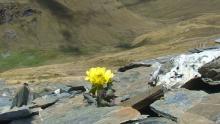
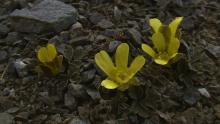
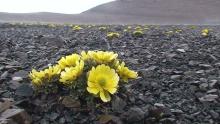
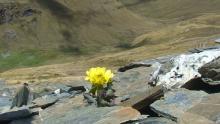
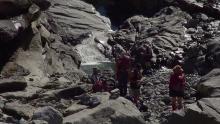
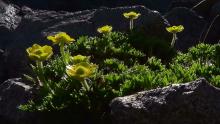
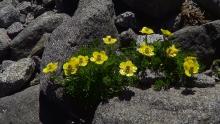
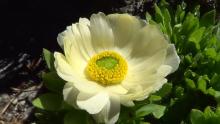
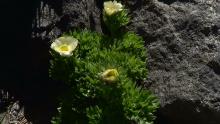
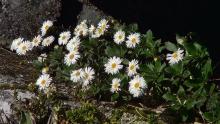
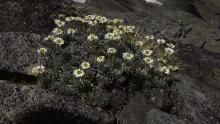
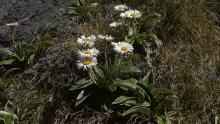


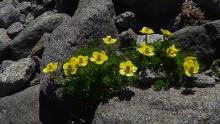
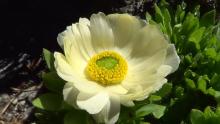
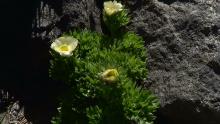
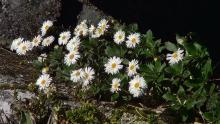
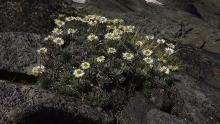
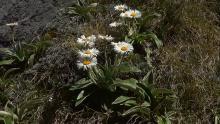
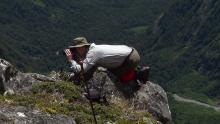


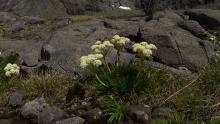
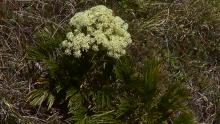
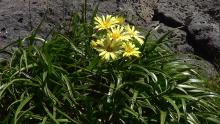
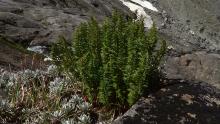
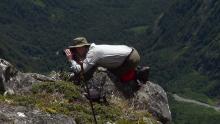
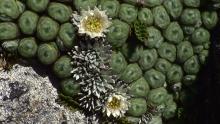
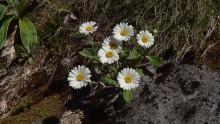
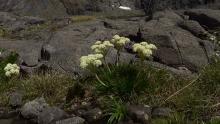

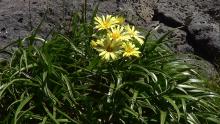
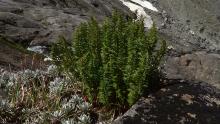
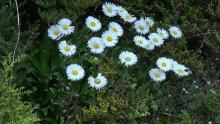
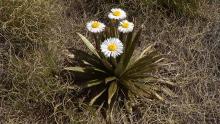
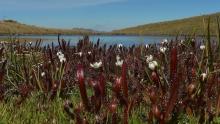
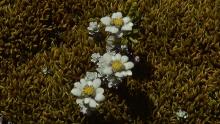
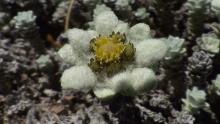

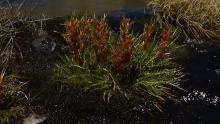
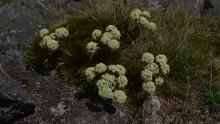
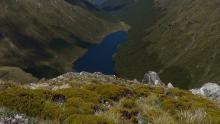


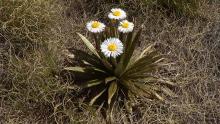
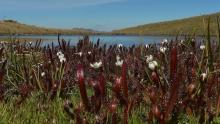


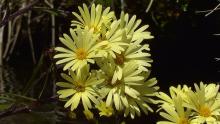
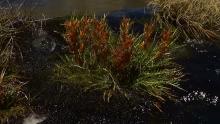
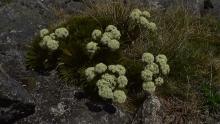
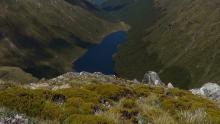
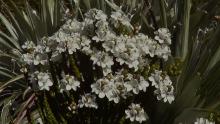
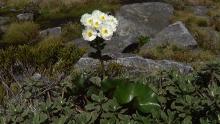

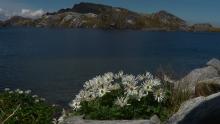
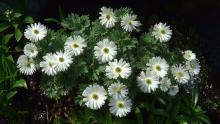
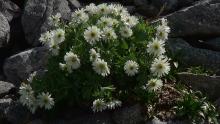
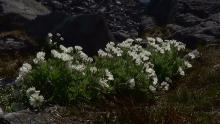
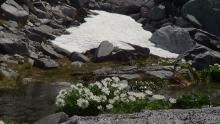

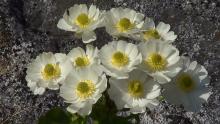
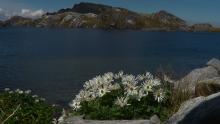
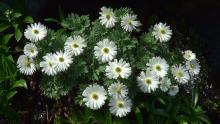
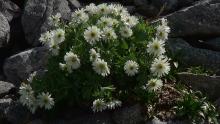
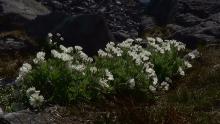
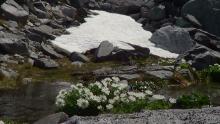
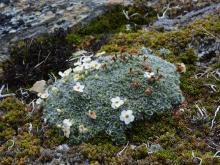
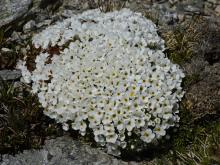
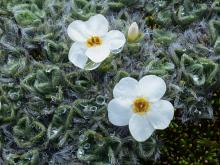
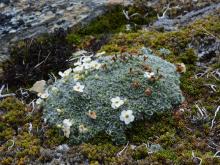
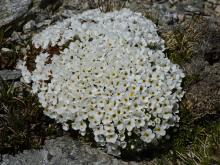
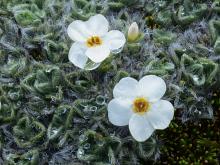
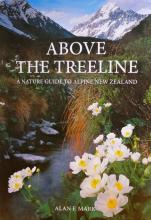

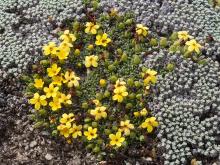
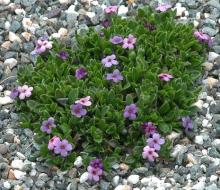
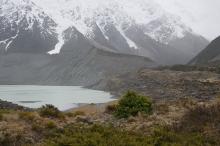
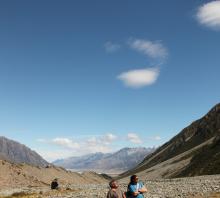

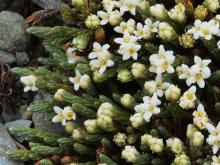
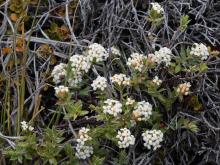
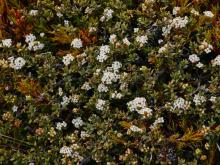

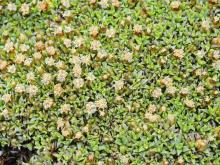
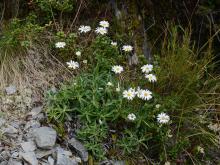

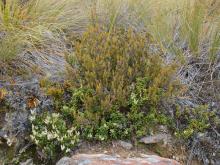

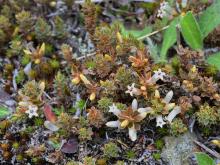
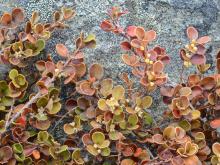
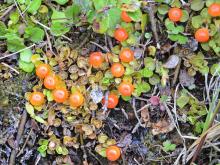

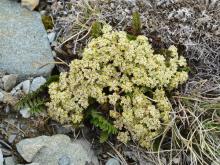
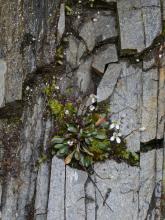
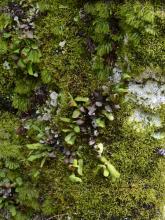
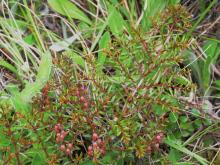

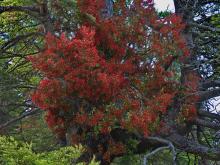
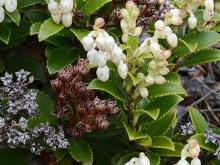
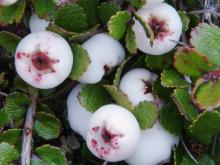
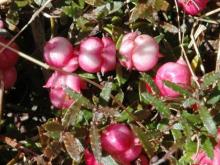
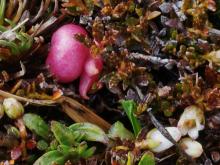
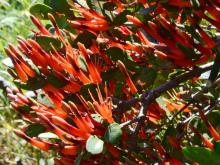
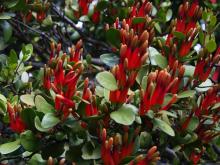
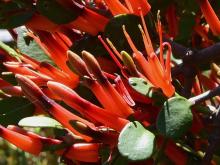
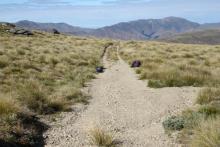
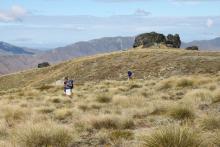
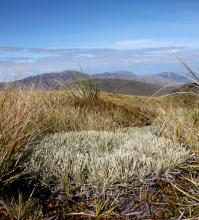
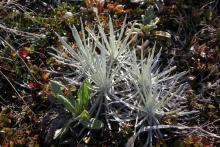
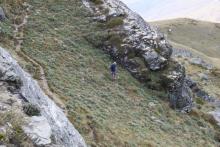
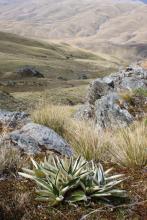
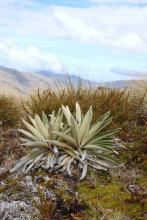
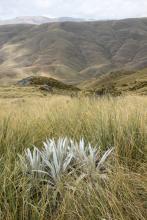
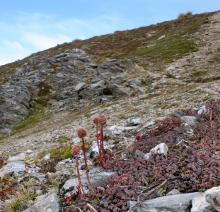

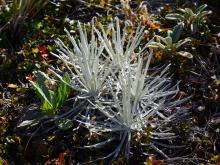
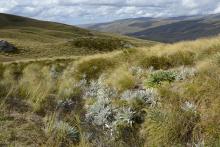
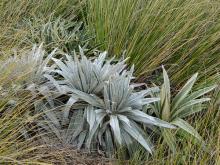
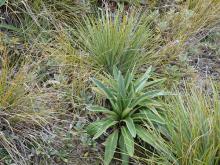
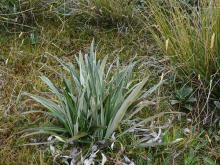
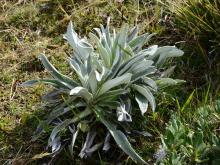
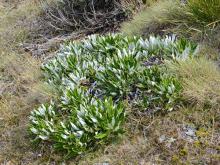
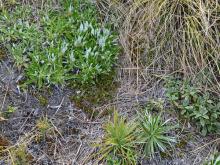
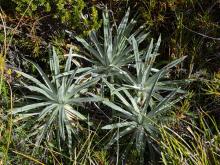
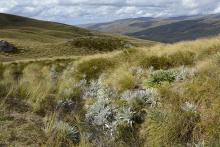
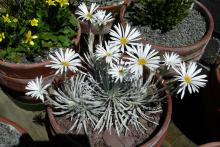
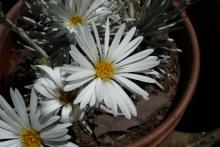
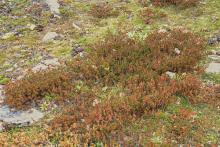
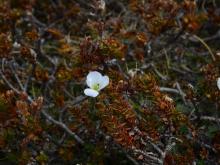
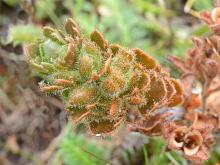
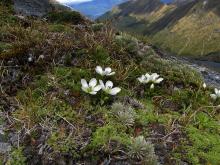
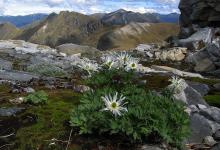
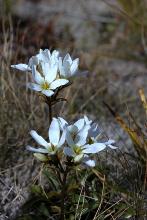
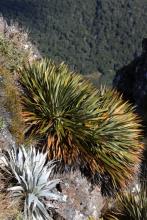

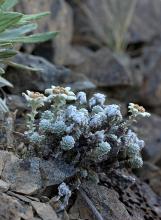
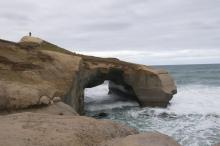
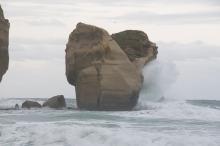
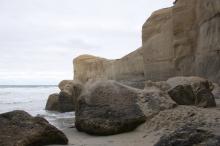
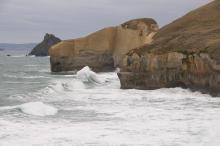
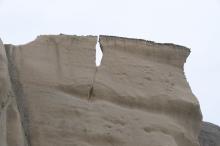
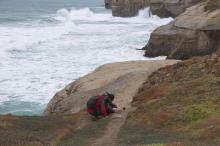
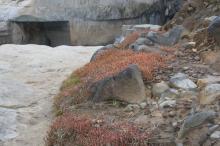
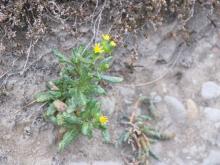
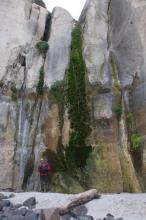
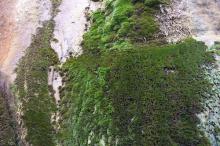
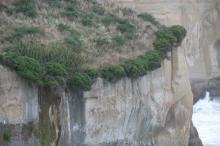
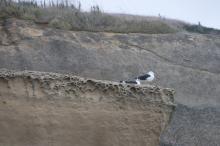
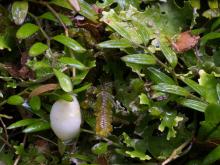
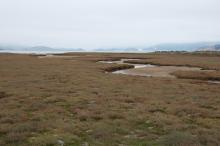
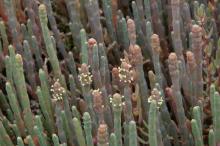
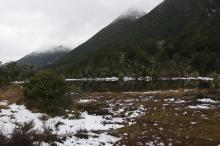
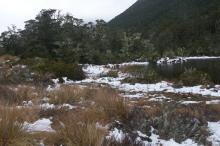
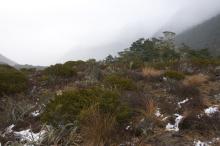
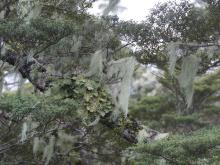
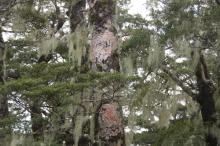
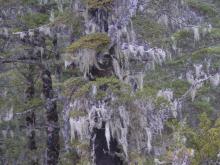
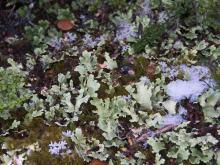

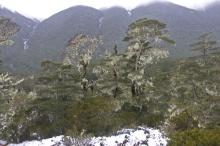

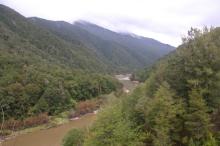
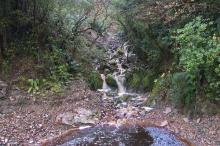
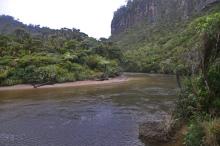
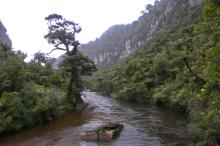
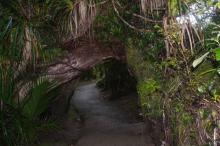

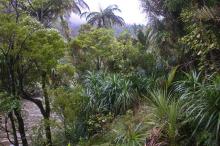
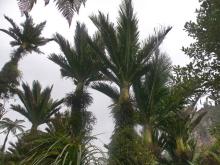
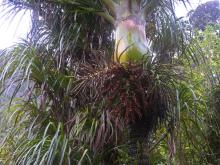
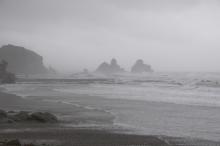
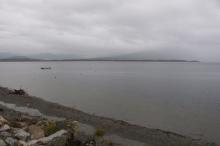
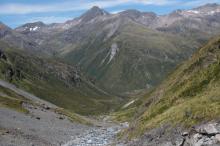

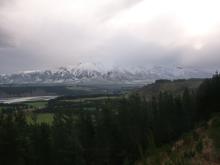
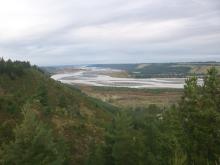
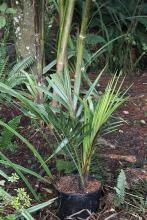
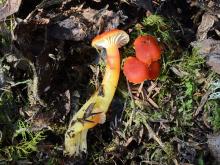
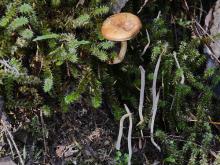
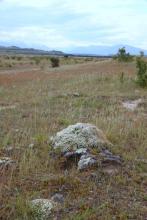
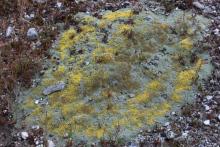
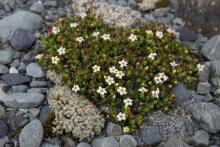
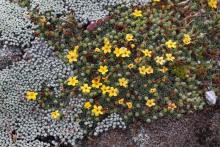
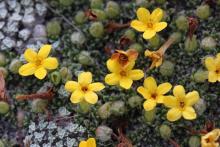
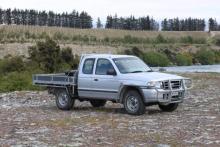
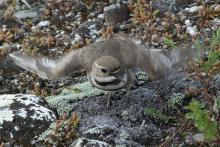
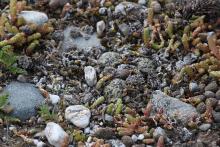

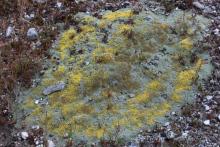
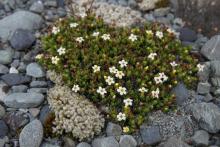

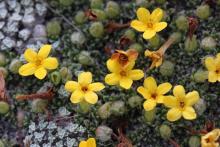
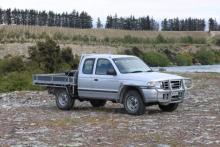
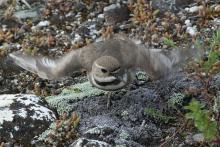
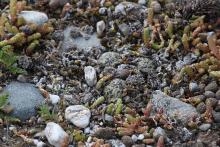
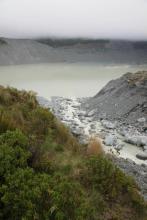
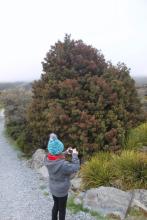
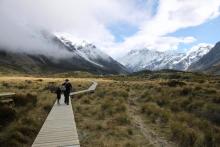
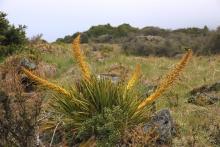
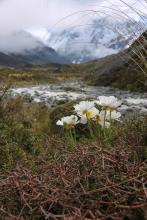
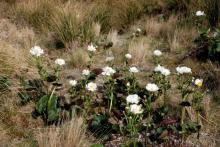
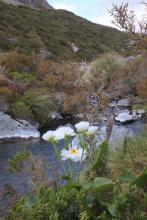
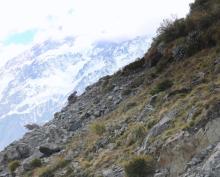
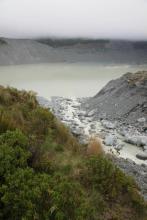
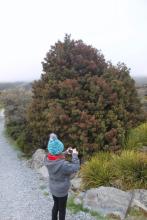
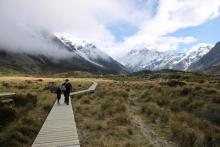
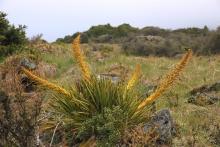

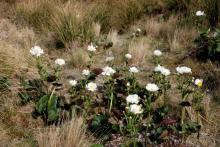
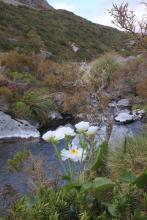
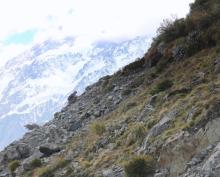
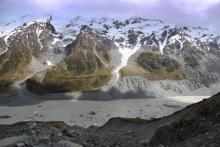
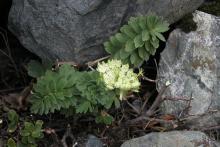
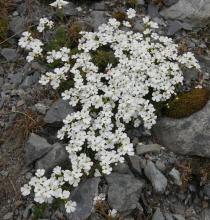
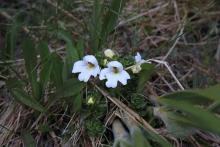
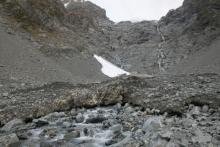
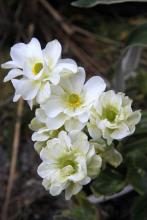
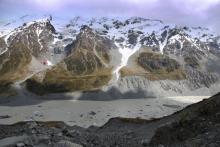
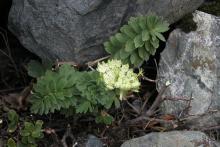
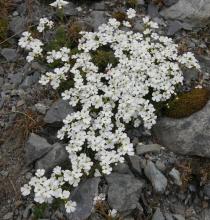
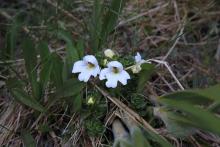
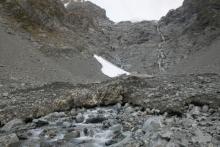

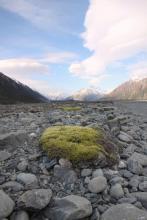
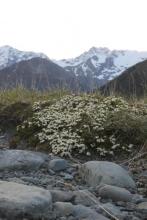
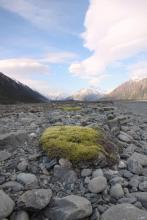

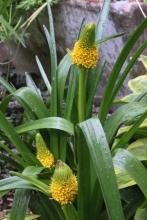
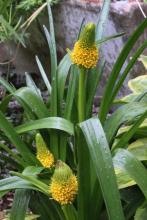
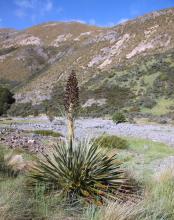
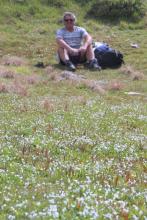
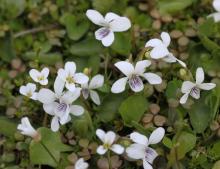
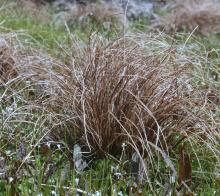
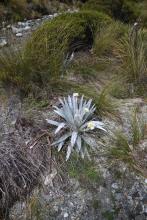
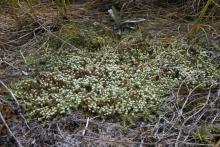
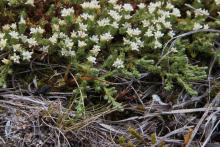
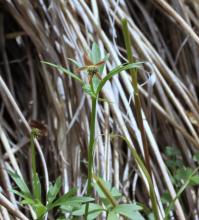
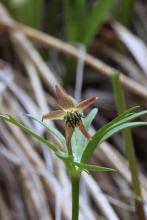
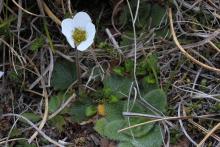
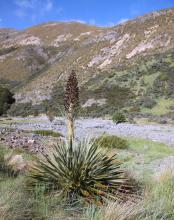
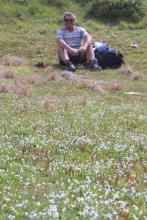
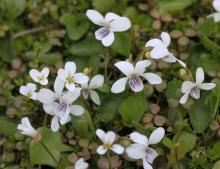

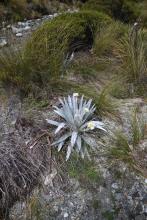
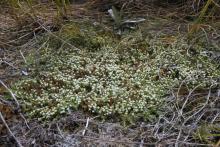
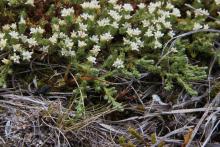
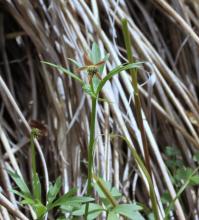
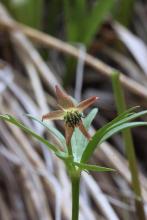
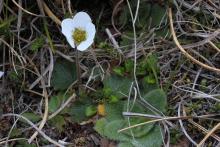
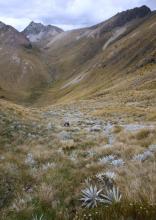
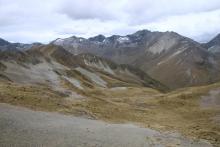
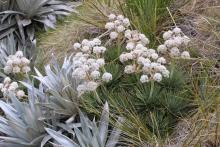
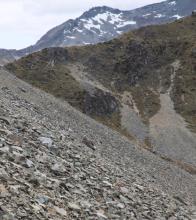
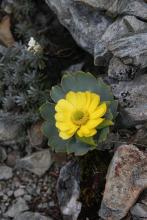
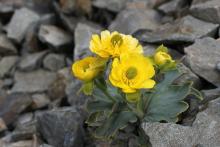
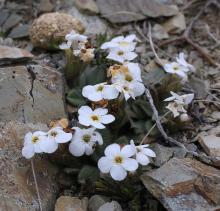
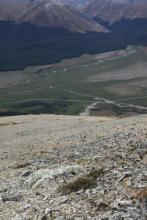
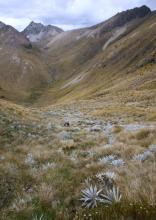
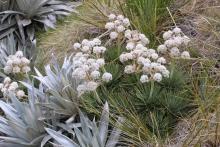
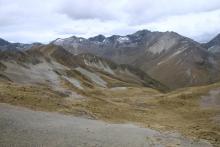

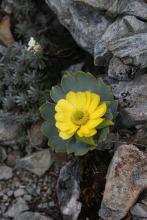
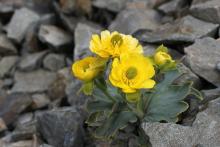
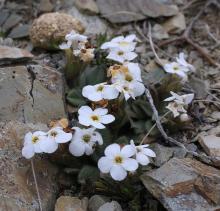
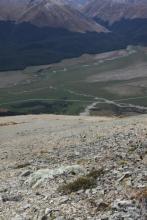
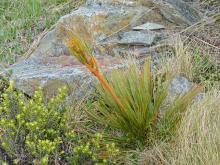
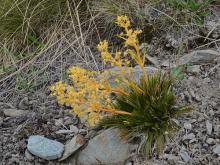
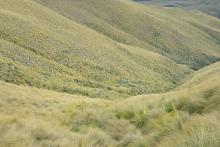
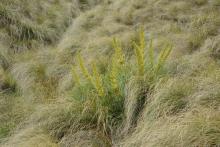
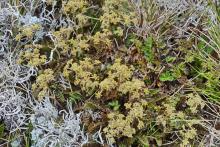
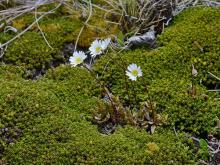
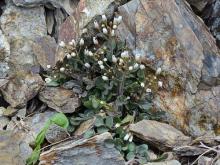
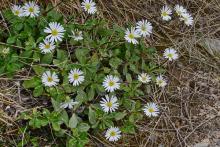
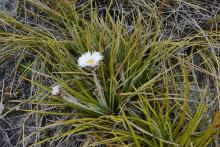
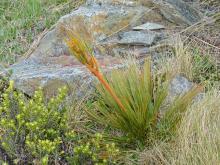
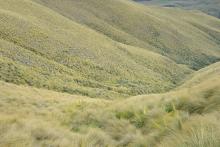
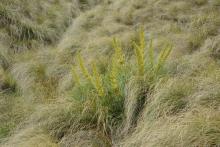
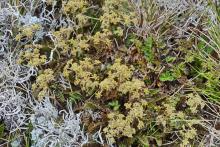
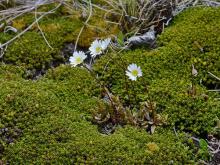
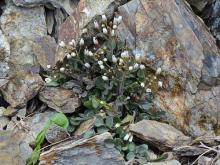
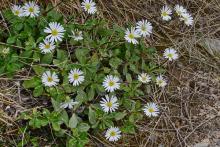

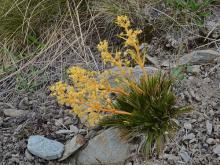
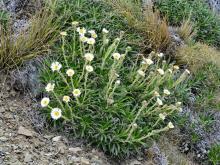
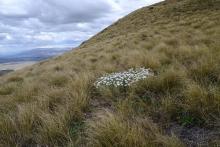
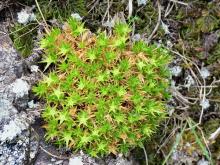
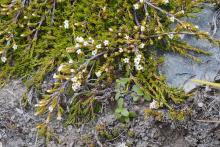
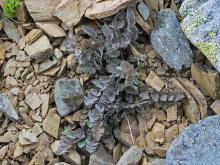
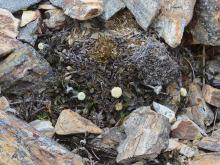
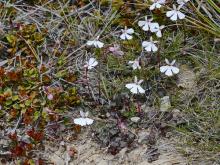
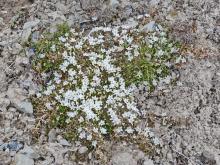
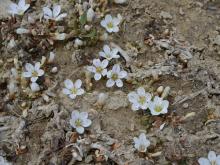
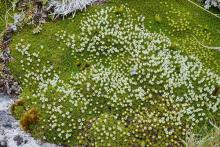
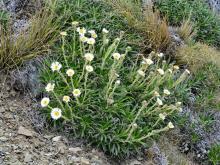
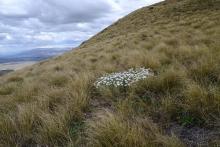
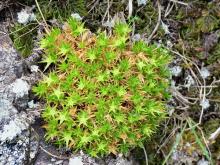
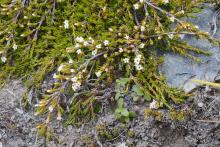
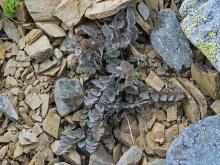
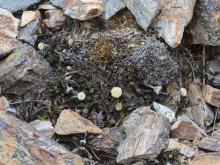
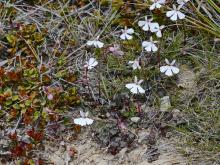
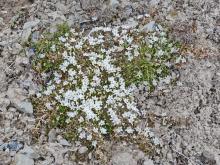
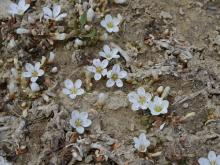
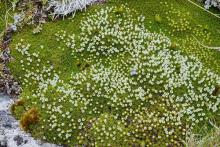
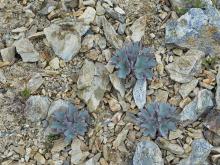
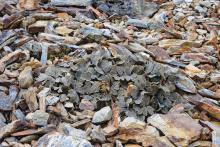
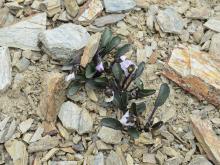
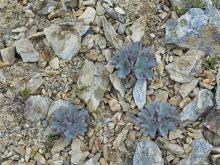
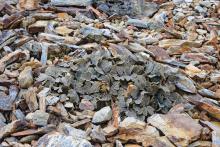
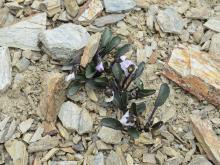
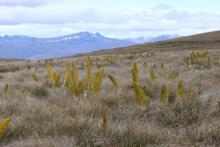
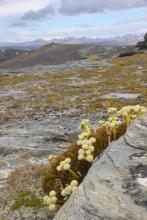
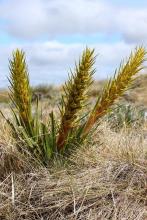
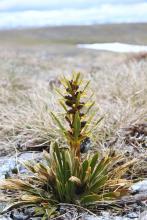
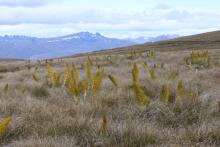
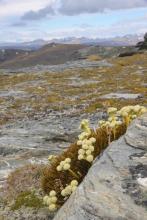
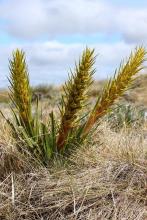
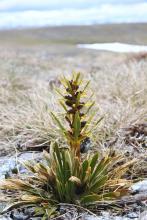
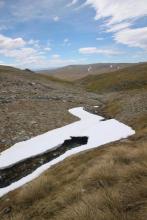
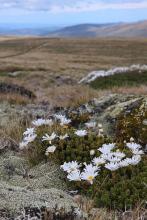
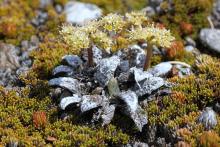
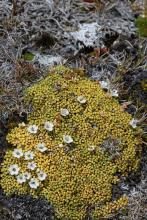
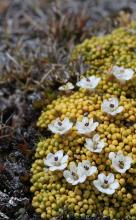
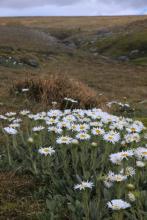
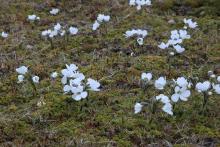
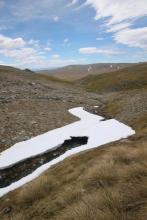
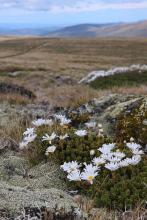
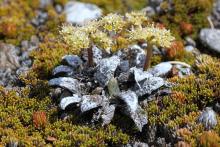
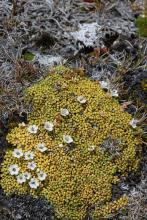
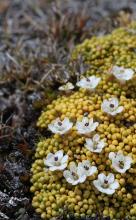
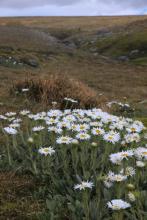
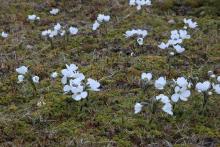
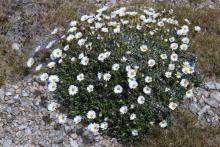
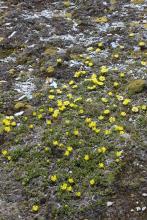
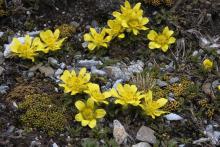
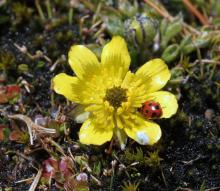
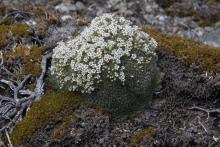

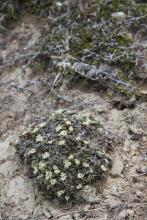
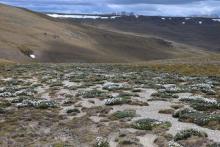

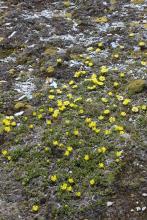
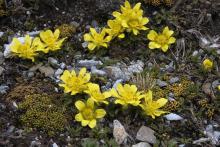
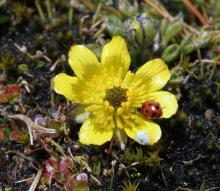
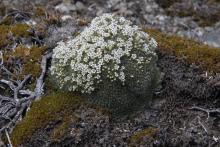
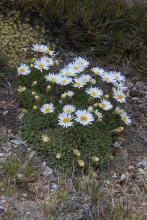
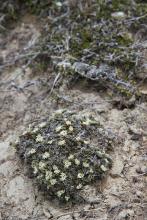
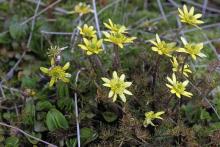
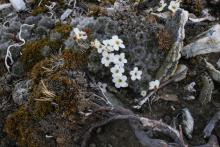
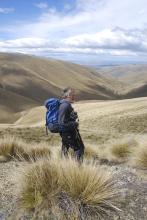

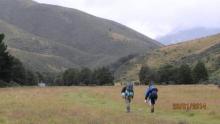
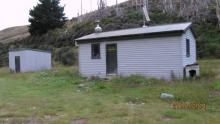
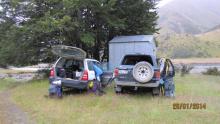
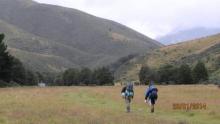

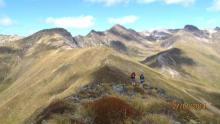
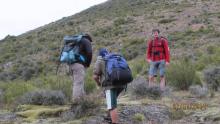
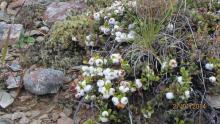
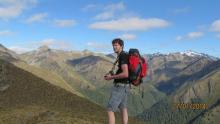
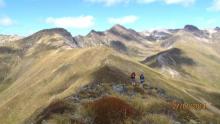
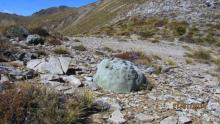
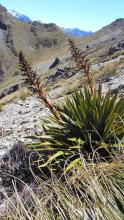
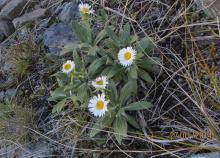
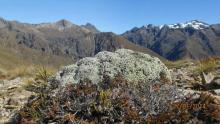
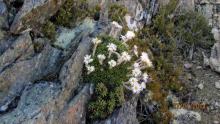
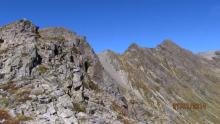
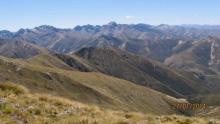

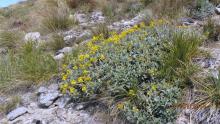
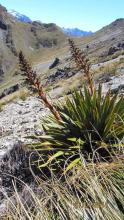
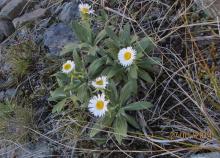

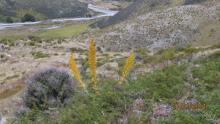

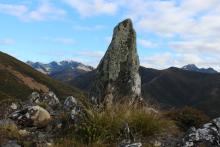
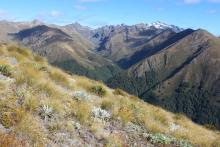

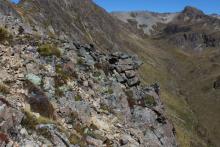
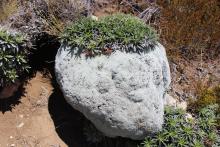
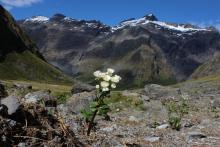
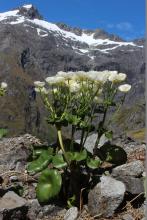
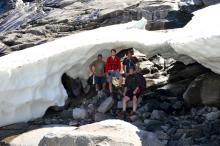
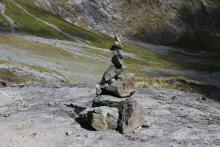
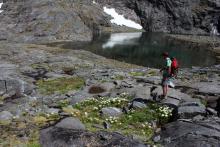
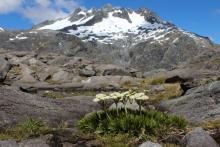
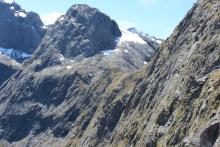
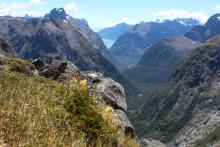
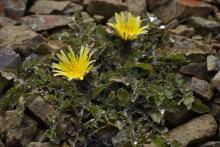
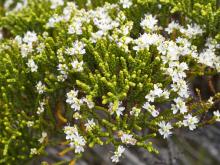
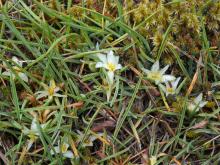
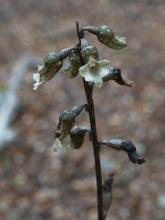
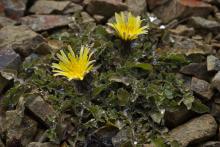
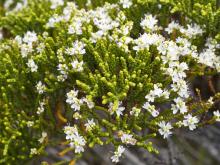
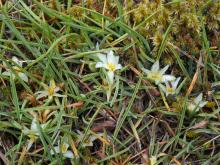
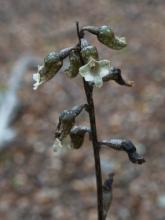
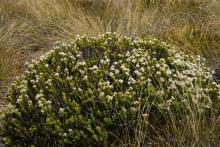
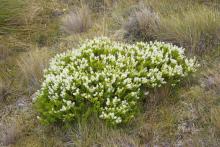
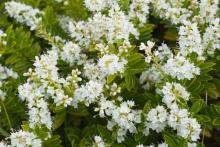
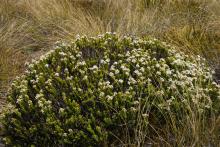
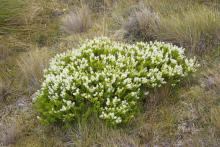
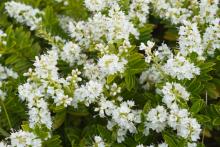
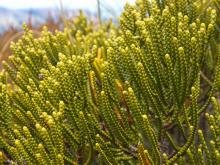
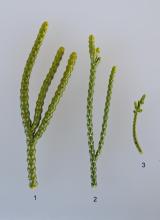
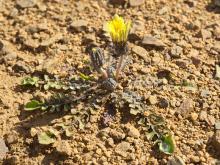
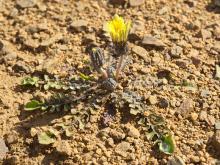
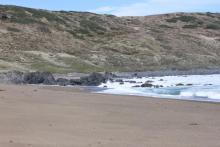
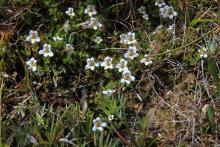
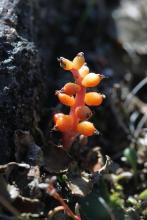
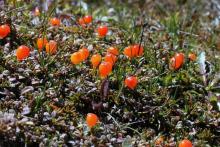
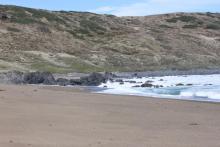
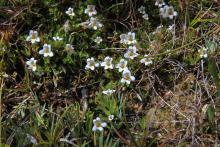
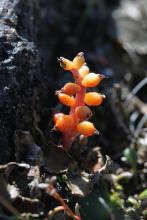
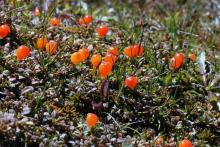
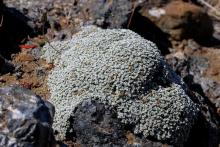
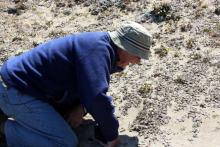
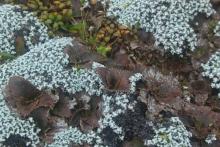
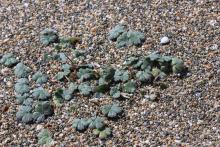
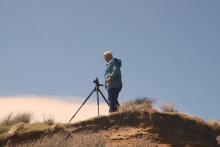
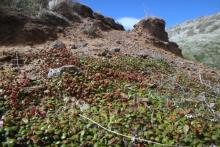
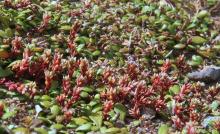
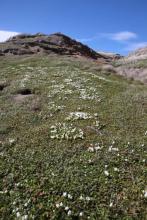
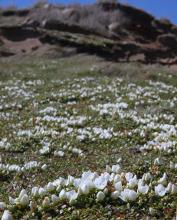
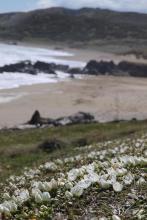
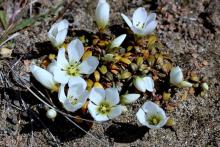
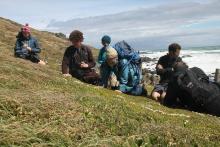
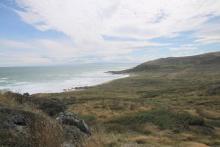
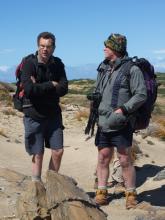
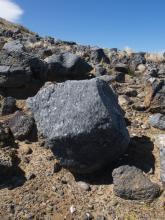
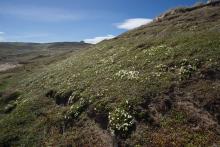
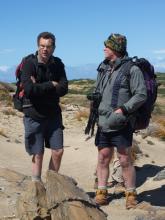
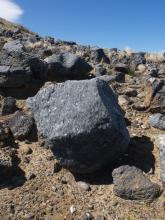
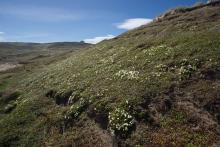
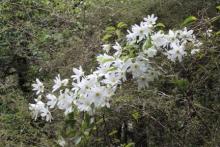
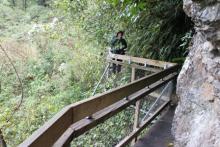
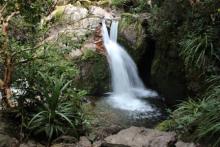
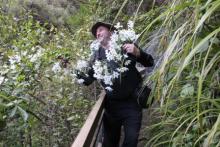
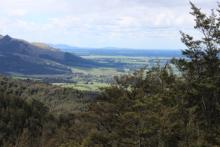
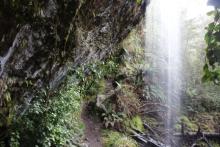
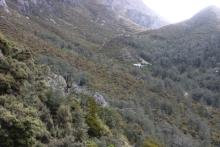
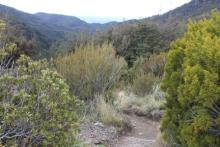
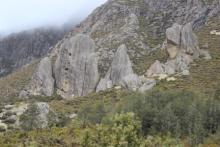
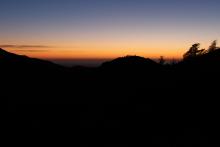
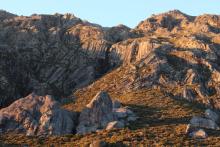
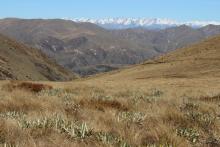
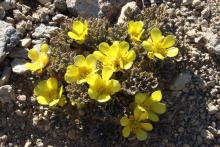
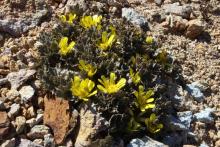
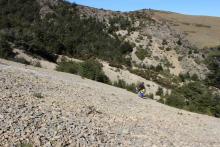
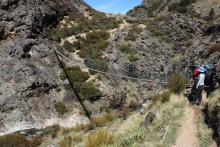
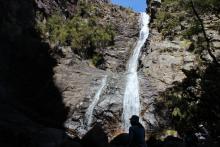
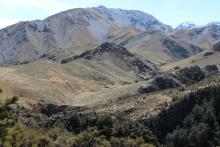
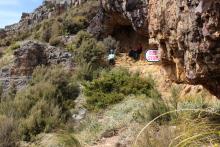
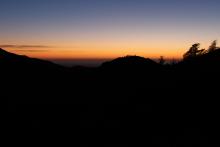
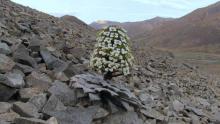
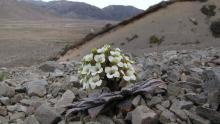
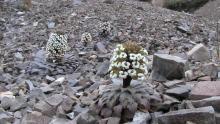
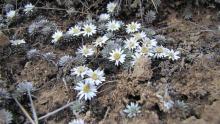

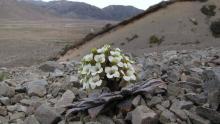
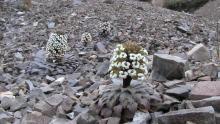

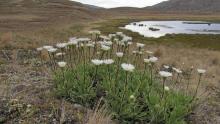
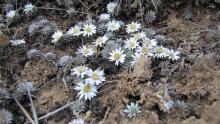
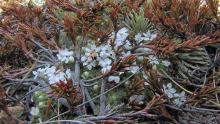
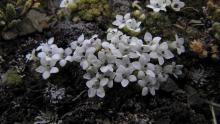
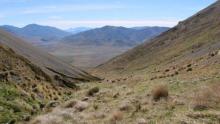
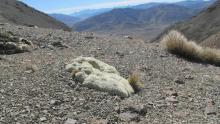
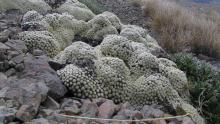
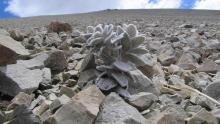
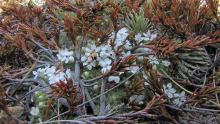
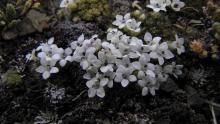
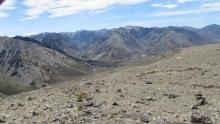
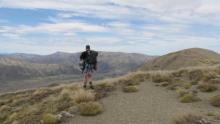
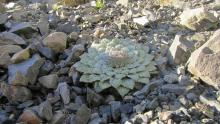
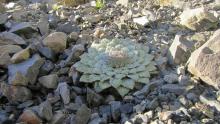
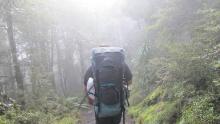
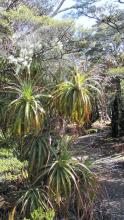

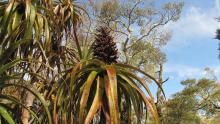
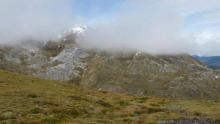
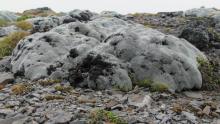
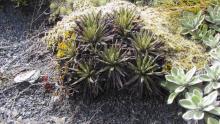
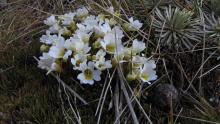
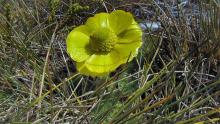
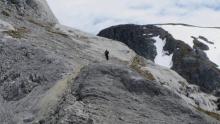
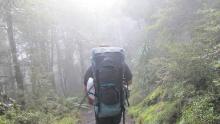
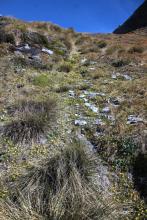

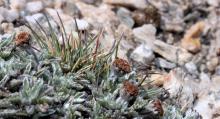
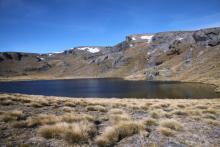


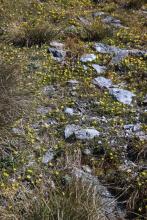
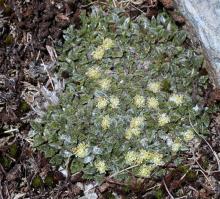
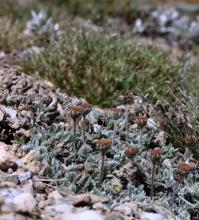
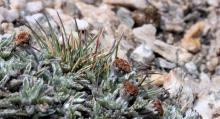
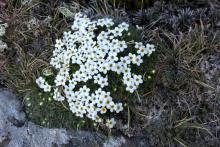
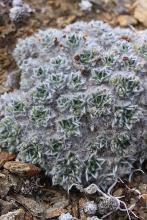
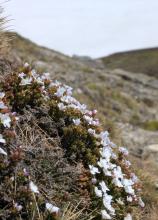
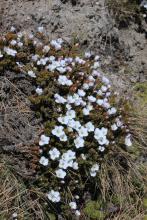
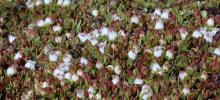
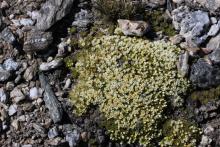
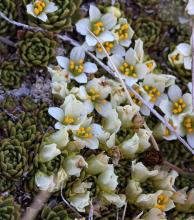
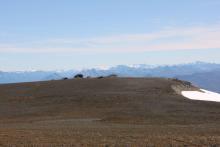
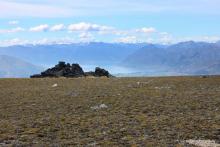
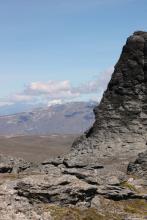

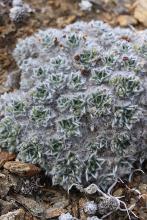
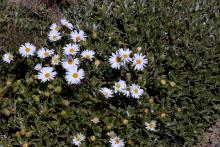
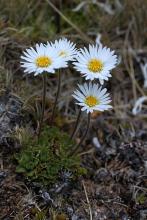
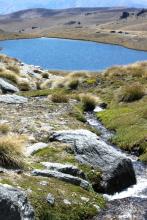
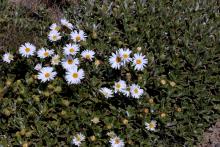

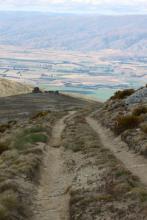

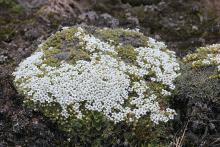

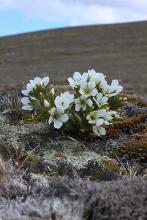
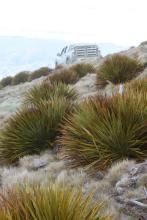
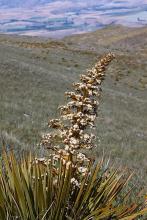
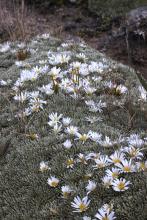

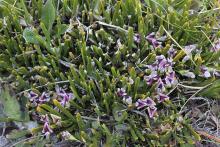
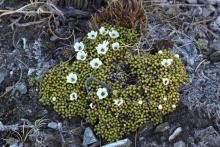
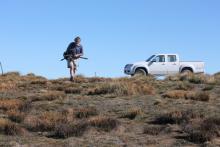


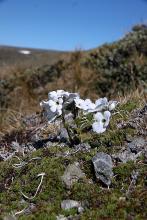
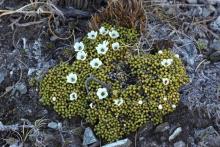
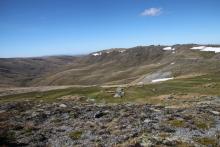
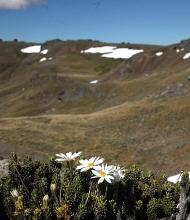
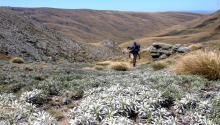


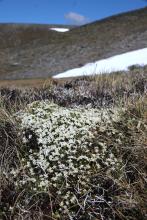
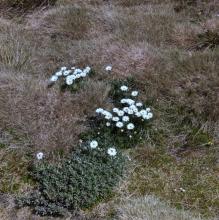
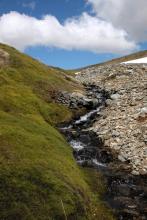
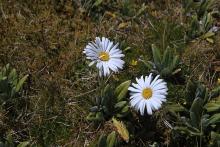
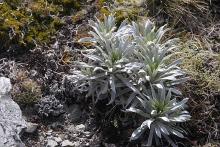
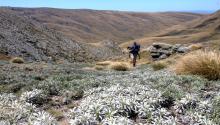
Rightio
Looks like i can only post a few pics at a time (i've currently exceeded my broadband allocation and on dial up for a couple of days yet >:().